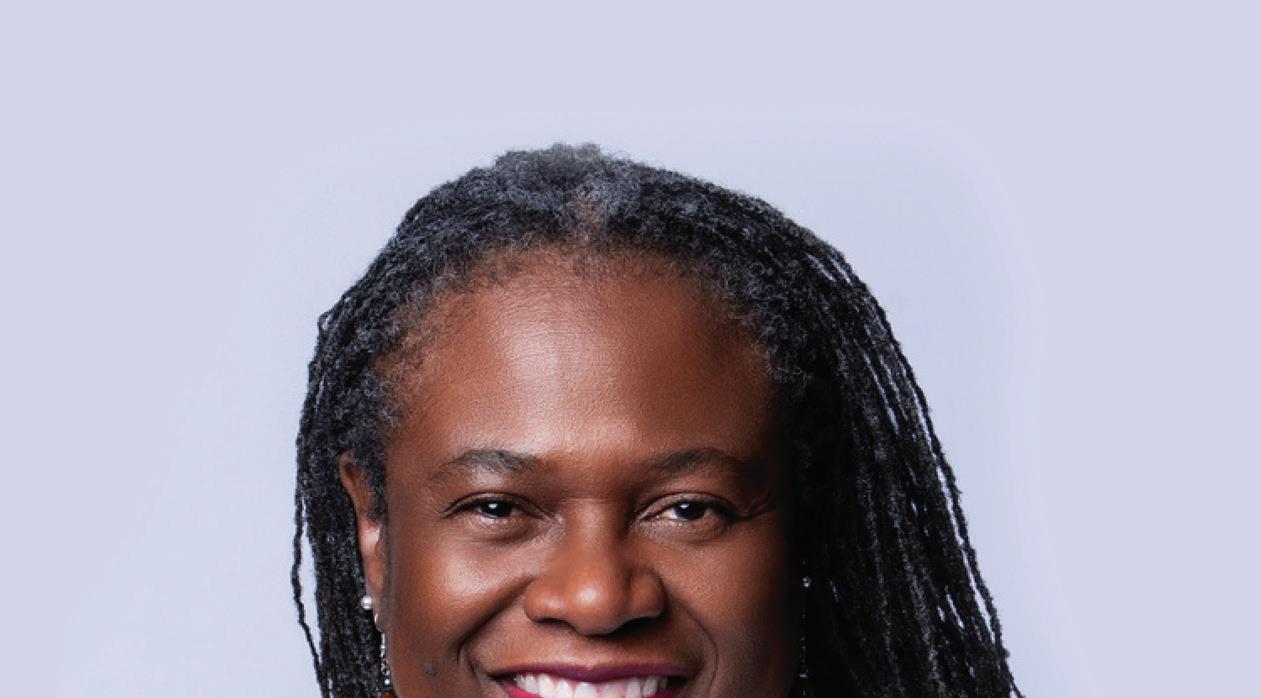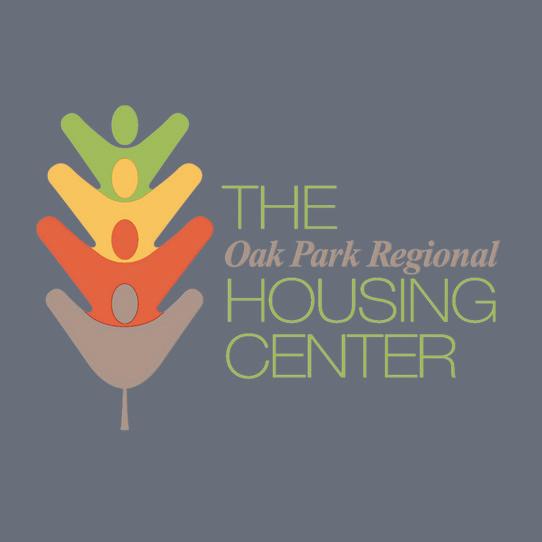



















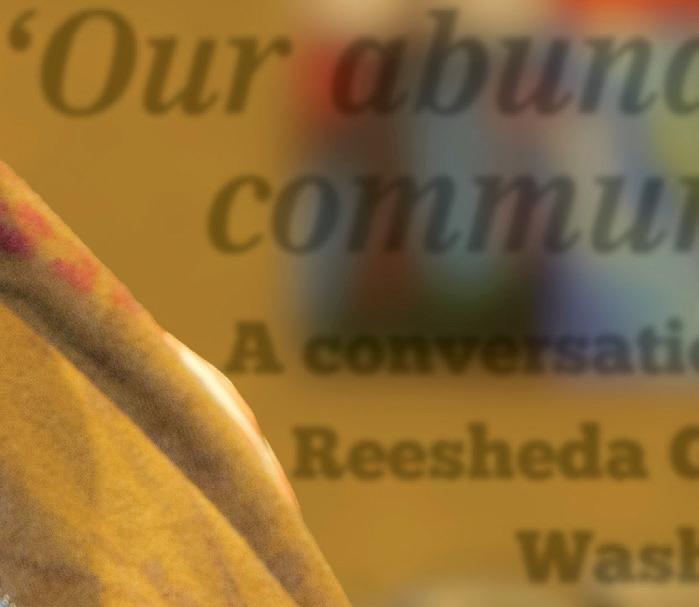
‘Our abundant community’
A conversation with Reesheda Graham Washington










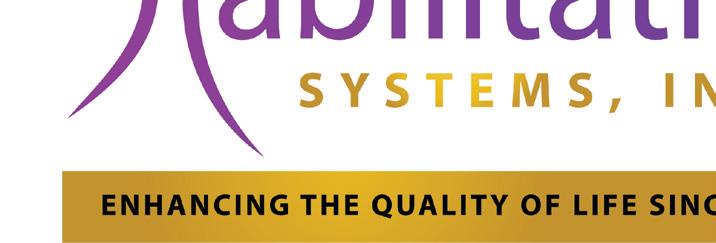

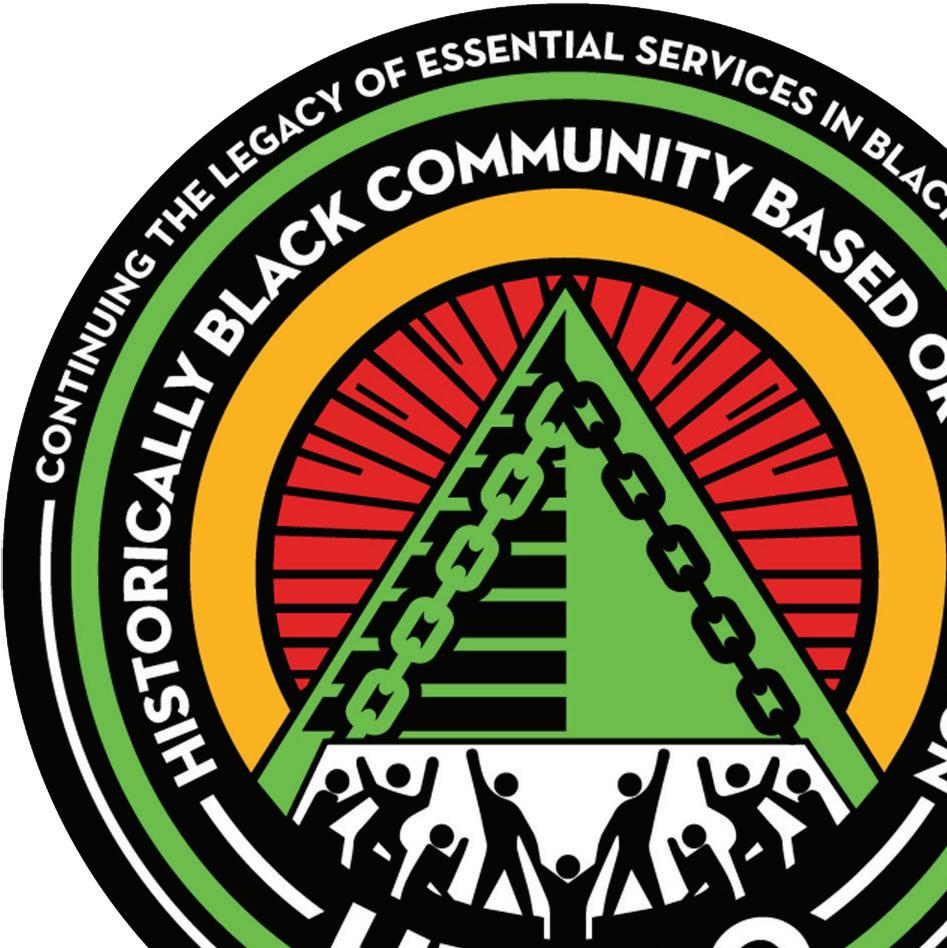


For several years, HSI has been cultivating the concept of Historically Black Community Based Organizations (HBCBOs) to honor the legacy, servant leadership, community impact and sustainable strategies so important to this select group of agencies. HSI’s roots grew out of Claire Christian Methodist Church, still located in North Lawndale, and its community ministry. Black Churches and Black Settlement Houses were the forerunners of HBCBOs and are an important part of this narrative.
Toward this end, HSI will be launching its second documentary, “Heading West, Part II, If the Lions Don’t Tell Their Story, (...the hunters will take all the credit).” Our first documentary was entitled: Heading West (https://www.youtube.com/watch?v=VNisTfoQgjQ), depicting the story of the Great Migrations of African Americans from the South to the Westside of Chicago. On December 12th at Malcolm X College, our annual fundraiser will premier this new documentary that will also feature many of our HBCBO leaders, elders and ancestors.
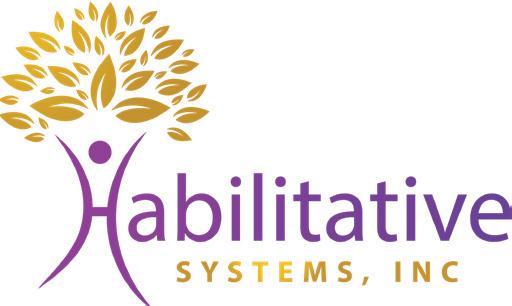

• Comprehensive Behavioral Health and Human Services since 1978
• Headquartered on Chicago’s Westside
• Over 100 Employees
• 16 Chicago locations in Austin, West Garfield, North Lawndale, Humboldt Park, Bronzeville, and Englewood
• CARF accredited since 1991; Medicaid Certified and Licensed
• Serves over 8,000 persons annually
• Constructed 160 affordable housing units for seniors and persons with disabilities
• Participated in and led various community collaboratives since 1984.
• Launched new website: www.habilitative.org

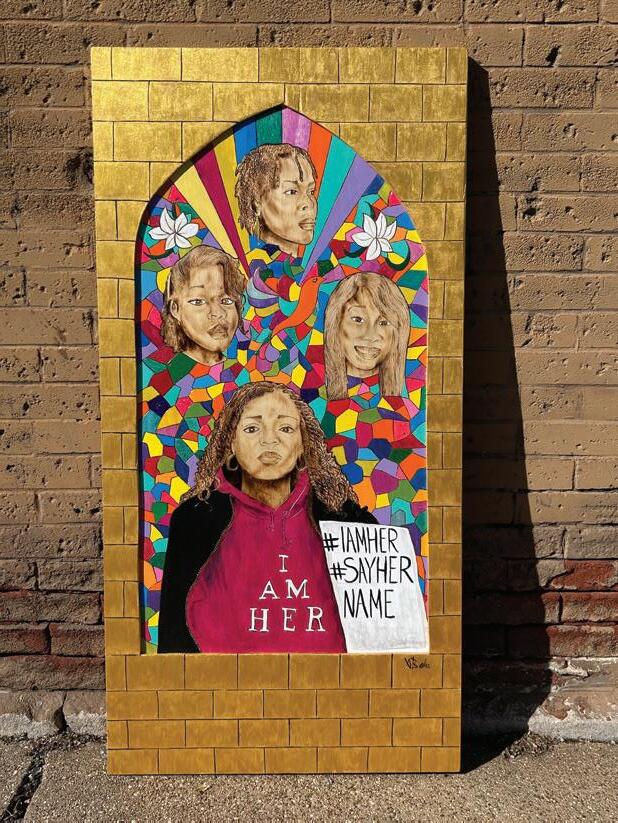
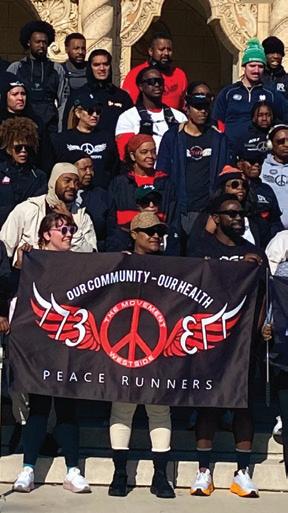
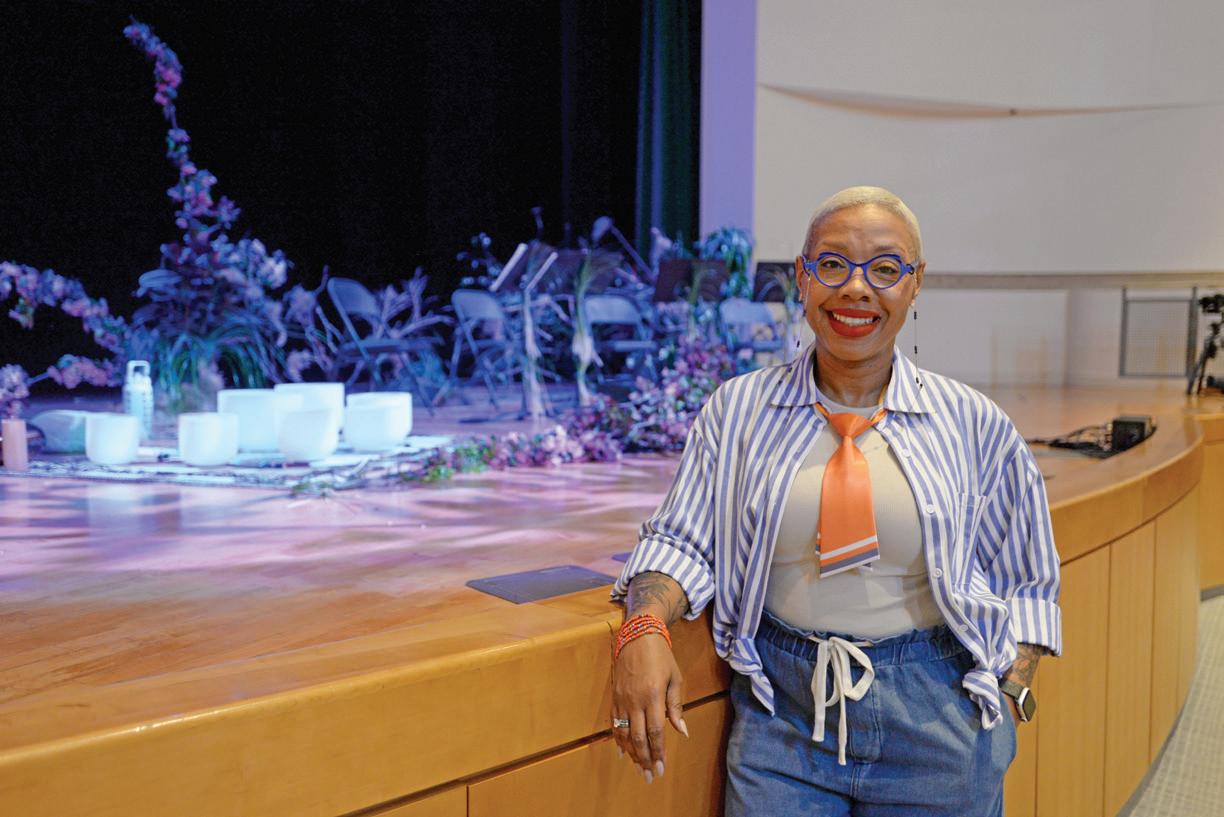

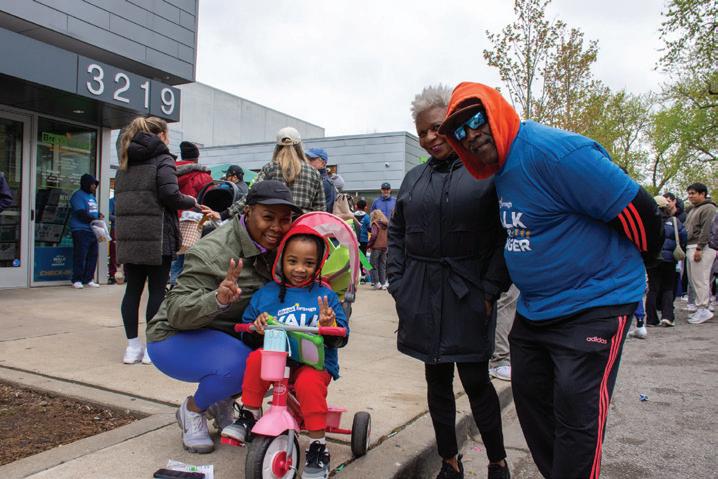
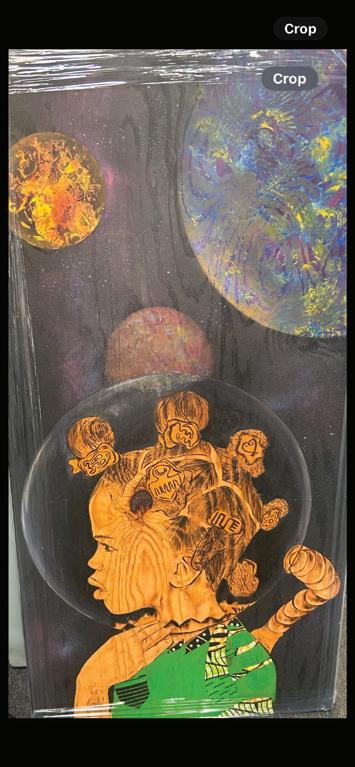

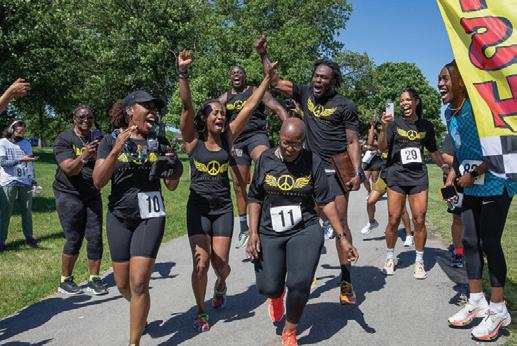
Interim Executive Director
Max Reinsdorf
Contributing Reporters
Risé Sanders-Weir, Jessica Mordacq, Deborah Bayliss, Hector Cervantes
Development Manager
Mary Ellen Nelligan
Design/Production Manager
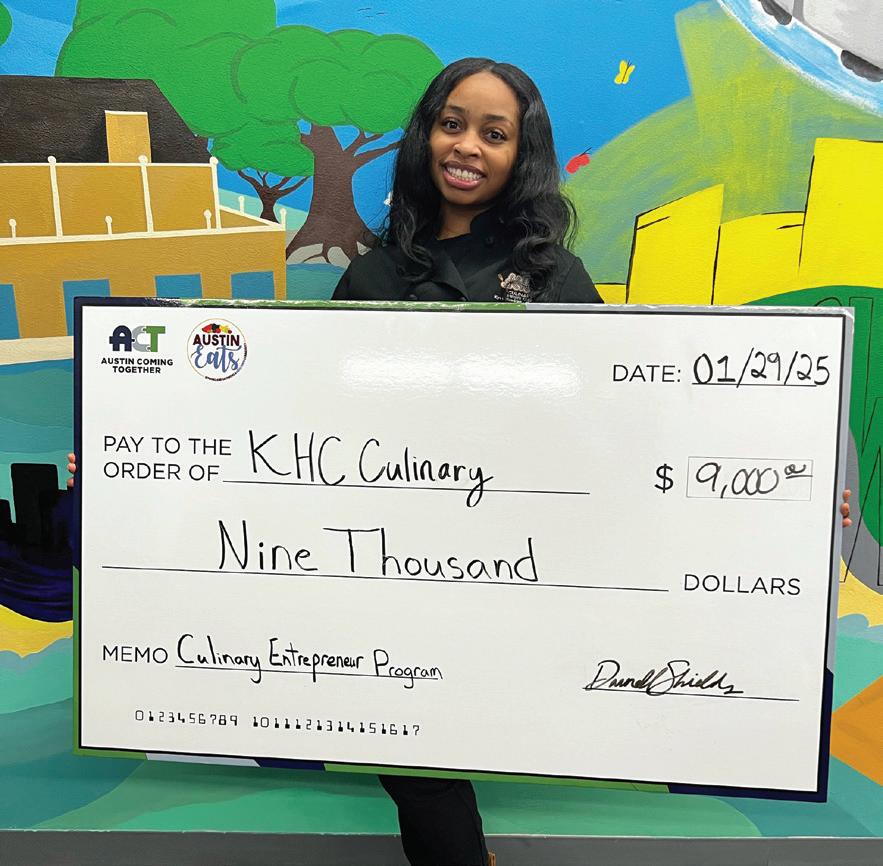
Andrew Mead
Editorial Design Manager
Javier Govea
Project Designer
Susan McKelvey
Digital Manager
Stacy Coleman
Contributing Photographers
Erica Benson, Todd Bannor
Marketing & Adver tising Associate
Ben Stumpe
Senior Media Strategist
Lourdes Nicholls
Circulation Manager
Jill Wagner
Senior Advisor
Dan Haley
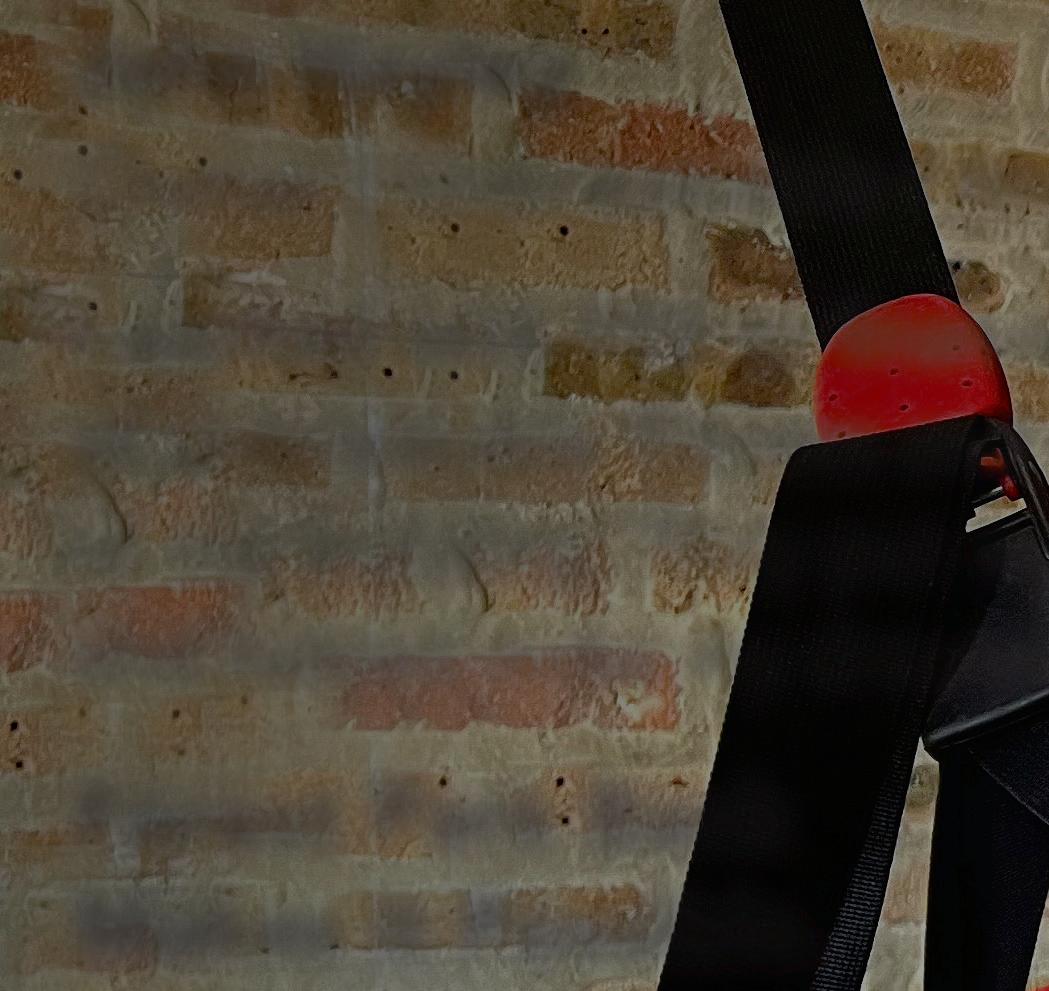
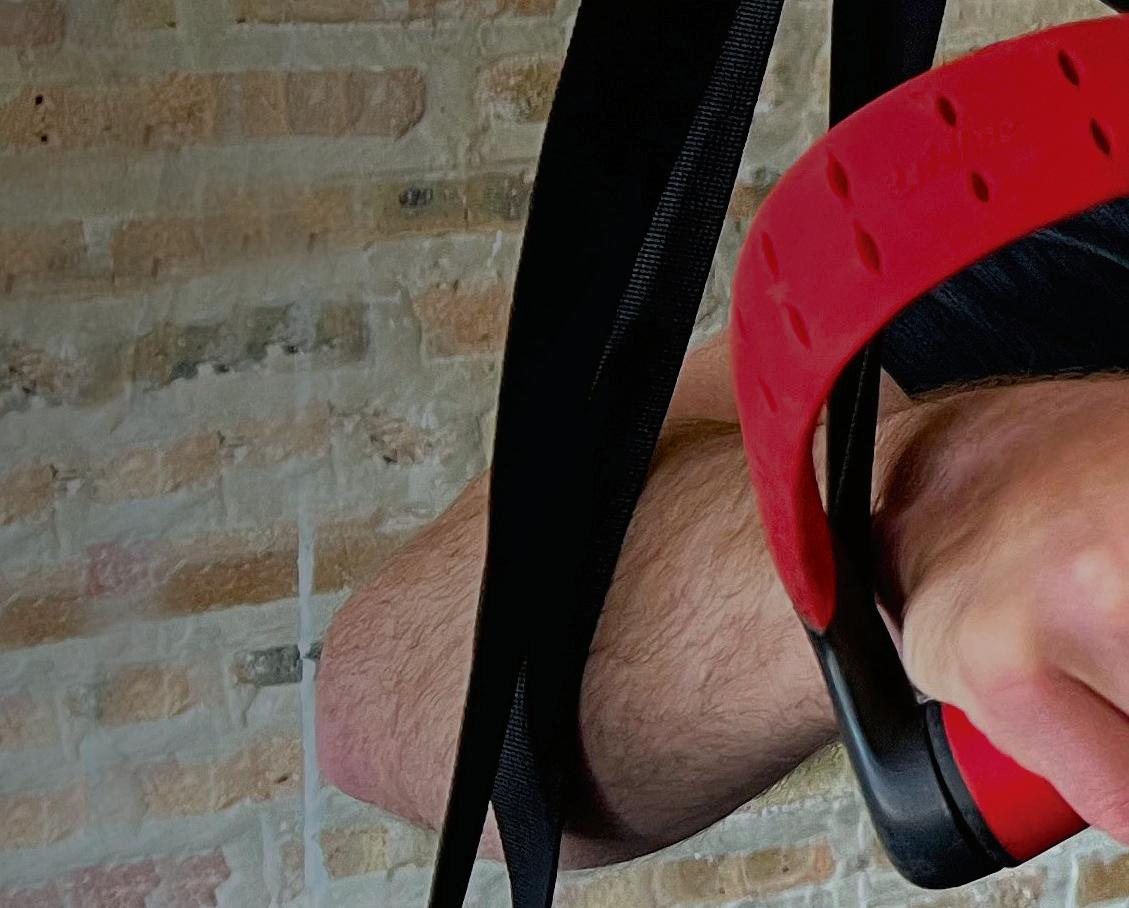
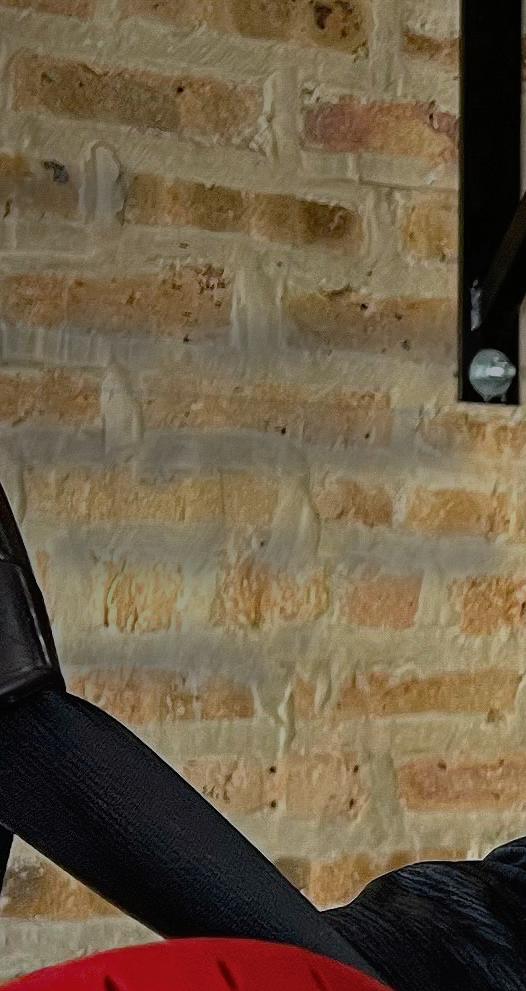
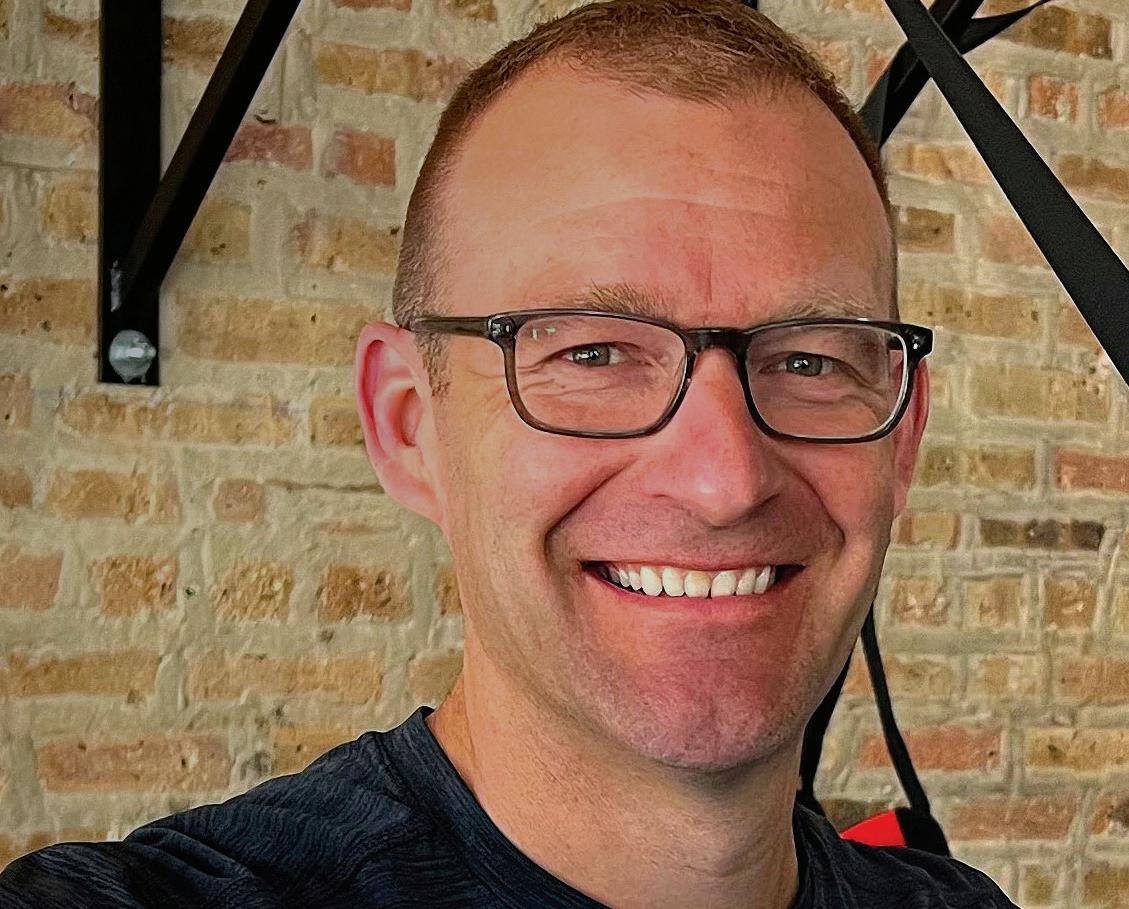


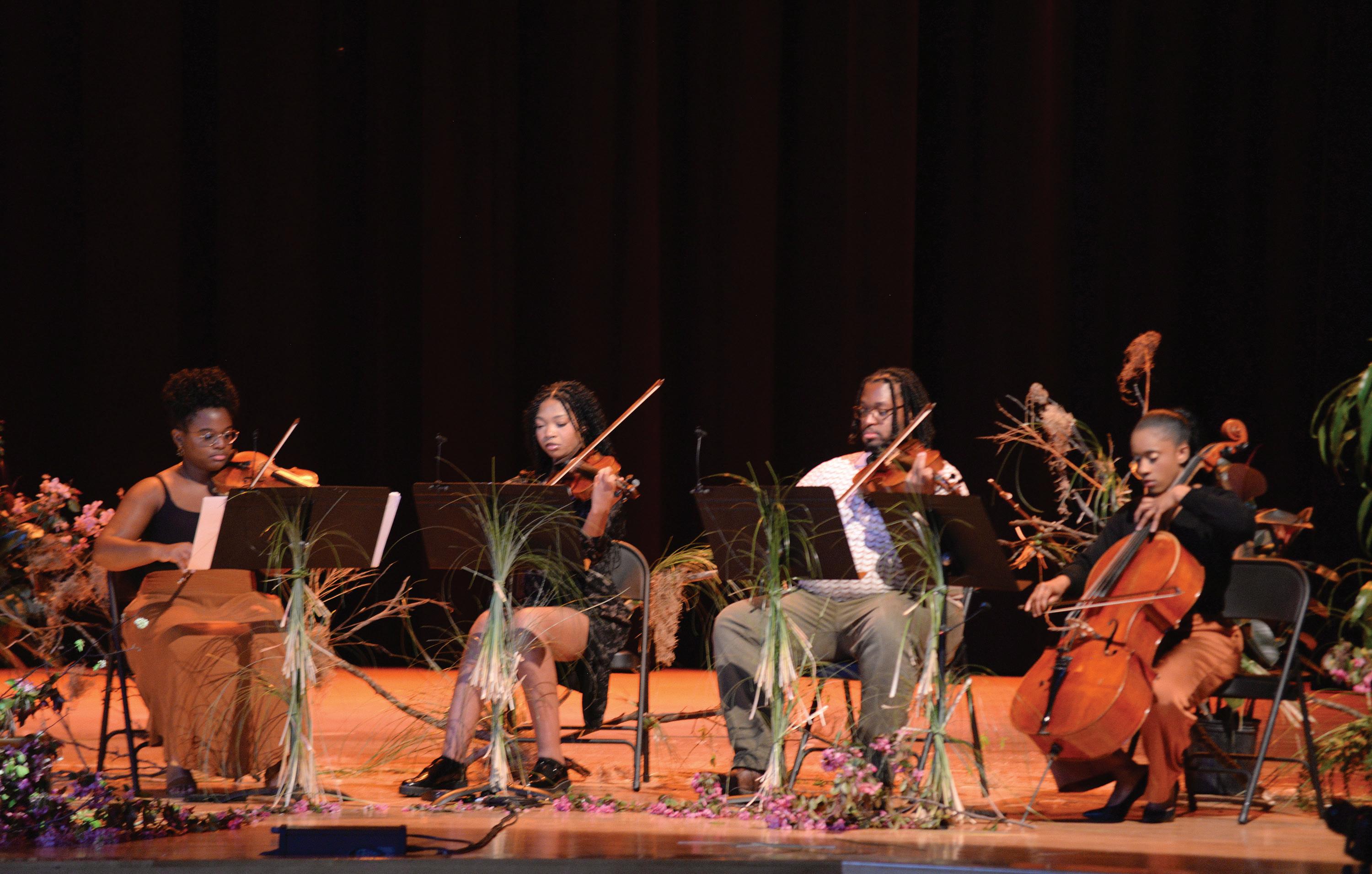
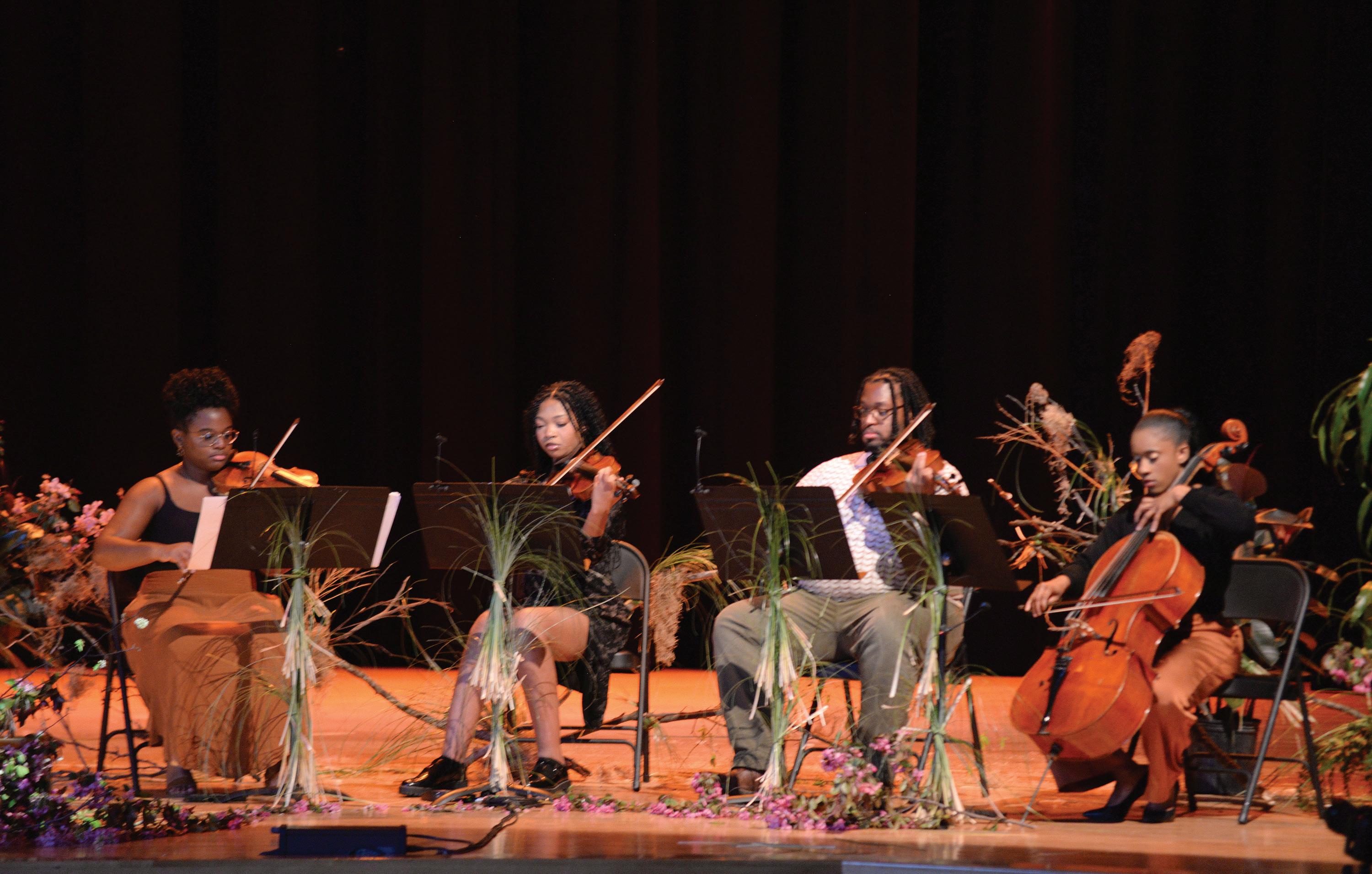
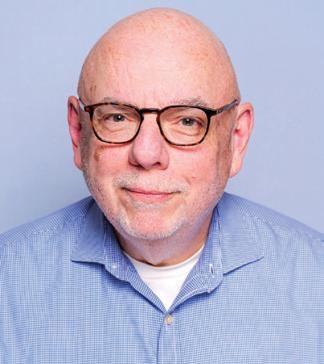
outlets tell that perception is changing Slowly the stories we tell about ourselves are growing from primarily tales of disinvestment and chaos to authentic reporting about a community rising and taking ownership. In this spring’s West Side Magazine, we interview Reesheda Graham Washington. She’s an Austin native and the executive
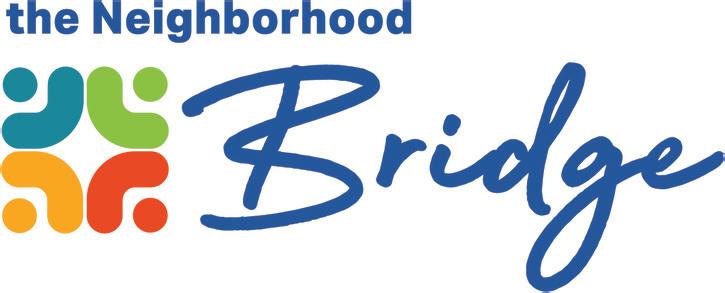
It is an apt description of the neighborhoods we cover each week. This issue is filled with stories which affirm the vitality and the energy ofthe West Side we know
Thanks for reading.
Dan Haley, Growing Community Media’s interim editor











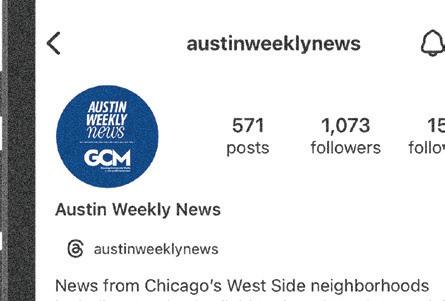
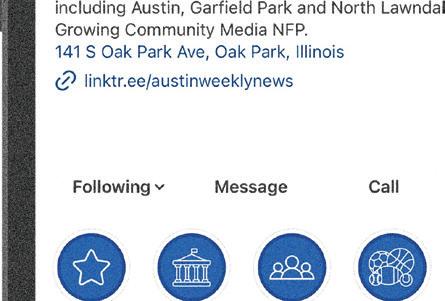
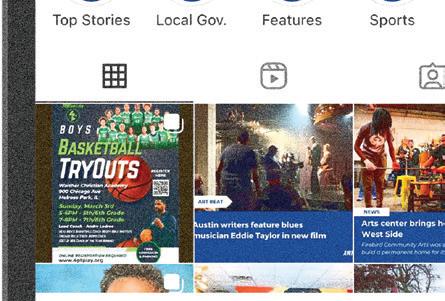




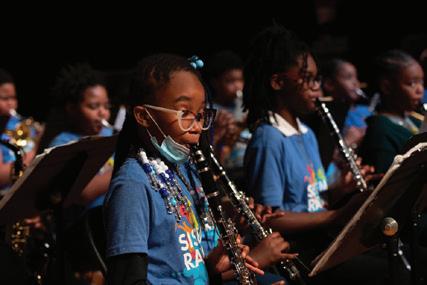
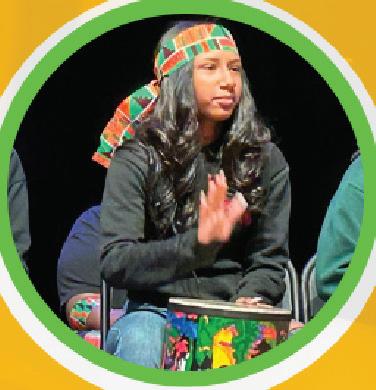










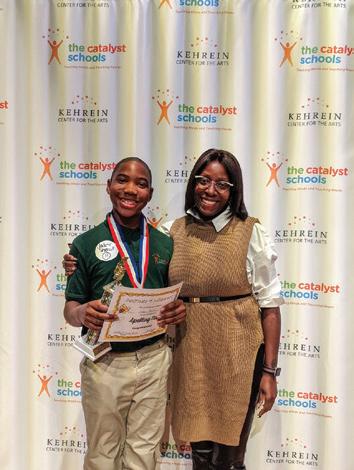
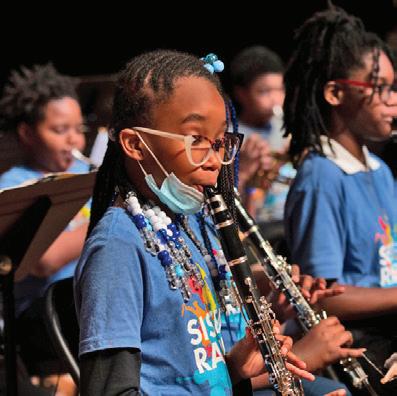







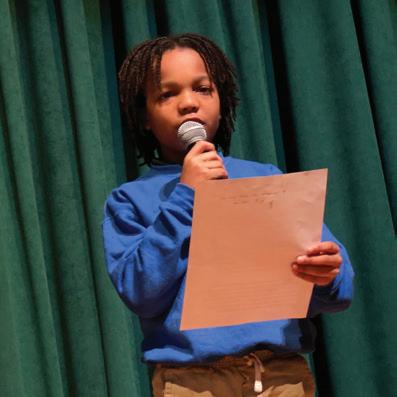
Couple runs monthly guided food tours to showcase area restaurants, particularly Black-owned




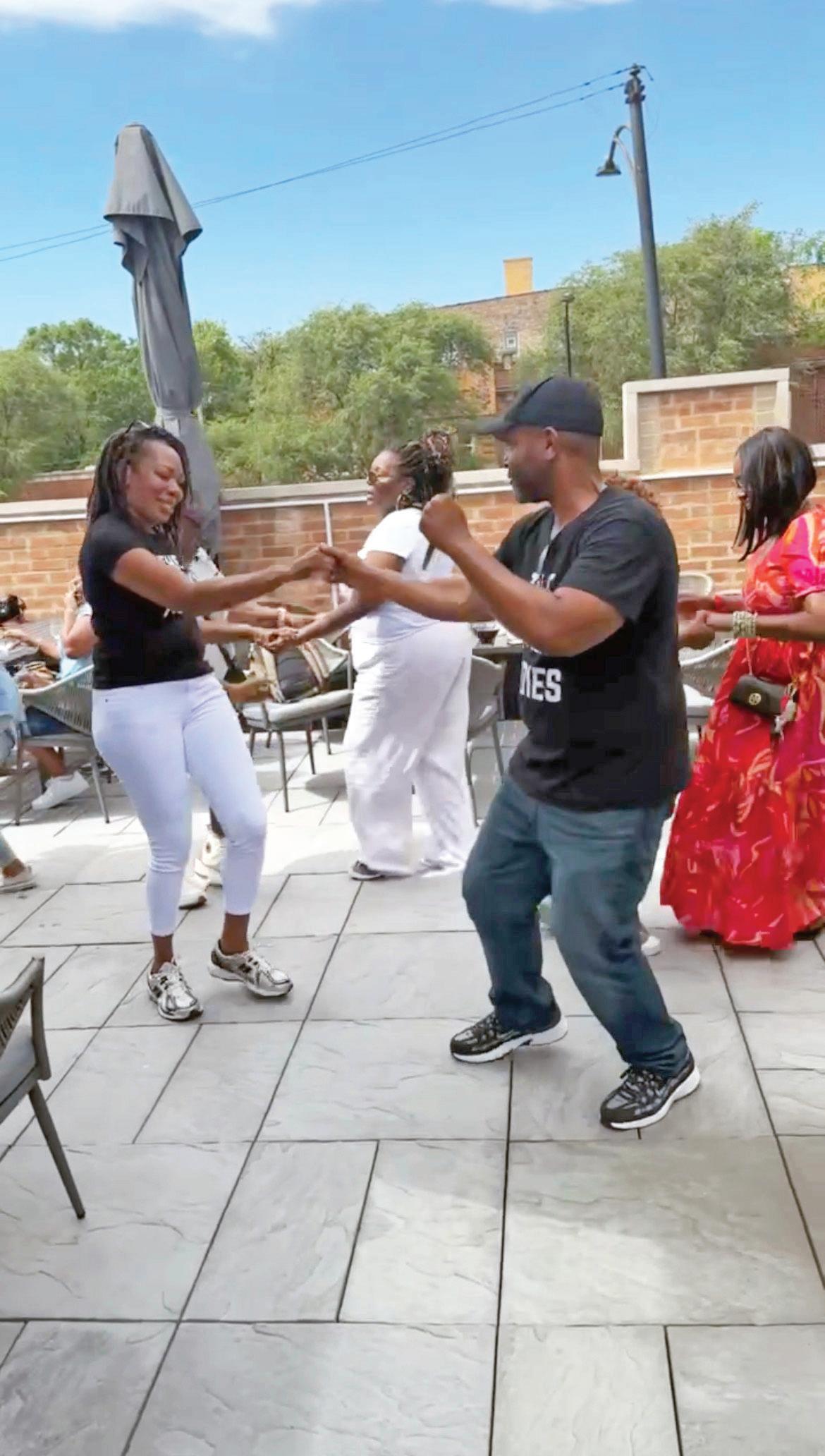
Dino and Coretta Dean have been dining together for more than 40 years. They’ve turned a shared passion for food into a social media presence that has now expanded into tours that introduce others to the excellence they have tasted.
The idea first for med while eating out on vacation.
“We love to travel. When we go out of town, we look for restaurants,” Coretta Dean said. “We were like, it would be really nice to tell everyone about it and document it on our YouTube channel.”
The Black Foodies as a brand was born.
“The natural progression was to start showcasing restaurants in our area too,” said Dino Dean. “Doing what we call community service for the local restaurants scene, we have a lot of good connections, and we made a lot of good friends in the industry.”
Expanding into guided tours seemed like a good next step. In 2019 the couple hosted their first tour for 25 friends and family. It was a success, but then … we all know what happened to inperson fun in early 2020.
When COVID eased up, they decided to try again. The occasion was a family reunion with more than 100 guests, filling two buses
“In lieu of a picnic or some type of cookout,” Dino Dean said. “We decided to we would do a tour.”
The reunion dined at several restaurants, giving out-of-towners a sampling menu of Chicago. One stop was Passion Eats Express, which started in Oak Lawn, but now has added a location in Oak Park at 7103 W. North Ave.
The tour was such a hit that the couple decided to go public. Each month they customize a dining excursion. They set a pickup location, then head out on a deluxe bus for culinary adventure.
“We have music on the bus, trivia games We just have a really good
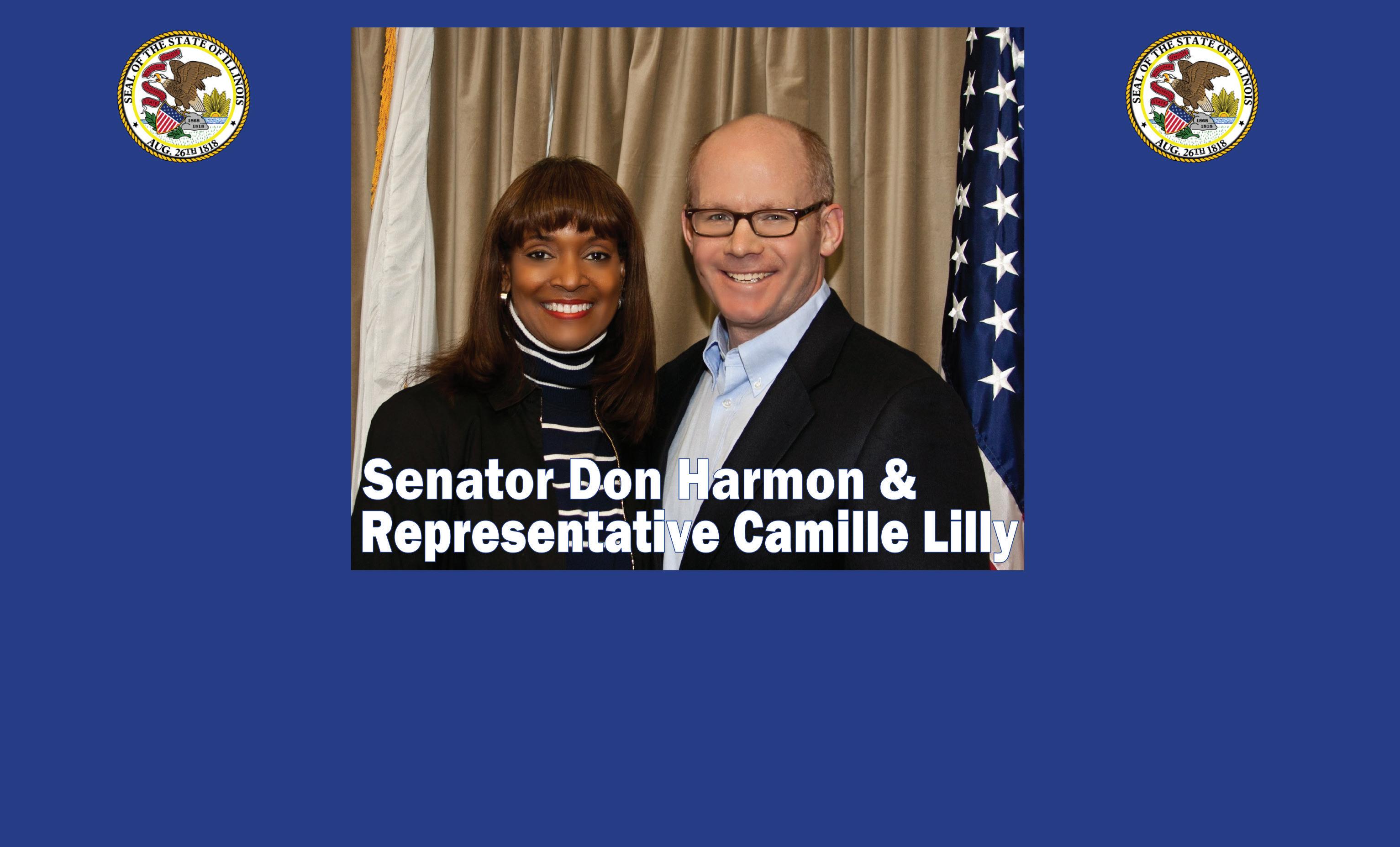
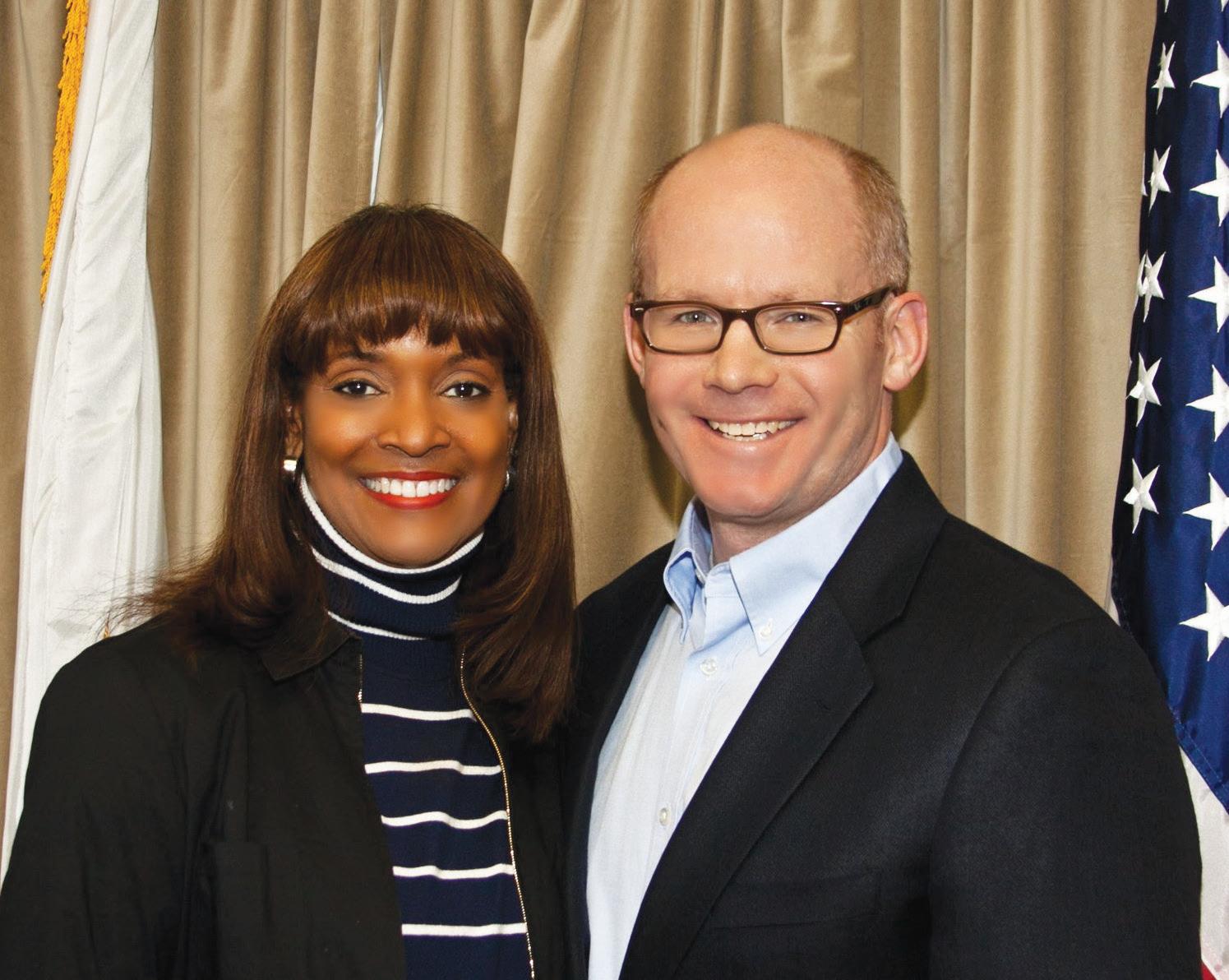
time,” said Coretta Dean. “We tell people to come hungry.”
Each tour stops at several restaurants with a tasting at each. A go-to is TNT Rooftop at 5405 W. Madison St. Others on the West Side have been The Artist Room Café, 5125 W. Madison St.; a Belizean restaurant, The Bloohol, 5101 W. North Ave.; and Shake a Leg, 5512 W. Division St.
A favorite dish is the Obama, a steak and jerk chicken-filled Philly cheesesteak sandwich at Jay’s Backyard BBQ, 5604 W. Division St
“As a matter of fact, I believe I just saw a post saying he recently sold his 500,000 Obama sandwich,” Dino Dean said.
Amplifying and uplifting Black-owned and -operated restaurants is a mission for The Black Foodies.
“We were wanting to get the word out, to let people know how wonderful the restaurant scene is in our community,” Coretta Dean said. “So, you can get to know what we know about the chefs and the food in our community.”
“Restaurants are pretty much the biggest
small business in America,” Dino Dean said. “It’s a community hub. It’s important that everybody supports their local restaurants, because there’s college students, there’s single mothers, there’s a plethora of people that make a living in restaurants. And if we cannot support that industry, we’re really not supporting our communities.”
The focus is on Chicago for now, but The Black Foodies are dreaming bigger.
“One day, I would love for us to have the opportunity to expand this on a national level,” said Dino Dean. “And be a beacon of light for Black-owned and other ethnic restaurants.”
PROVIDED
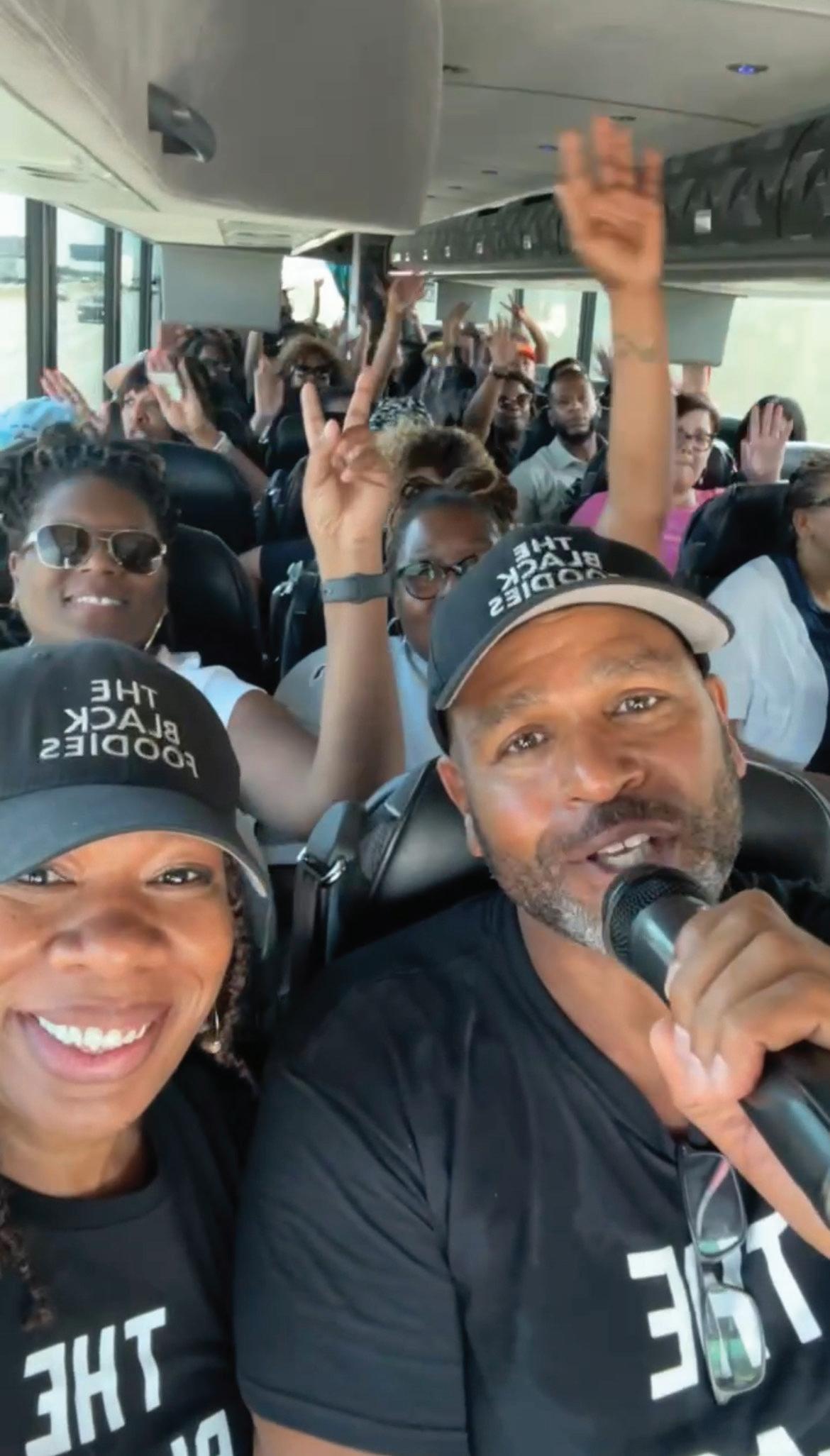
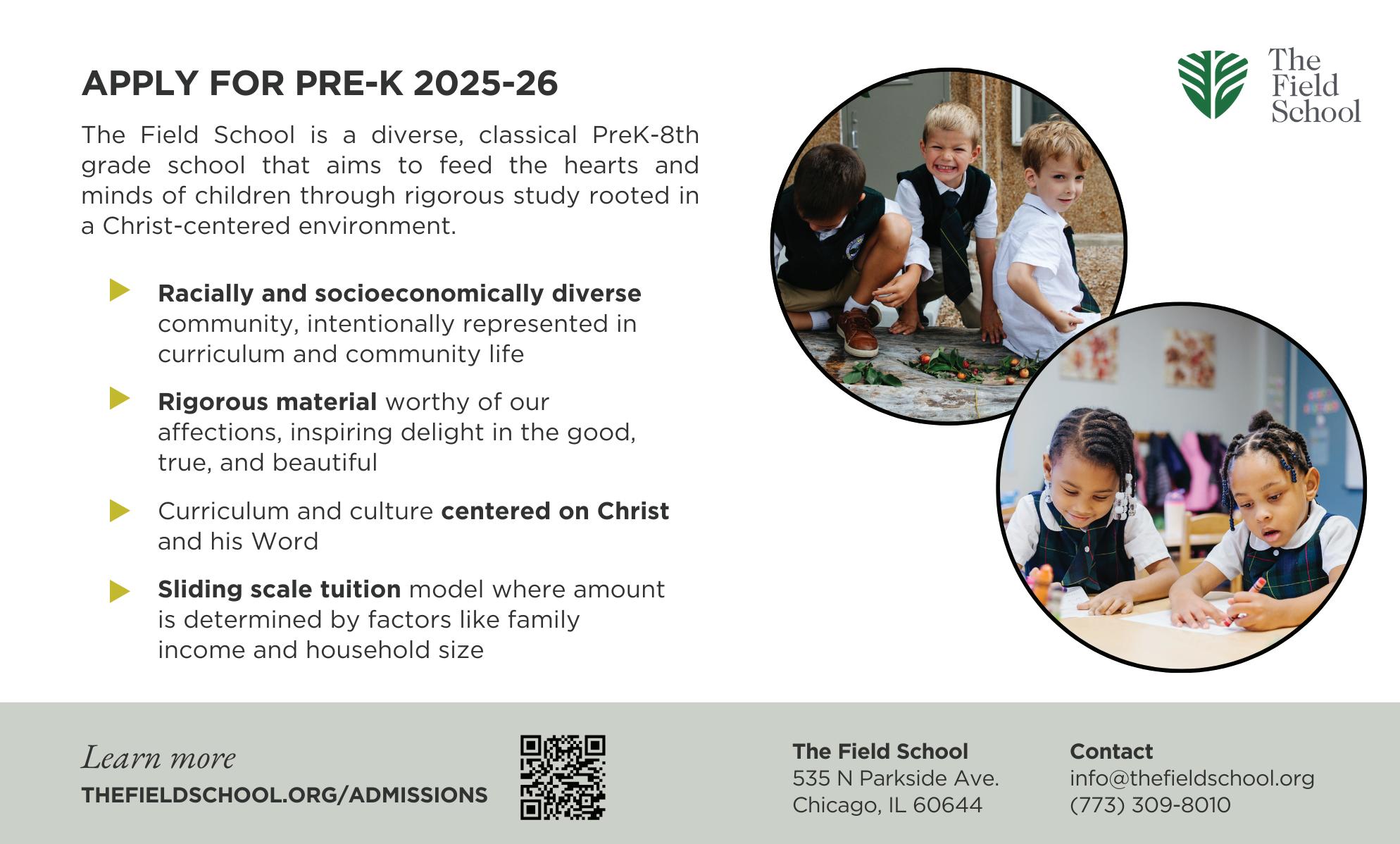
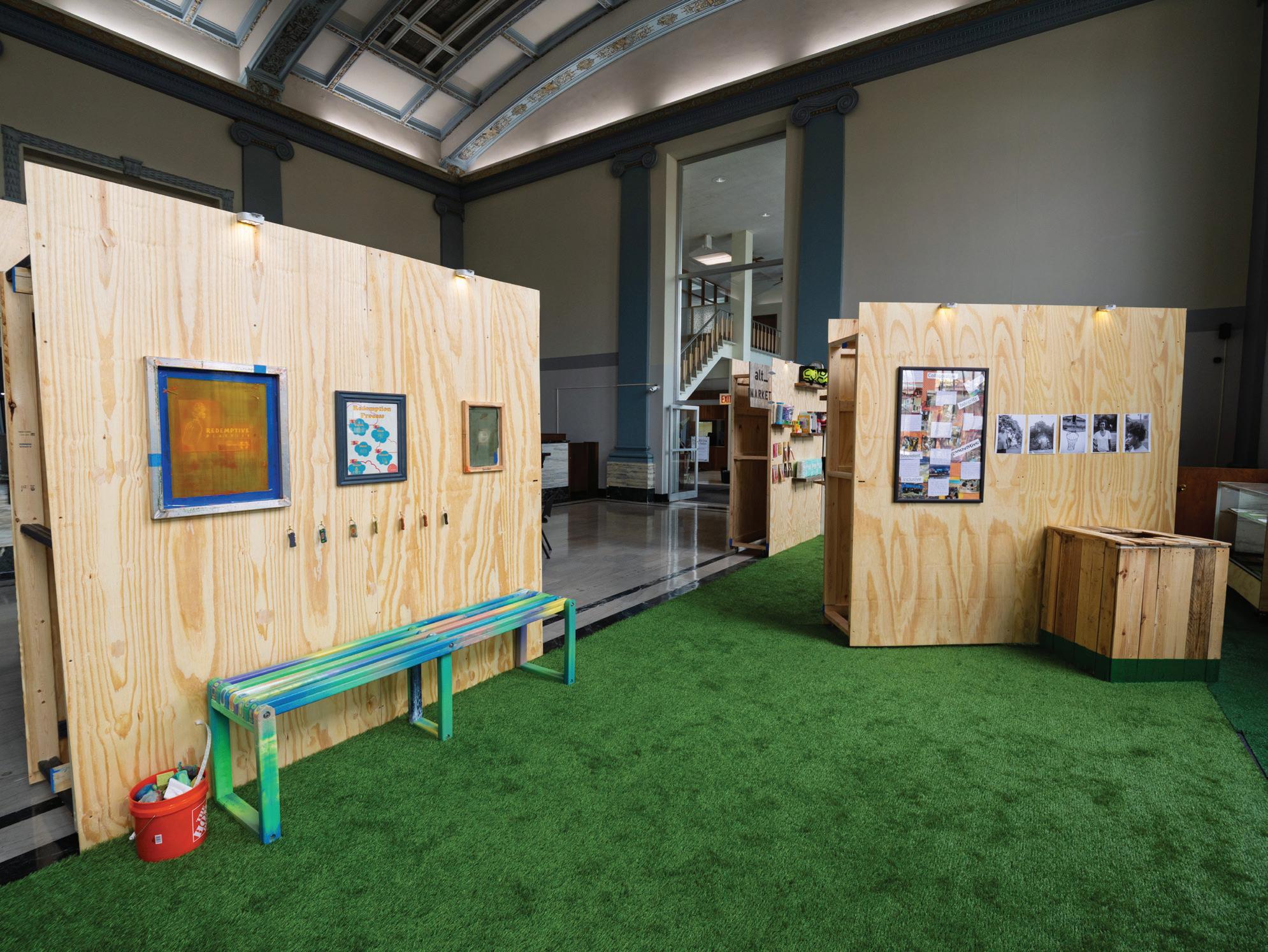
JUSTIN REDDING, A FRIEND AND COLLABORATOR WITH ALT_ CHICAGO, CURATED “ALT_ PAST, PRESENT + FUTURE,” A REFLECTION ON THE NONPROFIT’S JOURNEY. | TODD BANNOR
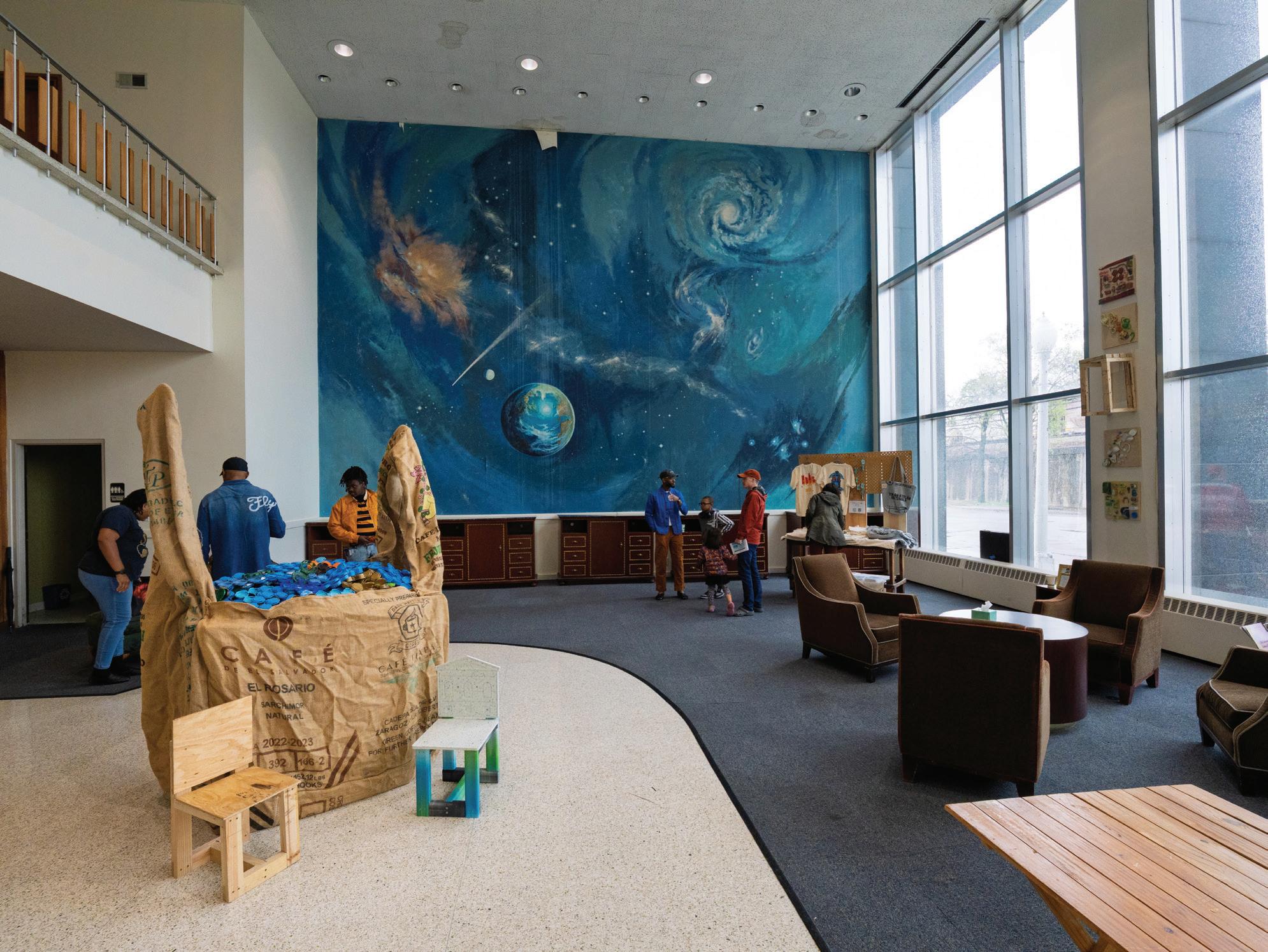

ALT_ CHICAGO ART CENTER EXECUTIVE DIRECTOR JORDAN CAMPBELL AND AISHA OLIVER ANSWER QUESTIONS AT THE ART CENTER’S GRAND OPENING OF THEIR NEW HOME IN THE FORMER AUSTIN BANK. | TODD BANNOR

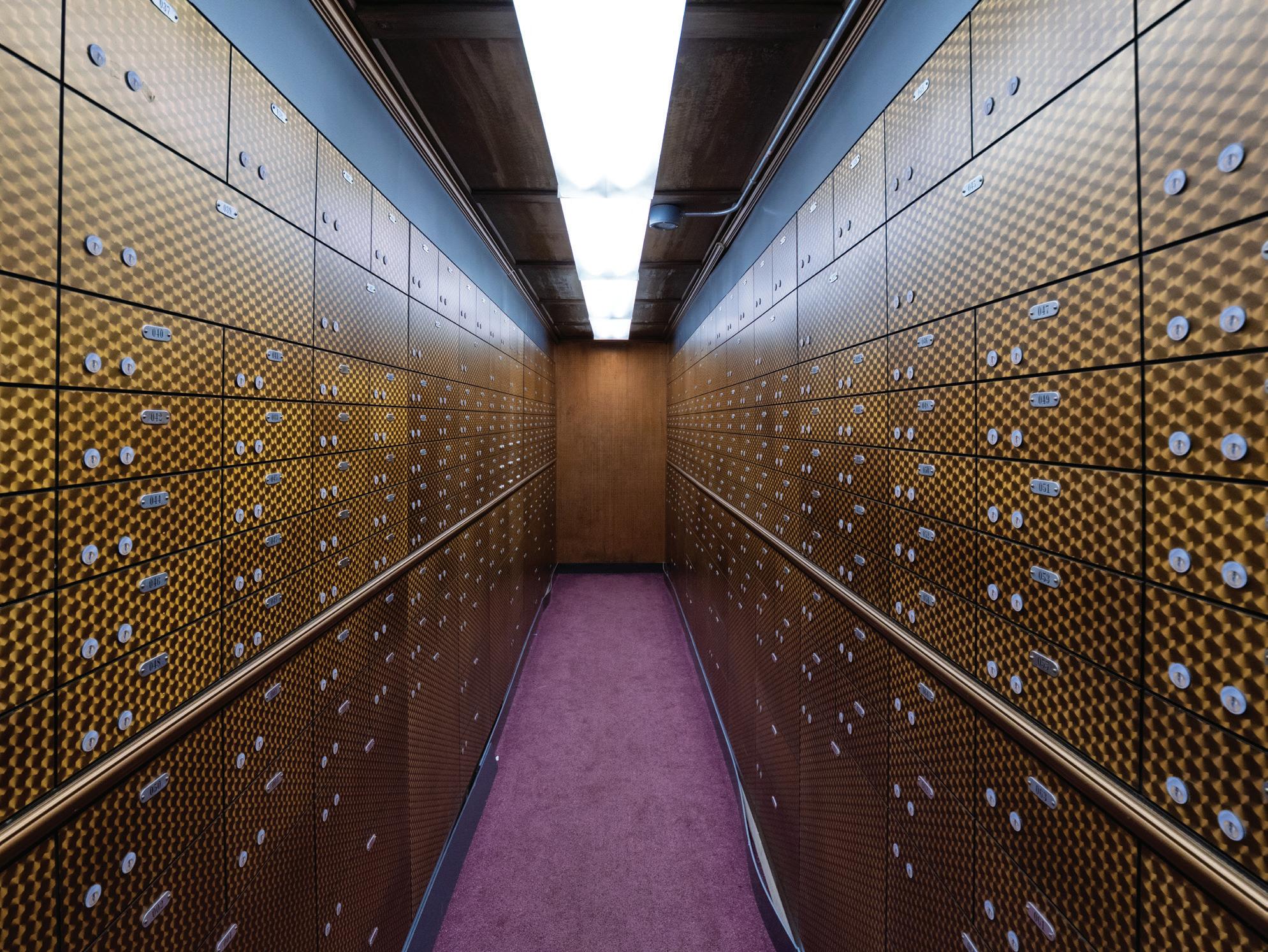
The nonprofit alt_ Chicago launches an artist collective as it moves into the historic Austin Bank building
JESSICA MORDACQ Sta Repor ter
There’s a new arts hub in Austin that provides economic opportunities to local artists and increases affordable arts programming on Chicago’s West Side.
Artist-led nonprofit Alt Space Chicago celebrated its grand opening at 5645 W. Corcoran Pl. at the end of April. Over 500 people attended an open house, art exhibition, One Earth watch party with a sustainability panel, artist market and Sunday worship.
The nonprofit’s new headquarters in the historic Austin Bank building will house mixed-use space for events and exhibitions, small areas for retail, teaching space for local vendors and art-
ists, workshops and a cafe
The building, which alt_ Chicago bought last year with grant money and funds from the nonprofits’ projects, is currently used for community meetings and local events. It will host The House Collective, a group of artists and community members that will share resources to offer classes and workshops and put on exhibitions for the community.
“We’re offering an alternative to everything else that’s being offered to the city but doing it in our own way through the pillars of art, faith and community,” Jordan Campbell, executive director and co-founder of alt_ Chicago, told Austin Weekly News.
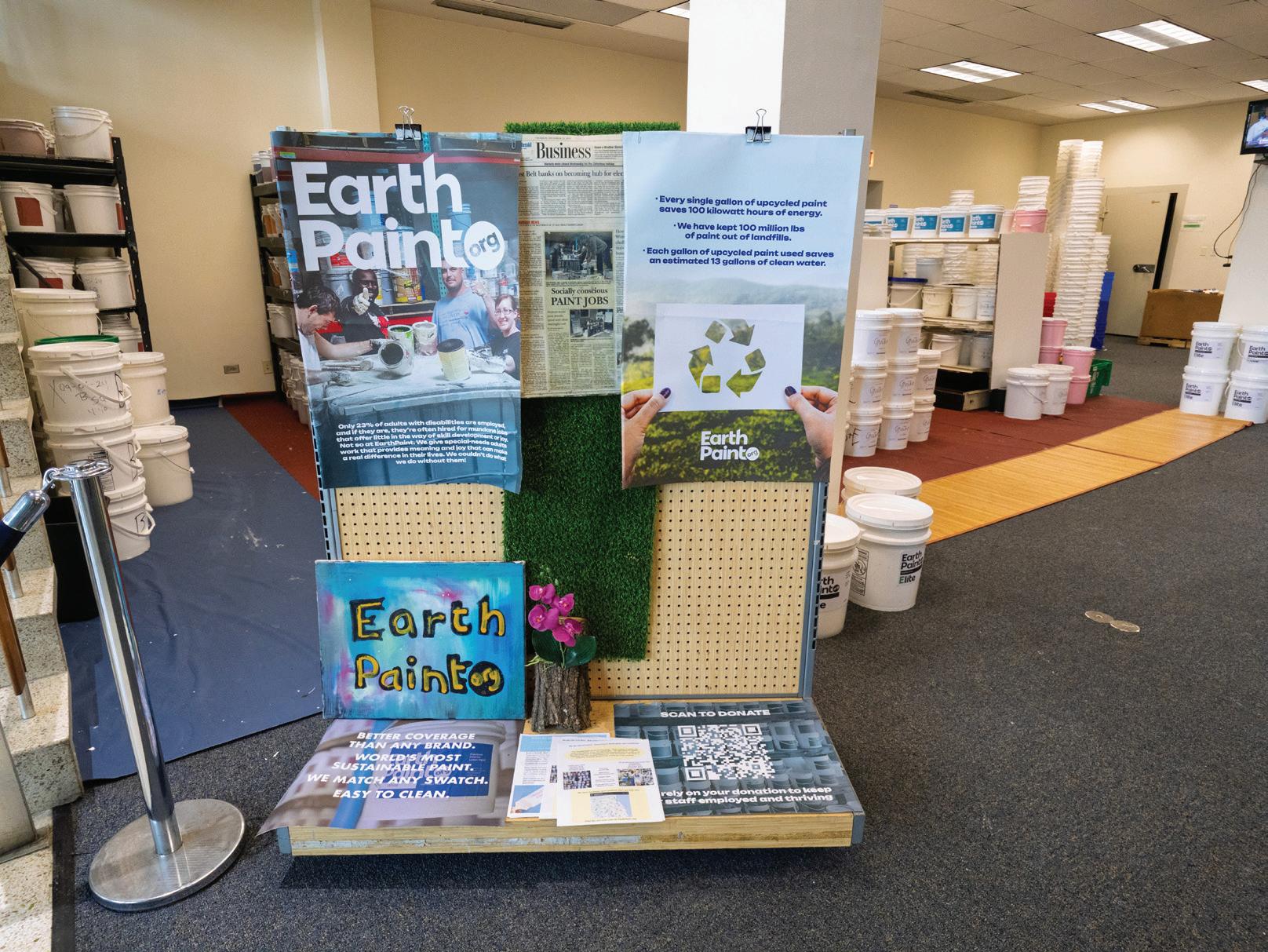
Made up of five nonprofits and 10 artistsin-residence, The House Collective is a community investment vehicle, allowing its participants to use money they would’ve spent to rent their own space to instead serve the community at a lower cost. And the collective will allow alt_ Chicago to rely less on grants for building operations, since that’s covered by what participants pay into The House Collective
The House Collective will also create a grant where about 10% of what it makes will go back into the community to sponsor the likes of elders with fixed income or single-parent households.
“I want us to learn what it means to be philanthropic with our abundance and to be intentional about giving back to our community in as many ways as we can to really meet the needs through our service,” Campbell said.
Campbell and Jon Veal started alt_ Chicago in 2019 to create a healing tool for the Black community’s trauma. Alt_ Chicago’s first community activa-
tion was Project Stamp, where Austin residents sat for family photos. They got to keep a copy, and another was used to decorate vacant spaces with images of local residents
In 2020, alt_ Chicago became a nonprofit and launched alt_ Market, an annual interactive art installation that also serves as a giveaway spot for free non-perishable food and hygiene items. The idea was a response to the anger that Campbell and Veal saw in Austin after the murders of George Floyd, Breonna Taylor and Ahmaud Arbery.
“Essentially, we wanted to mobilize the community, empower them, dignify them and help them to understand that what we believe is the greatest asset of any community is the people,” Campbell previously told the Weekly. “Art has the ability to start those conversations or is the initiator of those movements.”
Alt_ Chicago’s Redemptive Plastics initiative has diverted over 10,000 pounds of plastic from the landfill and turned it into functional art like key chains, hammers and bus stop benches. Campbell said alt_ Chicago is finishing electric service in its new building in order to do processing for Redemptive Plastics.
Last year, alt_ Chicago hosted or participated in 24 events around Austin and paid $175,000 to contractors and artists. It also received $21,000 in donations and got $400,000 in grants – which was used to purchase and develop what once housed the historic Austin Bank of Chicago, constructed by Frederick Schock, a notable Chicago architect who lived and worked in Austin.
Previously, alt_ Chicago rented space at 5339 W. Lake St. Alt_ Chicago has been allocating funds toward a permanent location since 2021, when its founders were looking to buy a building. But that process stalled when Veal passed the following year and Campbell focused on maintaining operations.
Alt_ Chicago bought the old Austin Bank building with about $200,000 from consulting or working on projects for DCASE, Lurie’s Austin Hope Center and One Lawndale Children’s Discovery Center. It also got $300,000 from IFF and a credit with Catholic Charities of the Archdiocese of Chicago, which used to operate the Father Augustus Tolton Peace Center from that location. Maryville Academy also resided in the building but has since relocated.
In the next five years, Campbell said alt_ Chicago will focus about 50% on building operations, 40% on internal operations, and the remainder on grants and community operations
The nonprofit is looking to install infrastructure for geothermal energy or heat pump systems. Workshop spaces will likely be created in the basement once alt_ Chicago develops an accessible path to get downstairs.
Earth Paint was The House Collective’s first tenant. It provides recycled paint that’s cheaper than market rate and job opportunities to those with special need s. Recently, Earth Paint created a mural at T&C Fitness Club, possibly the first in Chicago to be done with 100% recycled paint.
“We’re really mindful of our footprint in terms of the materials that we’re using and who we’re sourcing from,” Campbell said, “and keeping things localized as much as we can within our processes as an organization.”




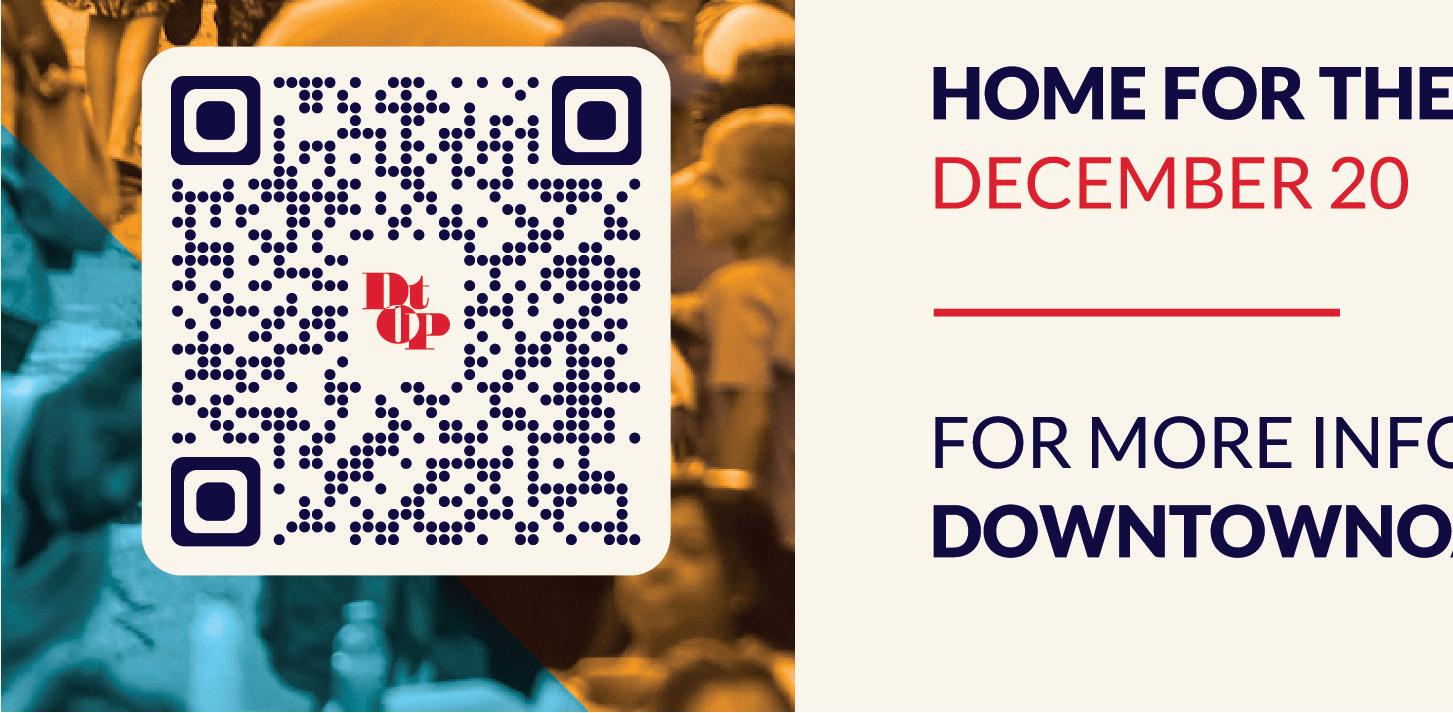

‘Our abundant community’


A conversation with Kehrein Center for Arts’
Reesheda Graham Washington

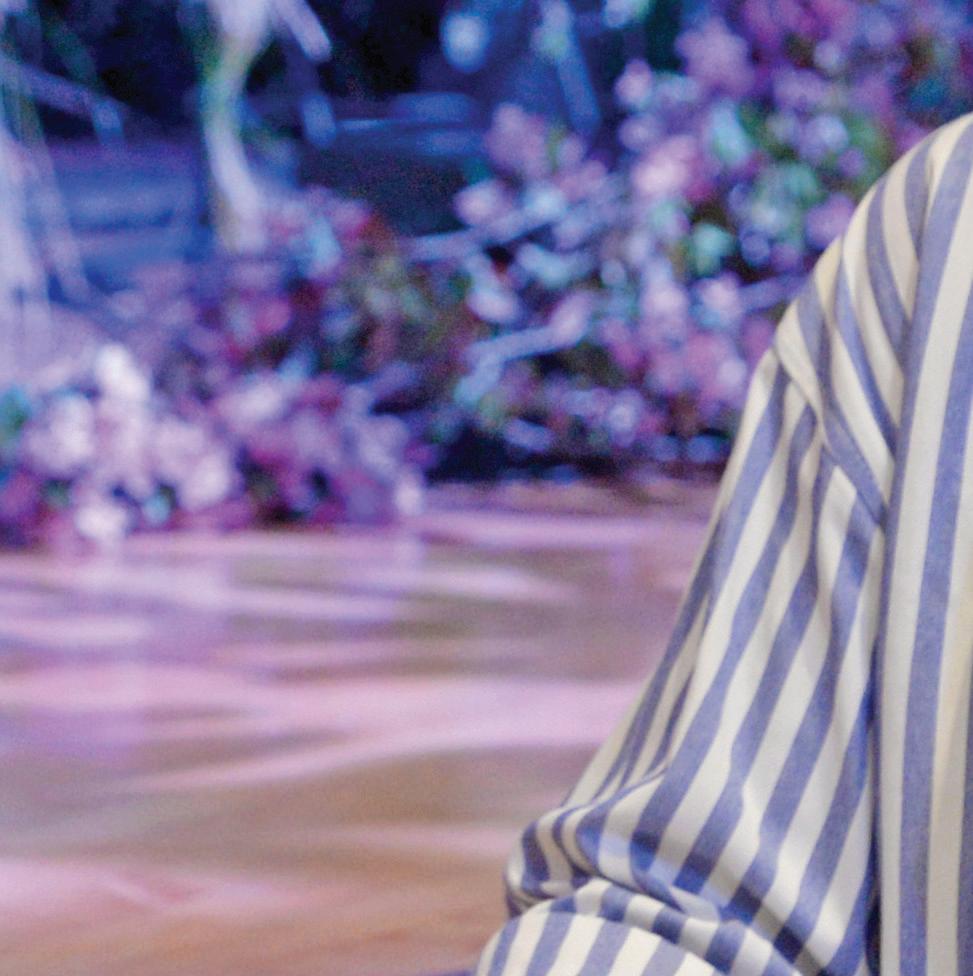






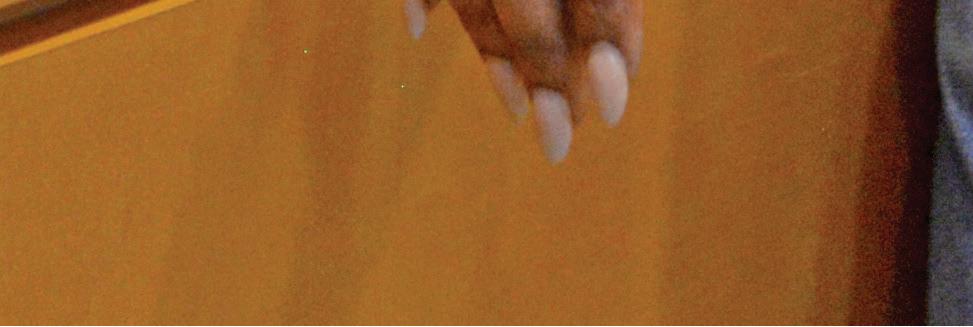
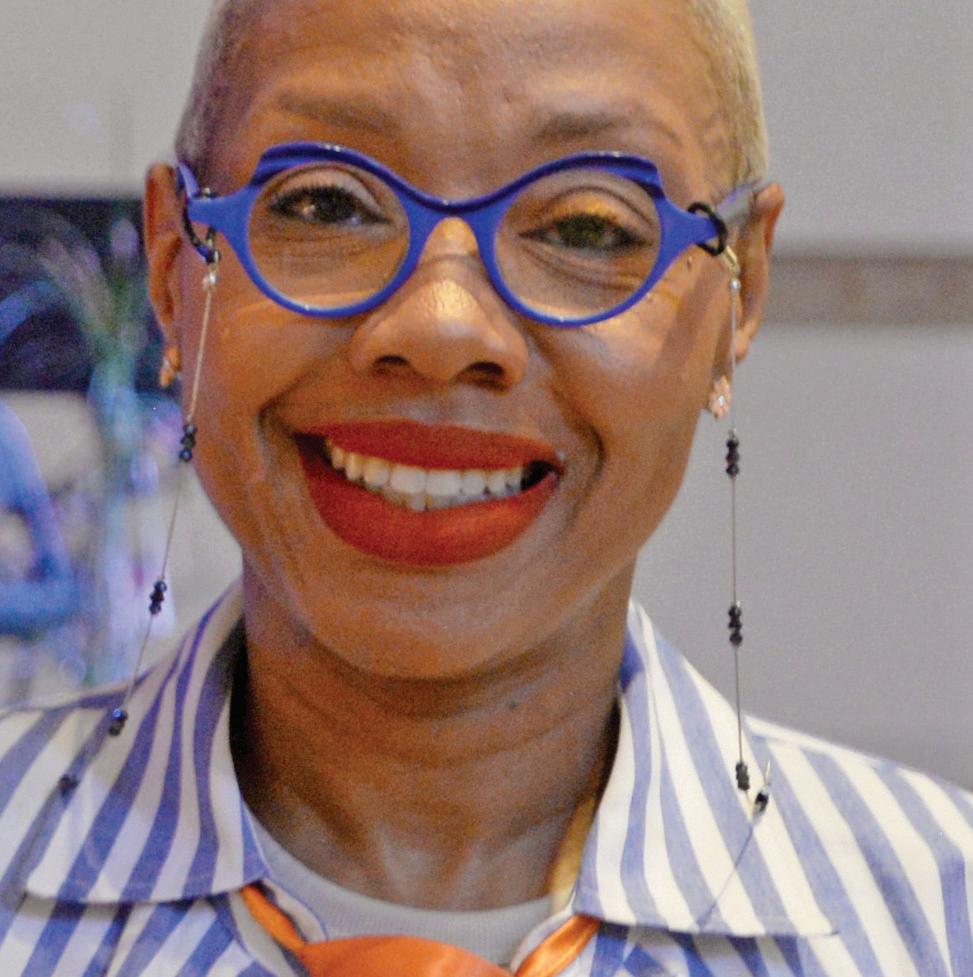

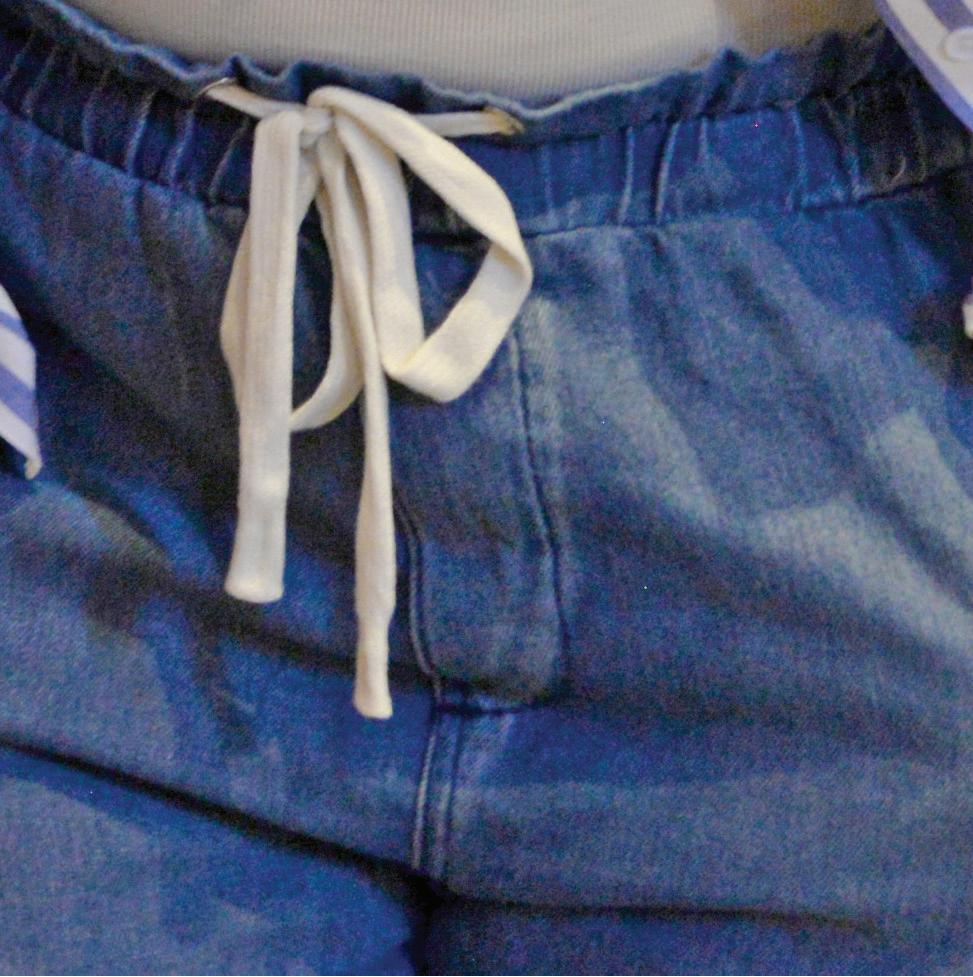
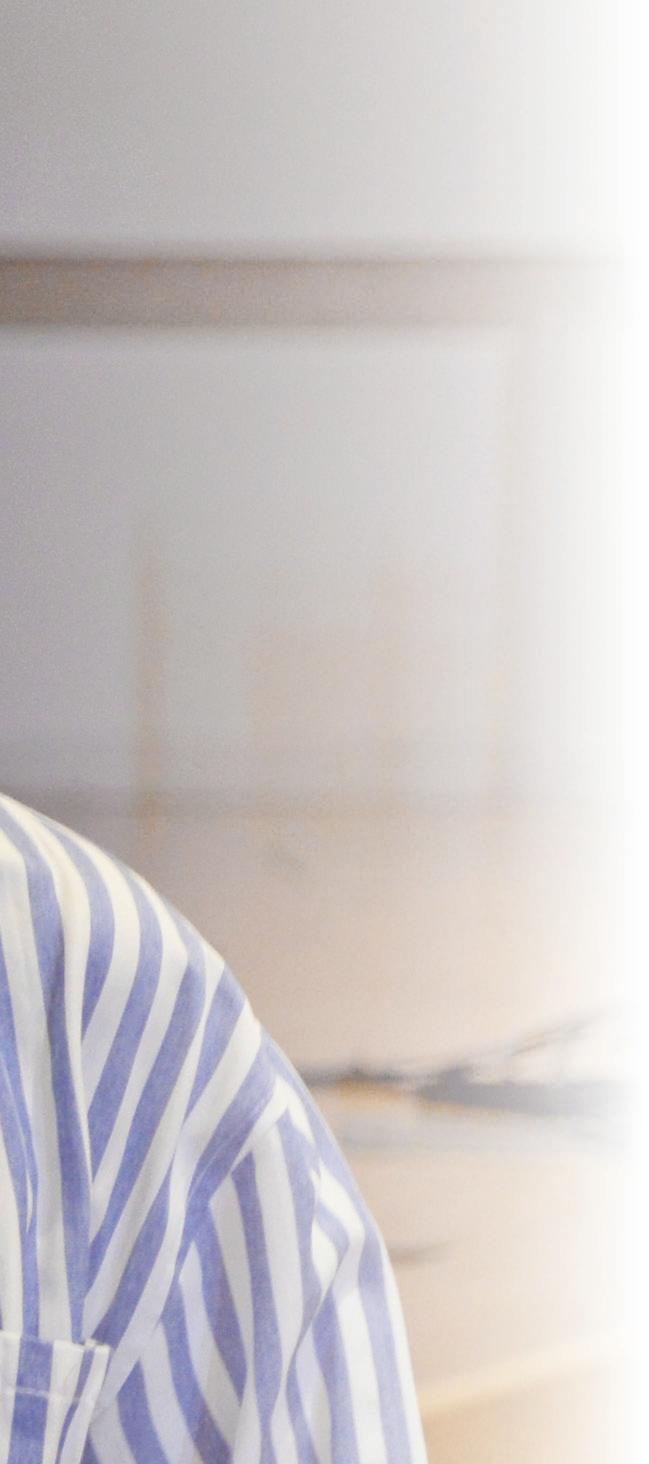
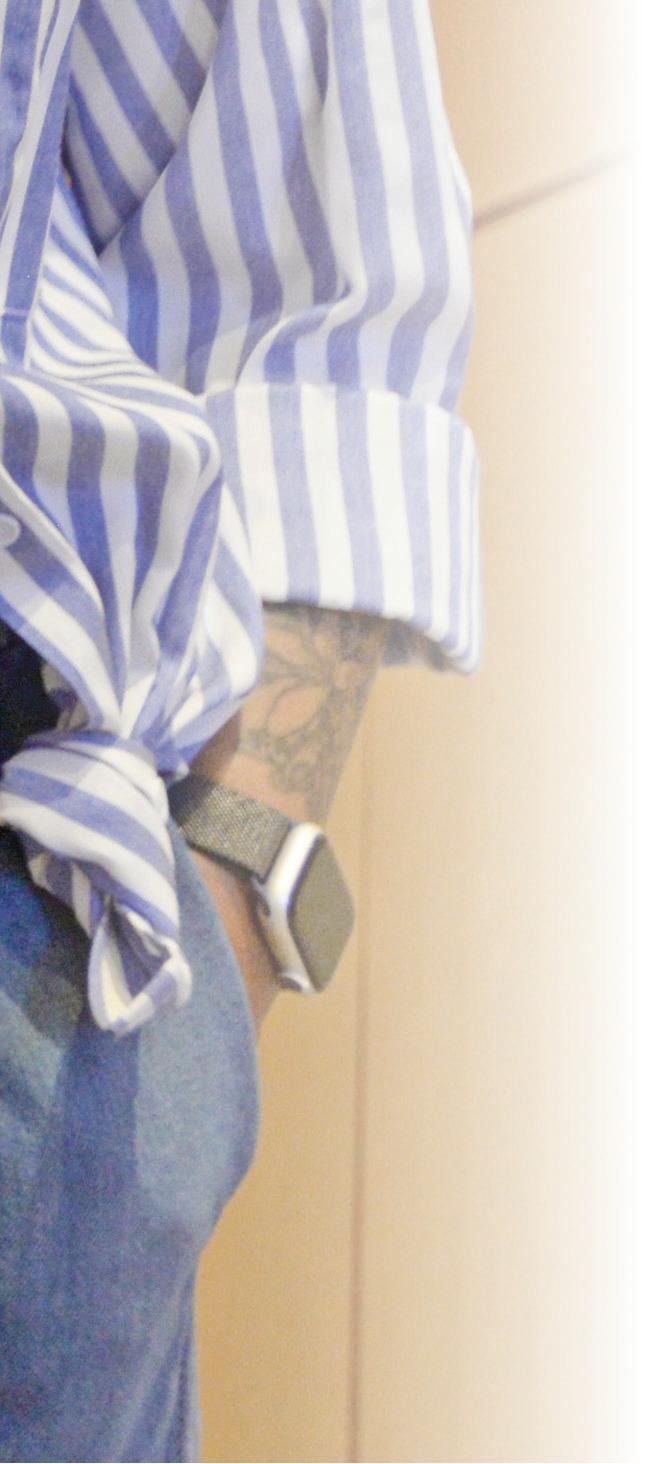
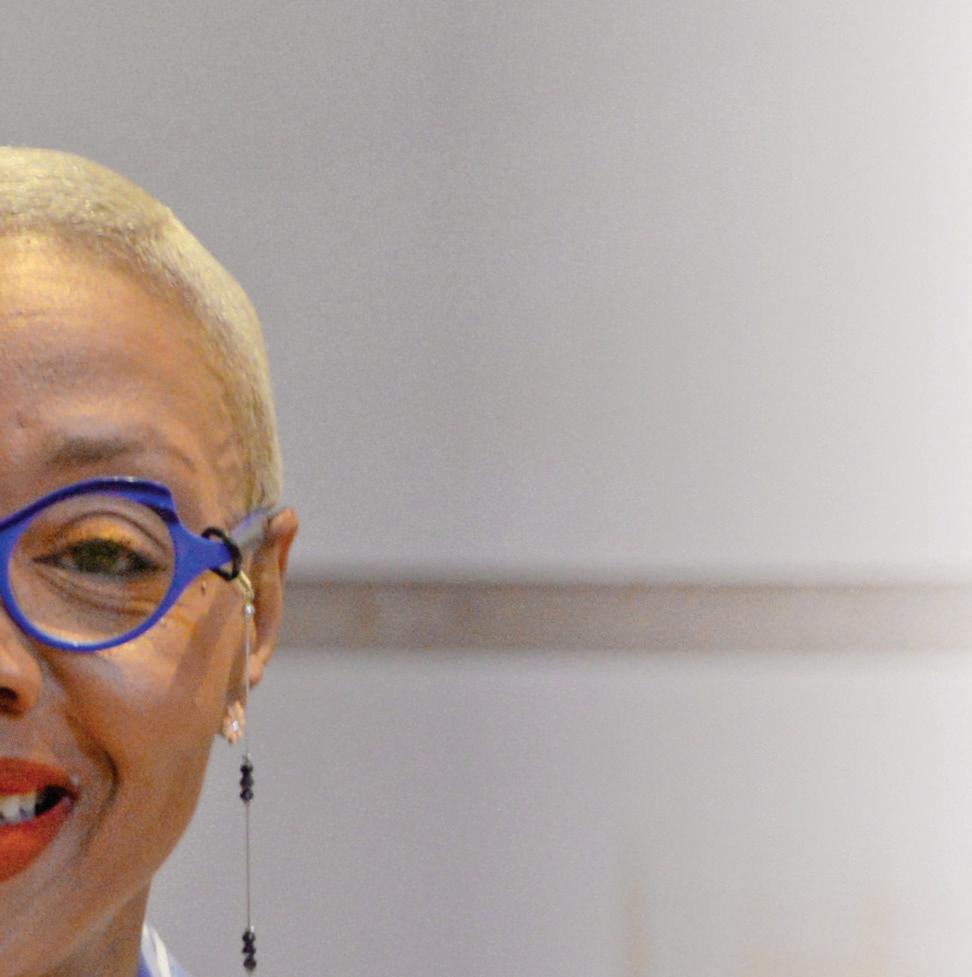

DEBORAH BAYLISS Contributing Repor ter
For Reesheda Graham Washington, founding executive director of the Kehrein Center for the Arts (KCA), all the roads to her successful path lead back to her Austin community roots. This is where it all started for her.
Speaker, author, entrepreneur, consultant, are among the many talents listed on her professional profile.
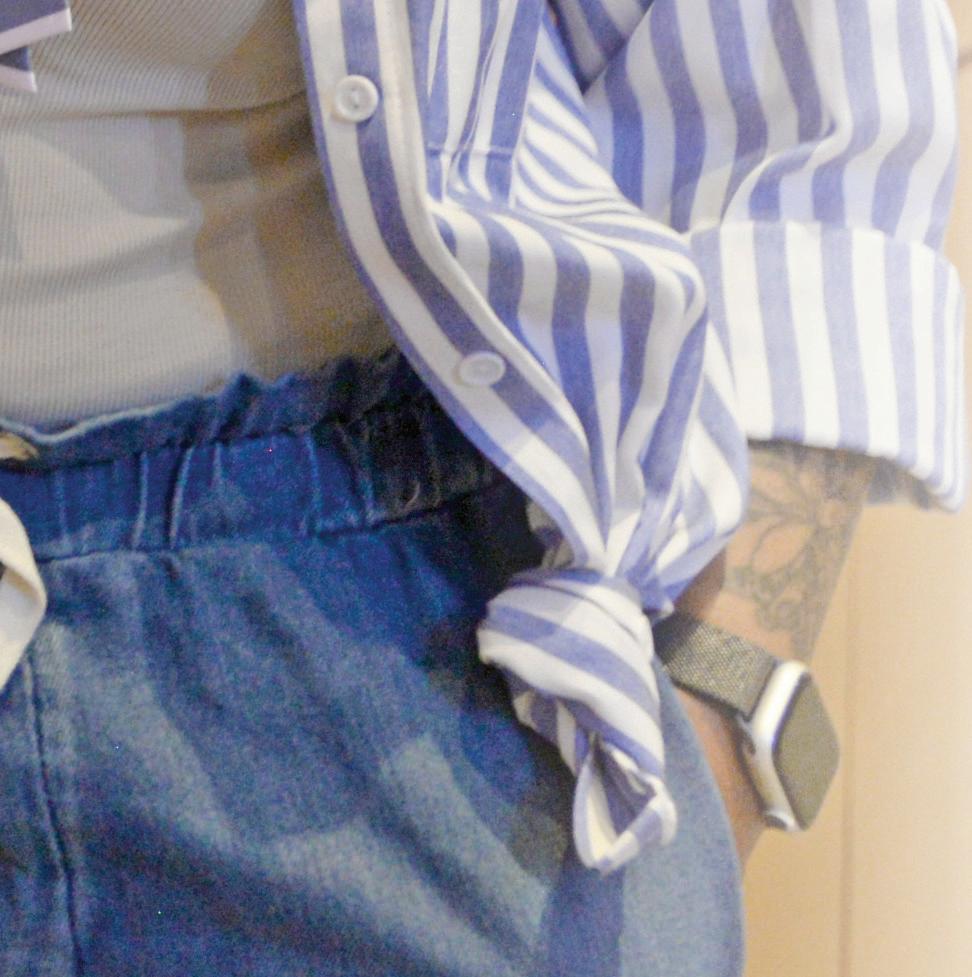

Her experience includes serving as chief experience officer of L!VE, a for-profit grassroots-generated café and creative space that fosters sustainable, indigenous business incubation focused on the middle-class in the Austin community She also has served as executive director of Communities First Association, a national, faith-based organization that specializes in asset-based community development.
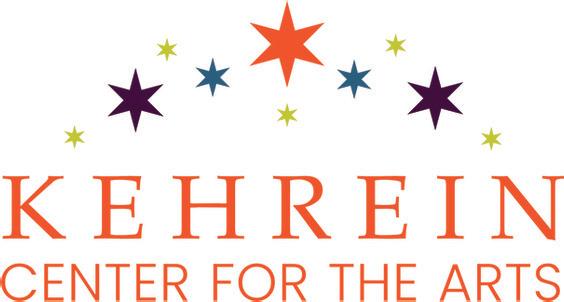
“I want Austin residents to know that we are working really hard to deliver the message that the theatre belongs to the community and that we’re here to listen and develop the programming that they ask for.”
community, the Kehrein Center is making it possible for Austin and West Side residents not to have to leave their own neighborhood for first-class entertainment and experiences.
The Kehrein Center is located at 5628 W. Washington Blvd. It is part of the Catalyst Circle Rock school complex.
minds to and then dedicated their lives to educating us in ways that made sure we did the things we set out to do. It was my neighbors when I was a kid, who are now my colleagues in leadership. We went off to school and came back and poured ourselves into our community. I know a lot of times we talk about it as a responsibility and accountability, but I take a lot of joy in being able to give something back to the community that gave so much to me. I was born at Loretto Hospital, learned how to swim at Columbus Park, and learned how to read at the Austin Public Library. I should be there giving back to the abundant community that has given so much to me. Our work is to make sure that young people from Austin get the same thing.
WSM: Describe the Kehrein Center and what it means to you?
West Side Magazine caught up with Graham Washington to talk about what drives and fuels her dreams and ambitions and also about the Kehrein Center.
A years-long effort to restore an architecturally-significant, unused school auditorium into a vibrant fine and performing arts center, complete with a 900-seat storytelling theater, art gallery, and community gathering space located in the Austin

WSM: Let’s start with where does your drive come from?
Graham Washington: I got it from the Austin community which is why it’s so important for me that all my roads lead back to Austin. It was my elementary school teachers who believed children in Austin could do anything they put their
Graham Washington: The Kehrein Center is an entity that focuses on and prioritizes the Austin community and the greater West Side of Chicago through service and leadership as it relates to civic engagement and performing arts and culture that emphasizes the Black experience. KCA has been open in the Austin community for about five years. About five years ago the center underwent a $5 million renovation. So, it is
now a state-of-the art, 900-seat theatre and civic engagement center
I’m trained as an educator and entrepreneur. The art is amazing and wonderful and really important, but I think for me the most important thing is using art as a mechanism to drive economic and community development. My real schtick is economic and community development. I’ll use any of it for that.
WSM: How important is it to have KCA in Austin and for the larger the West Side?
Graham Washington: I think it is important because I believe that a lot of the work of civic leaders and the performing arts typically happens downtown and on the north side and if you are a resident of the West Side of Chicago and sometimes even the South Side of Chicago, it can create an accessibility issue and it also may not be as relevant culturally to the community. So having that local space that listens to the community and is aware and responsive to the quality of life in the Austin community, ensures that the topics you want to talk about and the issues addressed are the ones that are stood up


and the ones that receive our attention.
WSM: What other kinds of events take place at KCA, do you hold exhibits as well as performance arts?
Graham Washington: We do hold artist exhibits. We just held one with AP Roberson Photography, an exhibit where he celebrated the work Anjanette Young is doing with “I Am Her Foundation” and we also just recently housed an exhibit for the artist named Osei Badu who chronicles some of the work of Anjanette Young. (The exhibit, which Young curated, is a collection of artwork representing not only her experience as the victim of a wrongful police raid at her home in 2019 but also that of other Black women and girls who’ve also been traumatized by police).
The beauty about that is, through their work, we were able to attract the attention of the DuSable Museum and now both of their exhibits will be transitioning to the DuSable Museum for an exhibit there.
WSM: Those are great partnerships What other partnerships do you have?
Graham Washington: KCA serves as an artistic and cultural pipeline for hyperlocal artists and elevates their work and to amplify their impact. We help amplify partnerships for artists. We’ve also partnered with the Lyric Opera House, Old Town School of Folk Music, Chicago Jazz Philharmonic, arts organizations from all over the city of Chicago to bring resonant representations of their art for ms to the Austin community and the greater West Side. That keeps our residents from having to travel all over the city to get access to relevant arts and culture.
WSM: What do you want the Austin and West Side residents to know?
Graham Washington: I want Austin residents to know that we are working really hard to deliver the message that the theatre belongs to the community and that we’re here to listen and develop the programming that they ask for. They should visit the website www.kcachicago. org and send us information and contact us to let us know what that looks like, sounds like and feels like because it’s our responsibility to respond.


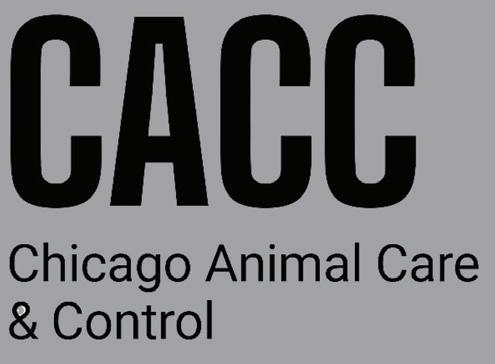











Together,wewillcreateathrivingAustincommunity!
AustinComingTogether(ACT) willnowbelocatedatthenew AspireCenter forWorkforceInnovation(ACWI).Ourmissionistoincreasethecollective impactofleadersandorganizationscommittedtoimprovingthequalityoflife forAustinresidents. CONNECTTO SERVICES
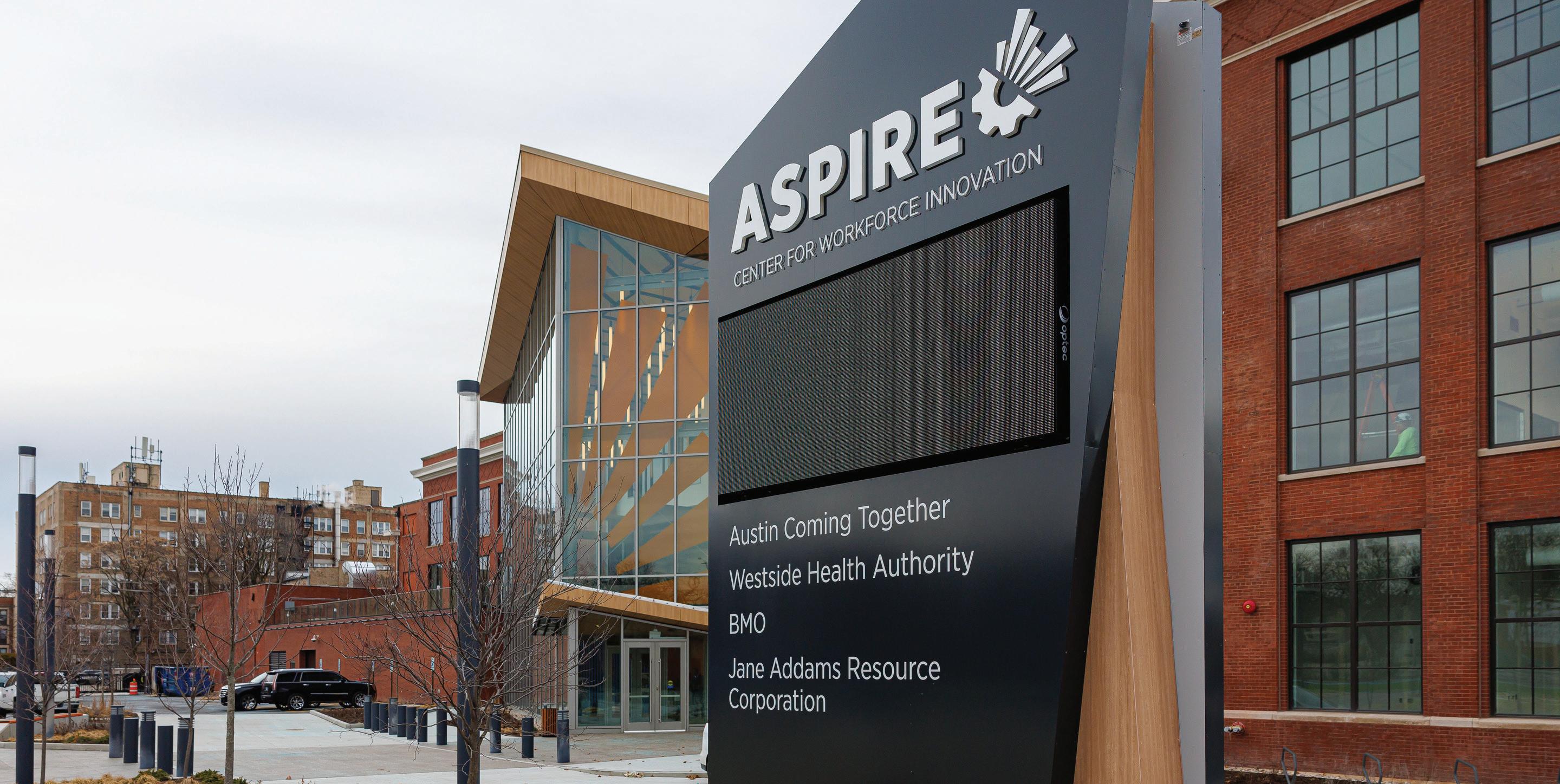
TheHub@ACWI isawelcoming,inclusivespacerootedin RestorativeJustice,dedicatedtohelpingindividualsimprove theirqualityoflife.Throughstrongcommunitypartnerships, weconnectresidentstoservices,andopportunitestoaspire.
Ourteamisavailabletoco-hostdiscussionsaboutthenew phaseof Austin’sQuality-of-Lifeplan anditsvisionand strategy,theHighlightedAgenda.
Learnmoreabout ACT’s impactinthecommunity.




RISE SANDERS-WEIR Contributing Repor ter
Keeping a small business or restaurant in business is no easy feat. Five such businesses from the Austin community were awarded $9,000 each to help them strive, plan and give back to the community
The grants were given in early 2025 through Austin Eats, an initiative from the non- profit Austin Coming Together (ACT).
“It’s a collaborative of organizations, groups, residents, businesses that are working towards food justice in the Austin neighborhood,” said Grac e Cooper, lead organizer at ACT. “We have six different focus areas or working groups. We have food assistance, like pantries, food delivery, emergency
food access; grocery access; gardens and far ms; food education; culinary entrepreneurship; and marketing.”
For the grant, ACT put out a call to existing food businesses that are Austinbased or the owners live in the community. These needed to be focused on healthy food access and interested in health and wellness education through food. The goal was to build partnerships with while also supporting local food businesses.
Four of the grantees are catering or delivery companies.
“Katr2U is Patty Ringo,” Cooper said. “She has a lot of expertise around nutrition, like how you can create your diet if you have like diabetes, like what are the right things you should be eating diabe-
tes prevention. She’s very in tune with like public health and food.”
KHC Culinary is a private chef working in the community. Owner Kyra Hawkins is a graduate of Christ the King High School. She has given back to the school by teaching cooking classes for students, to help them find more ways to enjoy healthy foods.
Ve gan World Cafe is a catering and delivery business. “They’ve been around for while and have really tried to stay afloat with COVID and everything happening. We think it was really important to support one of the area’s only ve gan options,” she said.
Mafunzo International is run by Ali Kleiche, who is an athletic trainer as well as a chef.
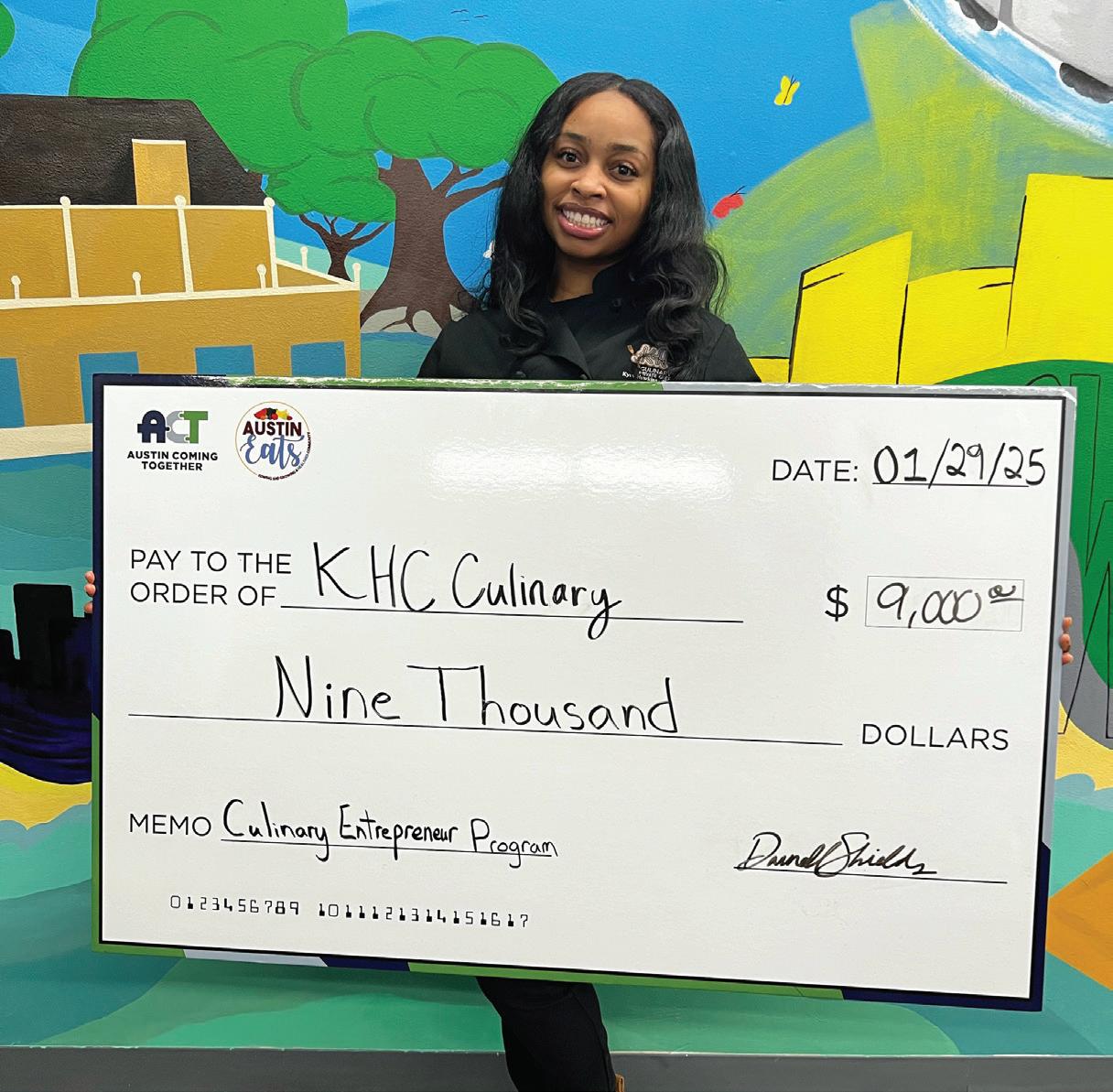

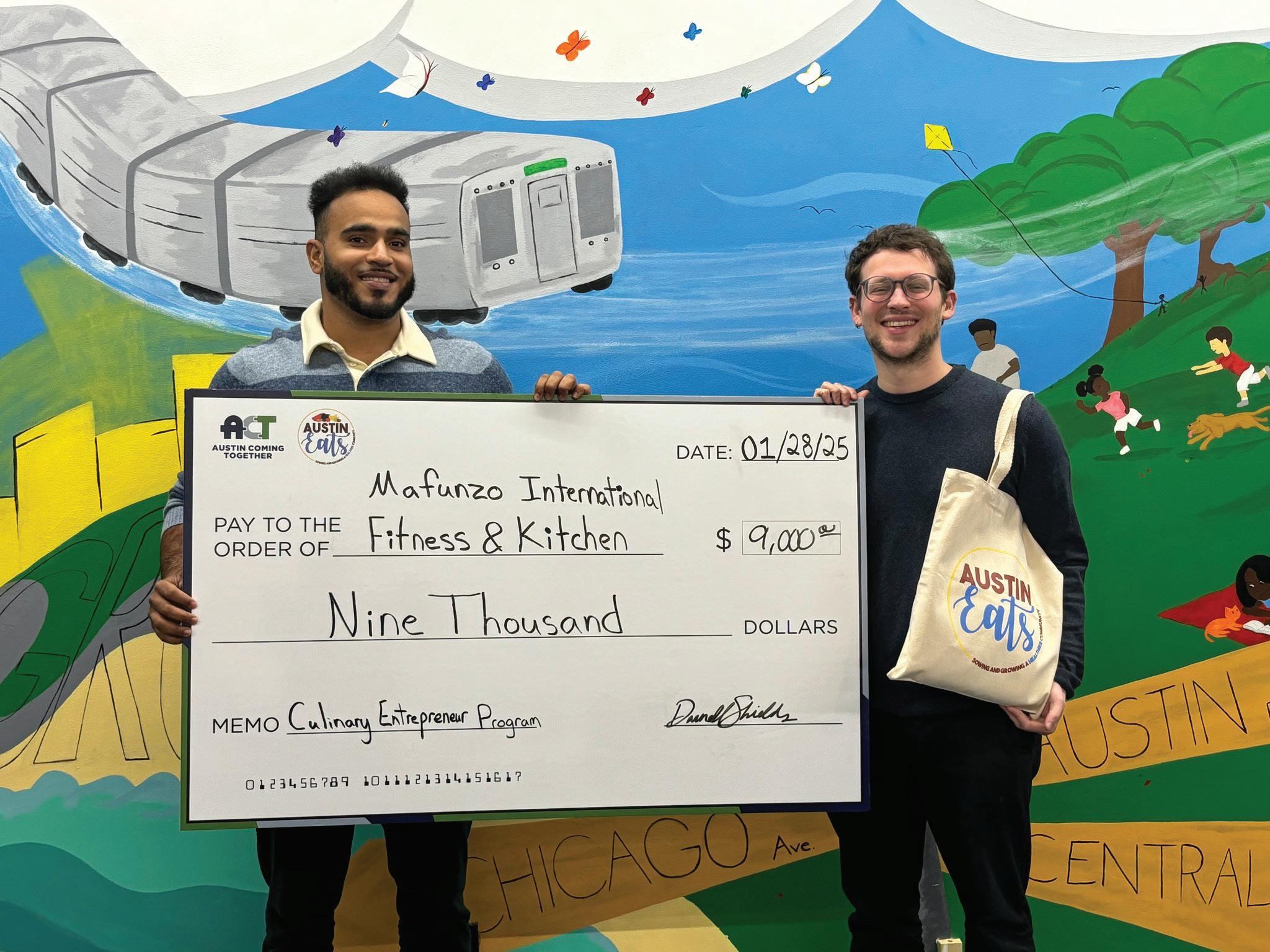
His meal plans combine insight into how food affects performance and the body in general.
One is a restaurant, Jam Grill, 5241 W. Chicago Ave. “Jam Grill is the only brick and mortar restaurant that we have in this group of grantees,” Cooper said. “They have a Jamaican restaurant in the Soul City corridor. That’s how the Chicago Avenue corridor is branded.”
Each grant is unrestricted as far as what the recipients can do with the money, but each requires giving back to the community.
“All the grantees will be doing a cooking demonstration at the Austin Farmers Market this summer,” Cooper said. “And do a range of different workshops with other organizations that are in Austin.”
Financial support came from a partner organization called Austin Fresh, which is a collaborative funded by Builders Initiative, Food:Land:Opportunity, The Lumpkin Family Foundation, Walter S. Mander Foundation and The Christopher Family Foundation.
This group is dedicated to strengthening a healthy food ecosystem in Austin by supporting food justice-focused groups.
“We want to follow the lead of the Austin community,” said Clare Butterfield, executive director of The Christopher Family Foundation. “We’ve been trying to really meet the needs of the neighborhood as they’re expressed by people who live there. We have a special interest in food as an economic development tool because it does two things at once. It pro-
vides more access to healthy fresh food, so people can get that basic need met without leaving their neighborhood, but it also creates an economic development. It’s building a lasting asset.”
“We support the community’s vision of a just and healthy food system in Austin, which includes a healthy ecosystem of food entrepreneurs,” said Haven Leeming, Program Officer at Builders Initiative. “We look forward to seeing the entrepreneurs who recently received Austin Eats culinary entrepreneurship grants thrive in the neighborhood.”
ACT anticipates being able to provide another round of funding next year to continue this mission to strengthen and develop entrepreneurship and food culture throughout Austin.












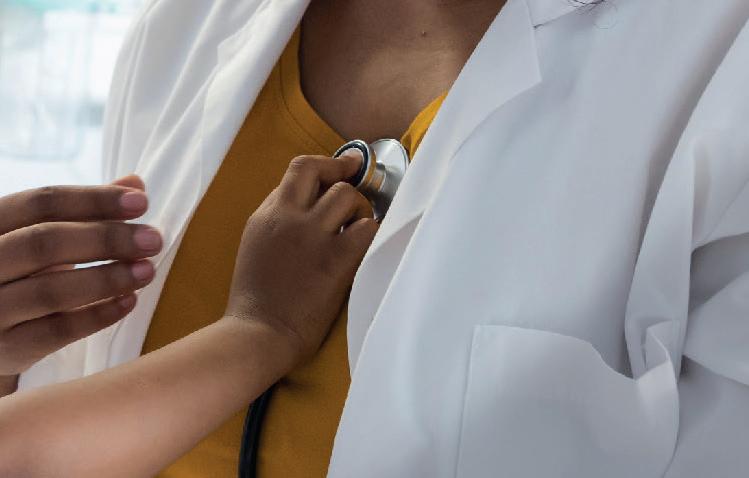

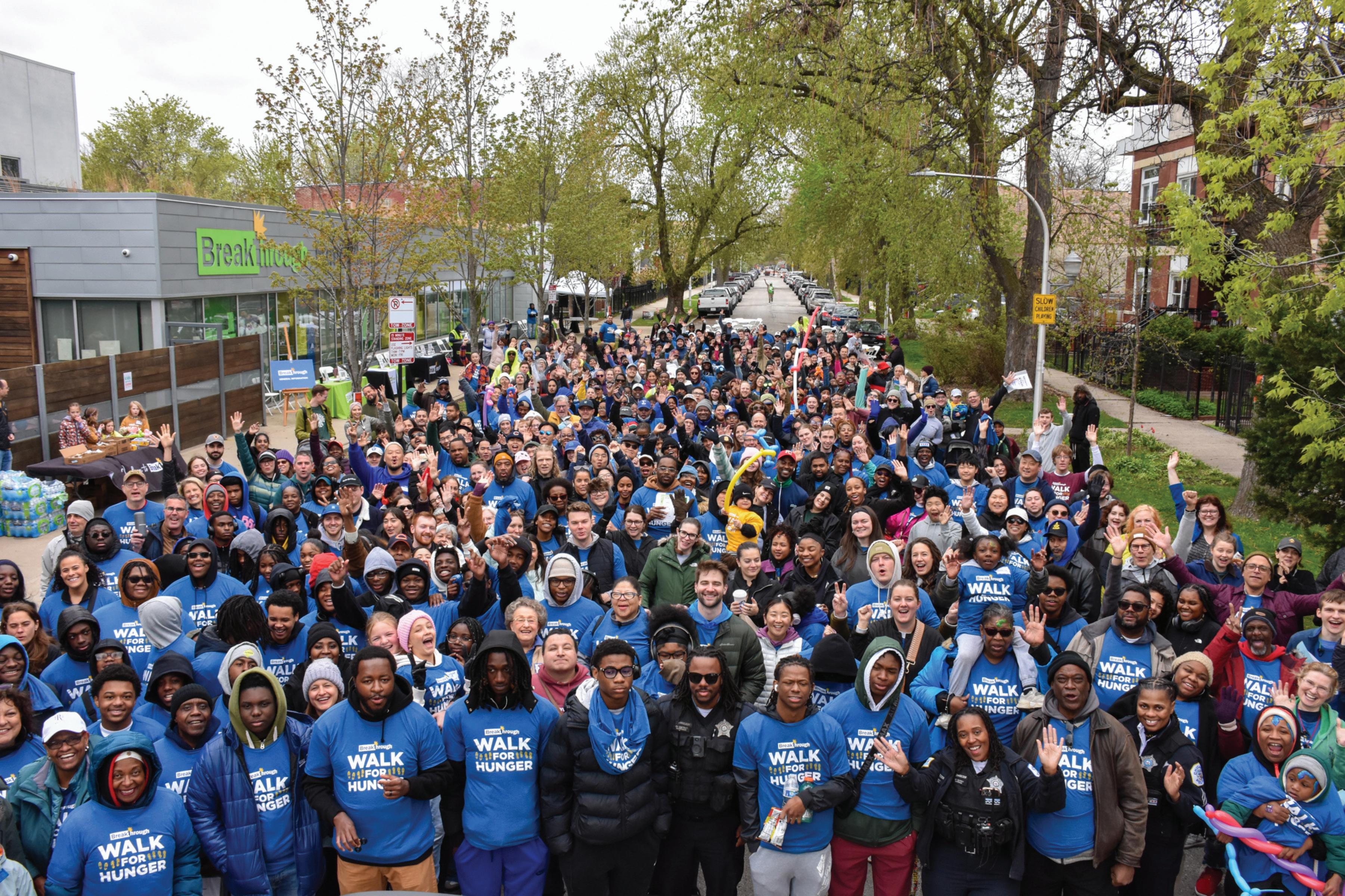
















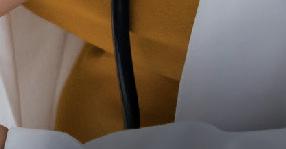




















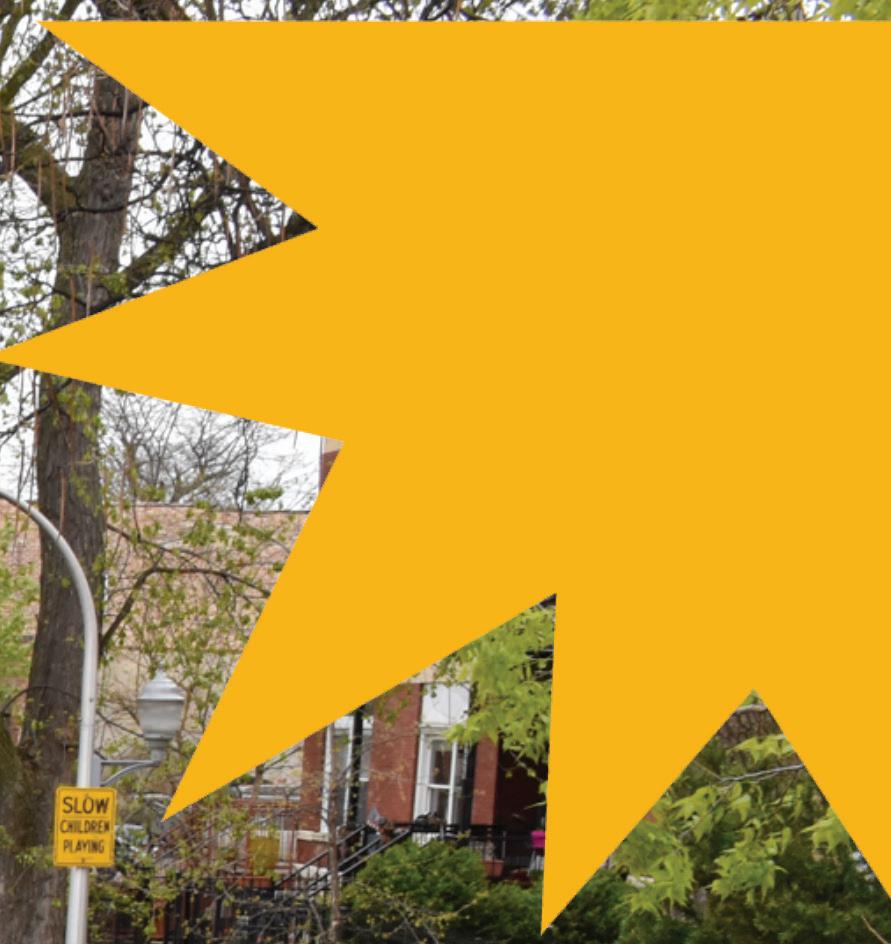



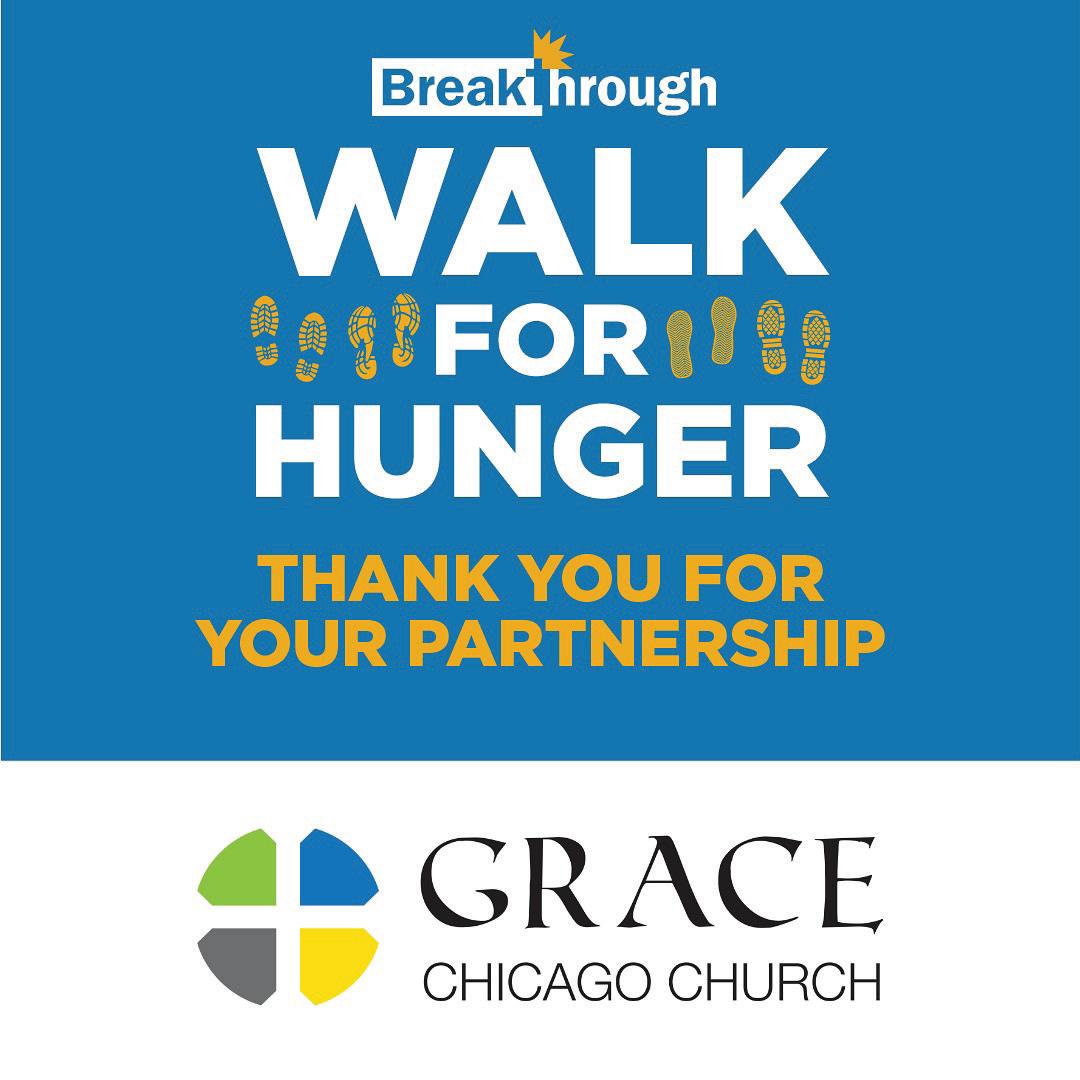
The annual walk raises funds for food security and highlights the urgent need for community collaboration against hunger

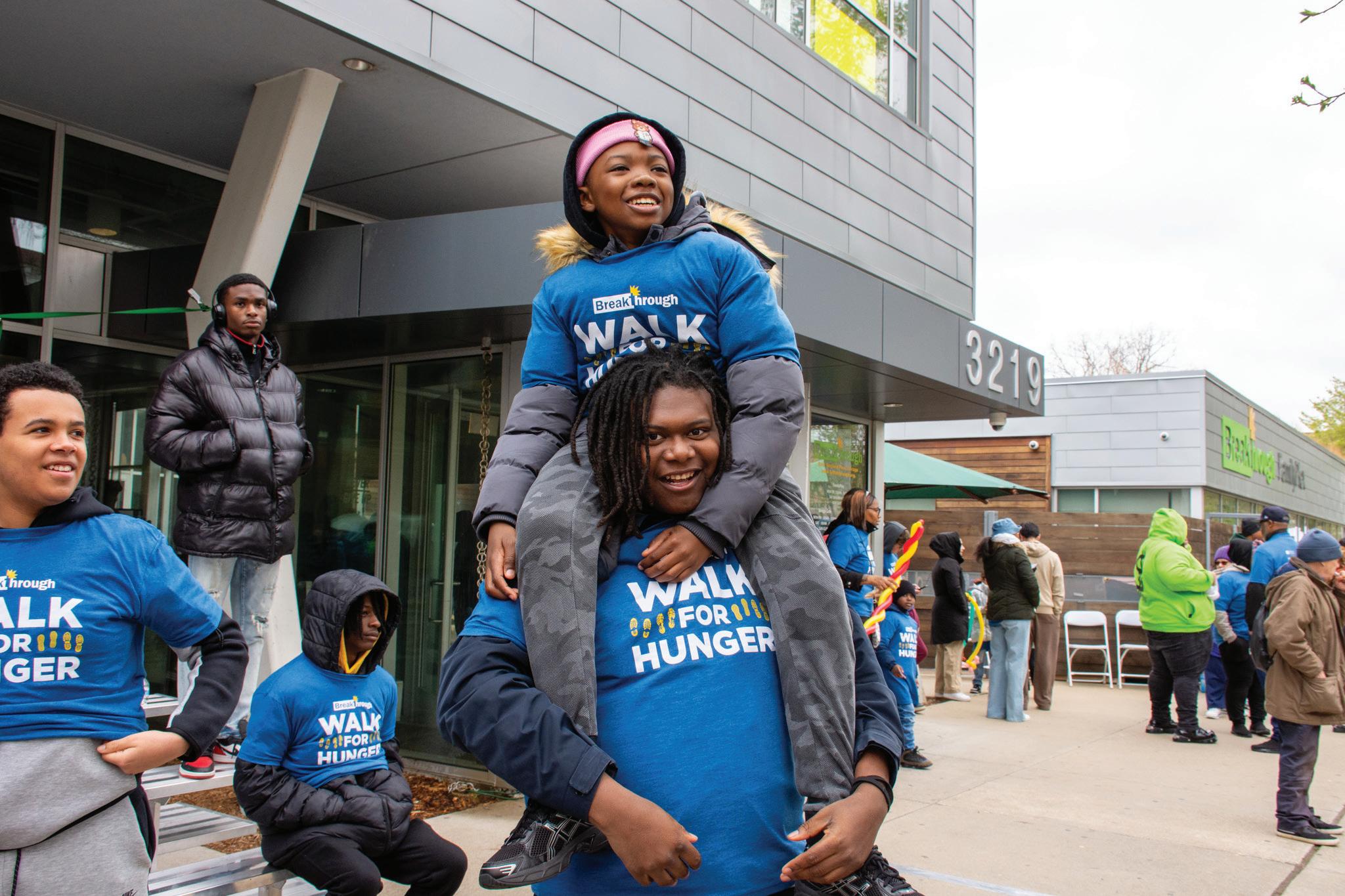

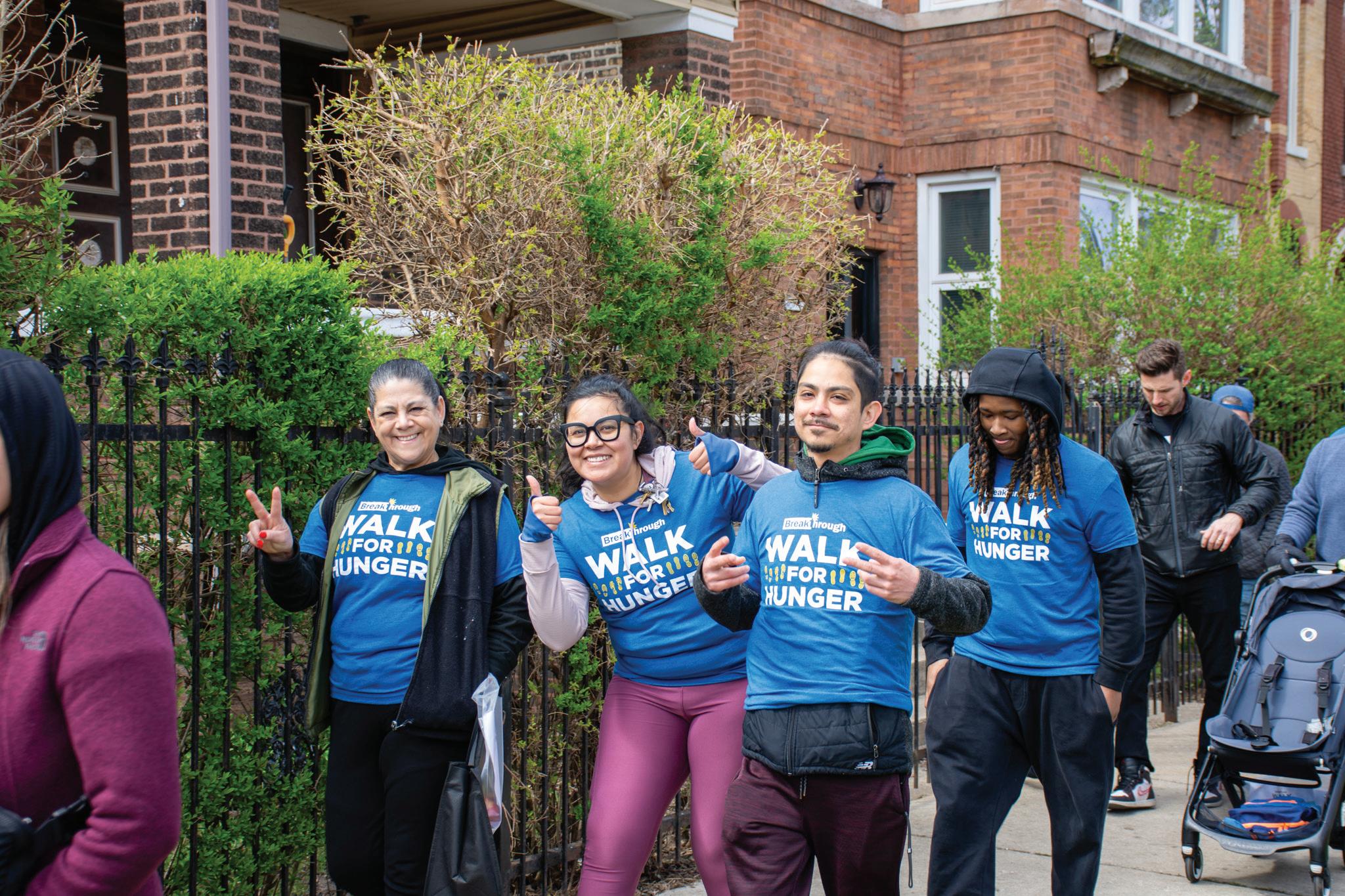
n a cool spring day, a sea of blue shirts filled the streets around Breakthrough’s campus in Garfield Park as community members came together to participate in Breakthrough’s Walk for Hunger on April 26.
Breakthrough is a community-driven organization that partners with individuals to foster meaningful connections, build skills and create opportunities for success. Guided by values like restoration, collaboration and racial justice, Breakthrough works toward a thriving Garfield Park through programs in education, economic opportunity, housing, wellness and violence prevention.

This annual event is a one mile walk to raise funds and awareness for food insecurity. After the walk, participants enjoyed food, music and opportunities to learn more about Breakthrough’s work and how to get involved
Yolanda Fields, Breakthrough’s executive director, expressed gratitude to returning walkers and first-time participants for helping raise awareness and meet their fundraising goal at the event. Fields highlighted a new 14-unit af fordable housing project underway for vulnerable families and encouraged walkers
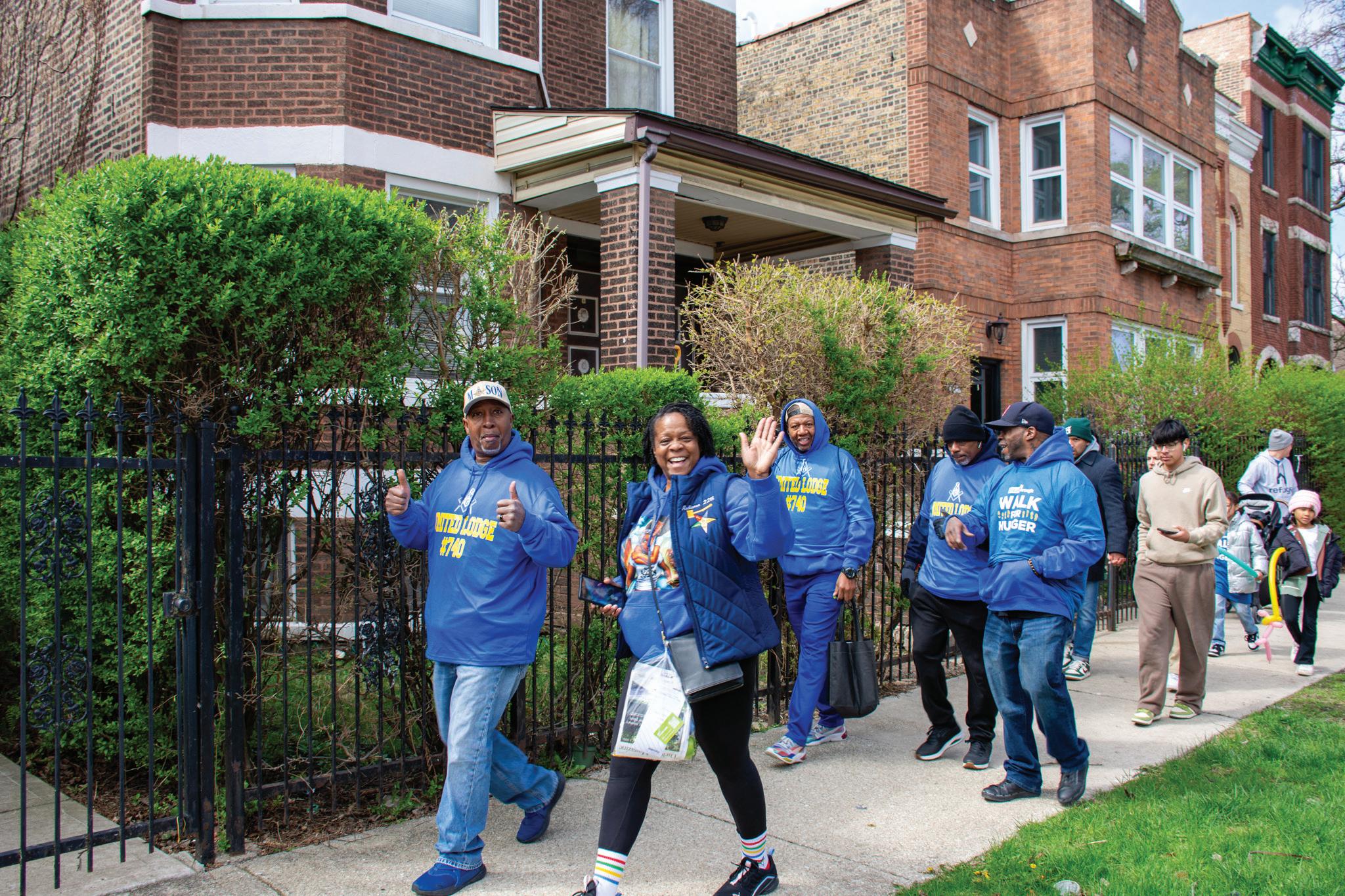
to reflect on the mission of building a community where everyone is fed, safe and housed.
The Walk for Hunger began after the Greater Chicago Food Depository ended its long-running Hunger Walk, in which the organizers had participated for 27 years, according to Antonio Daniels, the group’s volunteer and church engagement lead.
With the pandemic forcing a shift to virtual fundraising, the team decided to create their own local event to continue supporting food insecurity efforts and initially held the Walk for Hunger at George Westinghouse College Prep before having the event on Breakthrough’s campus.
“We initially started at Westinghouse. We weren’t exactly sure how we wanted to do it, but based on previous years, it had been held in a park — a wide, open space. Westinghouse High School allowed us to host it there that year. But the following year, they had their own events planned, so we decided to move it to our campus. It’s about 1.1 miles away, which is a short enough walk for our seniors, so we went with that,” Antonio Daniels said.
Akilah Smith, a participant at the Walk for Hunger and a research staff member at UIC said she attended the event through her involvement with Outbreak at UIC, which partners


with Breakthrough. Smith said Breakthrough has been providing resources to UIC students and offering valuable information about wellness through its network of partners.
“I just wanted to come out and show my support. They’ve been very supportive at UIC with the projects I’m working on, and they always host these nice events. I volunteered at their Christmas store. So, when I found out about this, I thought it would be the perfect opportunity to bring my son and show up,” Smith said.
The funds from this walk support the Food Service De partment, helping to provide meals and groceries through the Fresh Market Food Pantry, the men’s and women’s shelter kitchens and the community support center. The funds also ensure food security and stability for shelter residents and community members who rely on daily meals and pantry services.
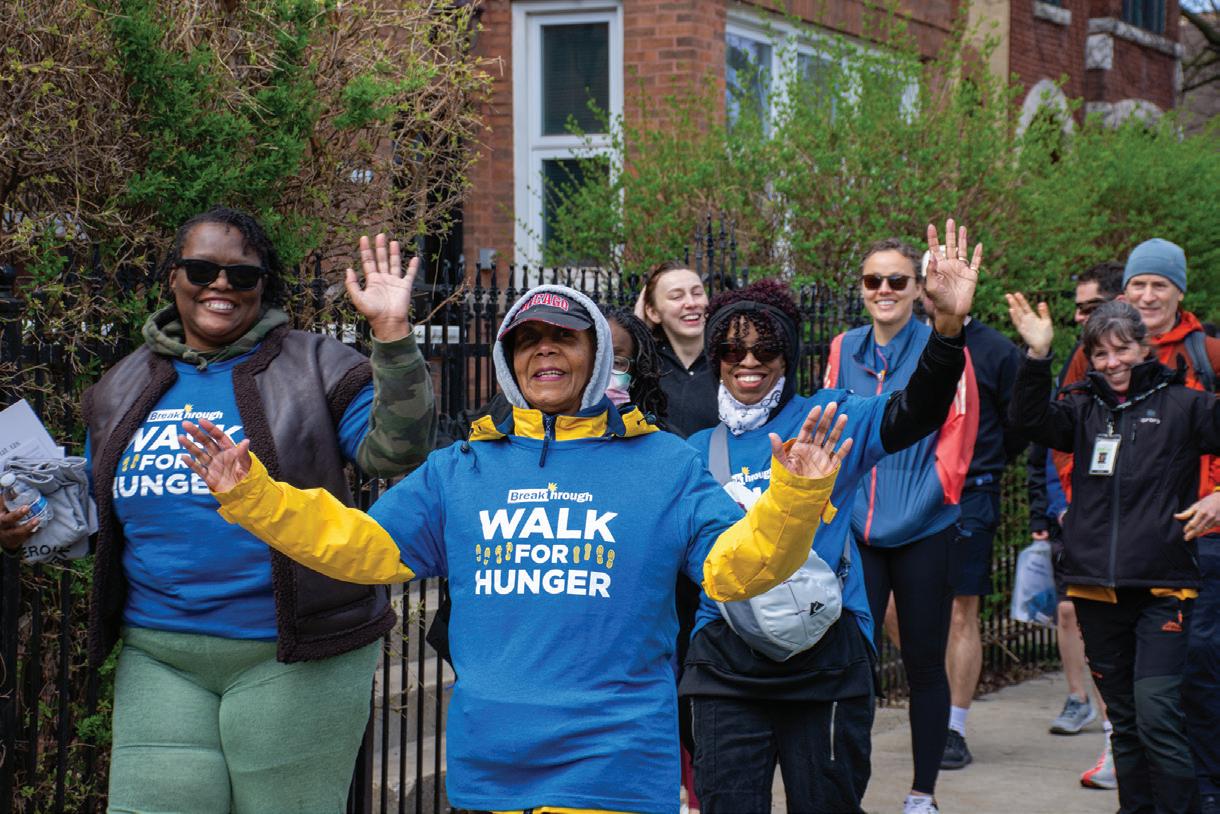

also have our newly arrived neighbors here, so the need is still very much great. The landscape for us still shows an immediate and ongoing need. Our numbers have not changed; in fact, they have trended upward,” Wendy Daniels said.
One of the goals of the walk is to spotlight the disparities in Garfield Park, particularly around food insecurity and food stability. Wendy Daniels said the roughly 700 people who signed up for the walk sent a loud and powerful message about the urgent need for change.

“We’re looking to meet the needs of the folks in the community, so that is another one of the goals — to really highlight what the disparity is and what the need is,” Wendy Daniels said.
“So every year we’ve had a spring appeal here at Breakthrough that addressed different things, but we had a spring appeal called Hunger Hero that helped us address the food service needs in our department. Our Walk for Hunger is our spring appeal, which addresses the needs of the food service department,” Antonio Daniels said.
Wendy Daniels, the organization’s food services associate director, reflected on the current state of food insecurity in Garfield Park and the surrounding communities they serve Wendy Daniels and Antonio Daniels are wife and husband.
She said that during the height of the pandemic, the number of individuals seeking assistance tripled. Before the pandemic, Breakthrough re gularly served families each month and even as COVID-19 has receded, the demand for support has remained strong
“The pandemic moving out of it hasn’t really changed things — we haven’t moved the needle much. ‘What do we have?’ We have inflation, of course — ‘You know how much eggs cost, right?’ We
For Breakthrough’s Walk for Hunger, the organization collaborates with various other organizations in Garfield Park such as the Garfield Park Rite to Wellness Collaborative, The Hatchery Chicago, Inspiration Corporation specifically Inspiration Kitchen and Relish Chicago Farm
“Collaboration is a part of our core values, so we wanted to make sure that we were collaborating with other organizations in East Garfield Park that also address food insecurity,” Antonio Daniels said.
When asked how Breakthrough addresses not just food insecurity but its root causes, Wendy Daniels responded that food is a universal connector — whether people are happy, sad, or frustrated and Breakthrough intentionally made its food center a hub surrounded by other vital programs to meet broader community needs.
“What we’ve determined, outside of the need for food, is that if we tap into the whole family as a whole, these supports help cultivate a very healthy, stable family. We believe our food, our connection, our engagement and our community here at Breakthrough is medicine and that’s how we heal together as a community,” Wendy Daniels said.
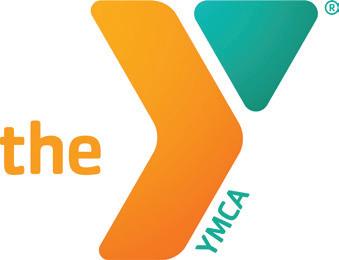
THE Y, ANYWHERE, ANYTIME
The West Cook YMCA offers inperson, on-demand, and livestreaming programs that fit your needs and your schedule. All complimentary for members to help you reach your fitness goals, reduce your risk for chronic diseases, provide a safe and welcoming space for youth, and so much more.
TAKE A TOUR TODAY.
Stop in for a tour and we will show you all that the Y has to offer to meet your needs. Tour guides are available by reservation.
RESERVE YOUR TOUR TODAY

JOIN ONLINE TODAY.
Receive $0 Joiner Fee and 50% off your first month.
JOIN TODAY

DROWNING PREVENTION
designed to reduce children’s risk of drowning by teaching essential water safety skills through our complimentary Swim Access Drowning Prevention swim lessons. Offered for ages 3-18 with sessions throughout the year.
LEARN MORE



SWIM LESSONS
focus on learning vital water safety skills and stroke development a progressive swim lesson curriculum. Offered for all ages 6 months to adults.
COMPETITIVE SWIM TEAM offers competitive swim instruction for swimmers in a supportive team environment for all swimmers at every ability ages 5 to 18.
LEARN MORE

LEARN MORE









All community health programs at the West Cook YMCA are complimentary and include a membership to the West Cook YMCA for the duration of the program.
BLOOD PRESSURE
SELF-MONITORING PROGRAM
Personalized one-on-one support for developing a blood pressure self-monitoring routine, tips for maintaining a healthy heart, and nutrition education seminars.
ELIGIBILITY:
•At least 18 years old, and
•Diagnosed with hypertension or currently taking antihypertensive medication
•Not have experienced a recent cardiac event
•Not have atrial fibrillation or other arrhythmias
•Not be at risk for lymphedema
MORE


DIABETES PREVENTION PROGRAM
Help those at high risk adopt and maintain healthy lifestyles and reduce their chances of developing type 2 diabetes. Fully recognized by the CDC and proven to reduce risk of type 2 diabetes by 58%.
ELIGIBILITY:
•At least 18 years old
•Overweight (BMI ≥25) AND
•Diagnosed with prediabetes via one of three blood tests or previous diagnosis of gestational diabetes
•Not diagnosed with T1 or T2 diabetes
•Not pregnant
If blood test not available, can qualify based on risk factors.
MORE
WEIGHT LOSS PROGRAM
Designed to help people seeking a healthier weight achieve their goals by making small, modest changes to their daily behaviors and forming sustainable healthy habits.
ELIGIBILITY:
•Must be at least 18 years old, and
•Desire a healthier weight
Not intended for individuals with specialized needs due to chronic disease or onset of a chronic disease.












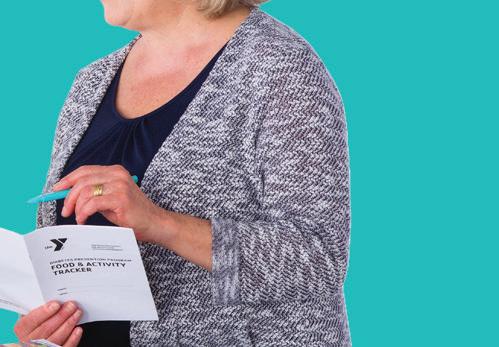


















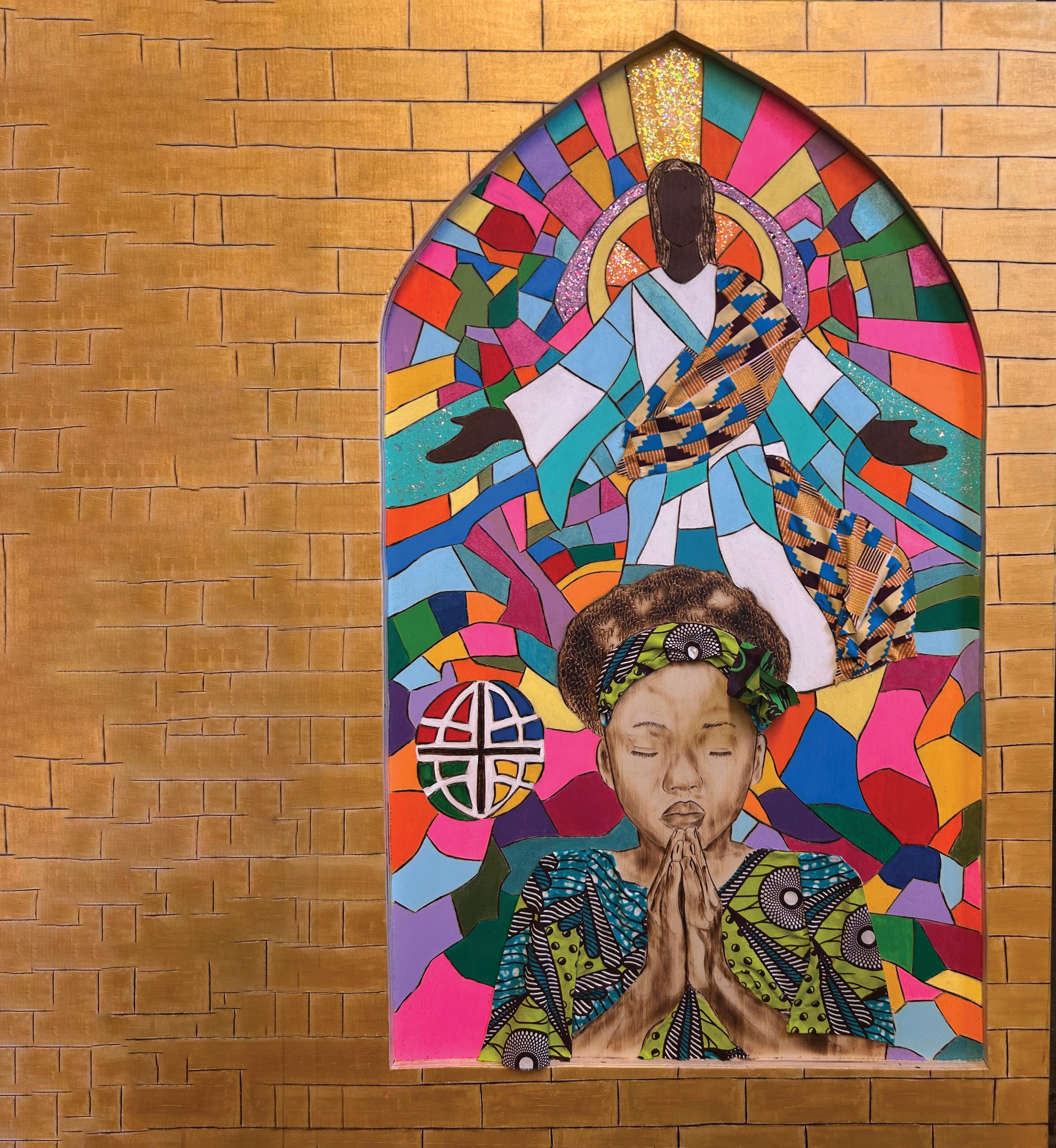

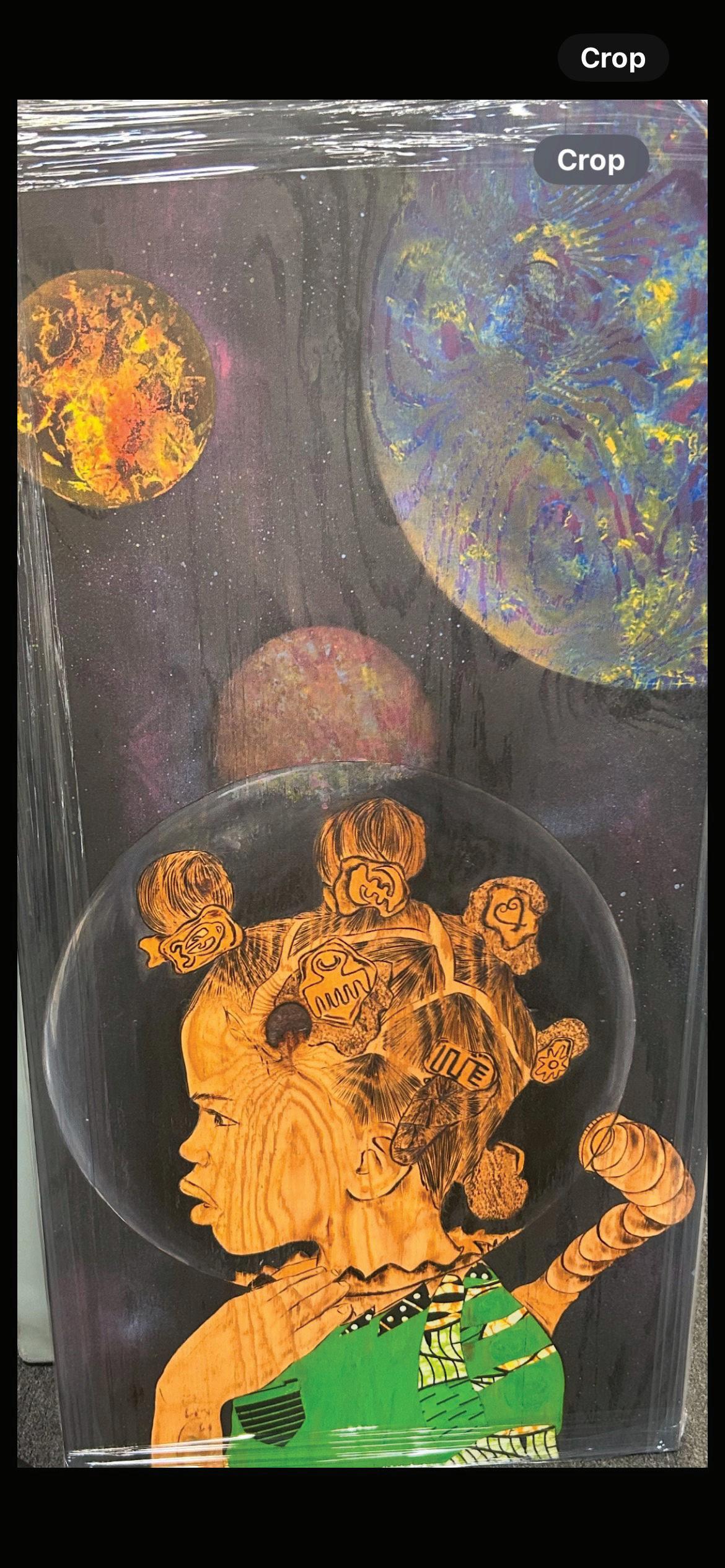
IDEBORAH BAYLISS Contributing Repor ter
n a long neglected and dusty area on Chicago’s West Side, the 345 Art Gallery stands as a beacon of hope for more revitalization in the area.
“I’m not an artist but I have a great appreciation for the arts,” said 345 Art Gallery owner and art collector Corry Williams. “Growing up, there was nowhere on the West Side I could have popped my head in and seen art. That just wasn’t accessible to us.”
As an adult with the financial ability to bring a creative space to the West Side, Williams took it upon himself to open 345 Art Gallery, a non-profit gallery and event space.
“Cultural spaces are the vibrant part
of neighborhoods and say a lot about a neighborhood…where people gather no matter what color you are and want to spend time. It’s not a Black gallery. [Are] 80 percent of my artists African American? Yes. But it’s not a Black art gallery. It’s an art gallery,” Williams said. Williams invites people to stop by and check out the gallery. It’s usually a reaction of disbelief that the gallery is right in the heart of East Garfield Park, an area that has seen some changes with some gentrification.
“I hear that a lot when people come in, and they’ll say, ‘Wow! This looks like it should be downtown or in the suburbs somewhere.’ I’m like no! It should be right here. It’s like we don’ t deserve something like this.”
The first goal was to provide a beautiful environment to create and showcase art by artists, Chicago Public School students and others. The second goal was to provide an aesthetically pleasing multipurpose space for private events.
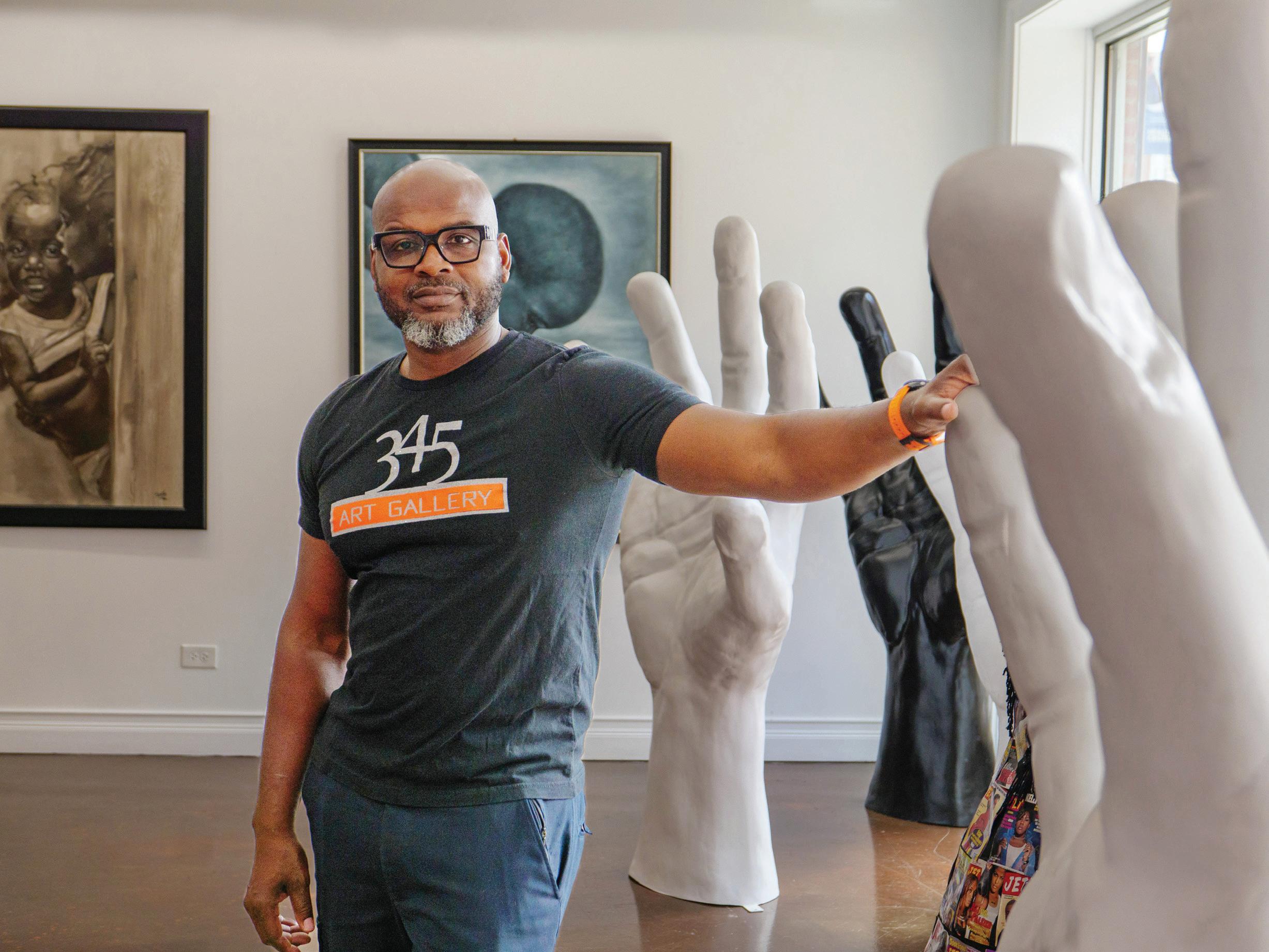


In an area with hipsters and loft style living, Williams surprisingly faced push back from some residents
When he purchased the building which was an old storefront church at the time, he had to go through the process to get the zoning changed to the art gallery.
“There was pushback from people in the neighborhood that didn’t look like me,” he explained. “They actually stayed in this, like, studio space behind me, in like, a warehouse studio artist space.”
Reluctant to make the issue about race, Williams said he felt the push back was because he is Black man opening an art gallery or that he had an ulterior agenda.
“You would think they would have been very supportive of an art gallery coming into the area,” he said. “I think it was a
sense of entitlement also.”
Other members of the community provided tremendous support and trusted there was no hidden agenda for what he was bringing to the neighborhood, Williams said.
Williams also partners with Chicago Public School students for field trips and hosting art classes and other events.
One of the largest “Steppers’ Set” takes place at 345. “Stepping is a big part of Black culture where couples dance in sync in well- choreographed movements
Williams in the process of his third expansion in ten years.
“We purchased the lots to the north and we’re looking at completing that project this summer.
Come
ARTIST OSEI AGYEMAN-BADU
An art collector for more than 30 years, Williams travels frequently to places




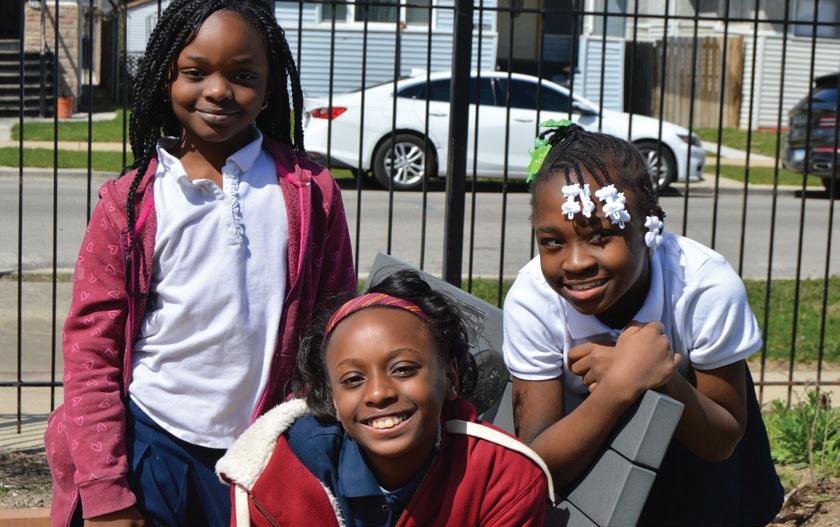


Proud to call Austin home for over one hundred years!
St. Angela School· 1332 N Massasoit · Chicago www.saintangela.org
Come visit today—we’re saving a desk for your child! For a tour call Ms. Petrice Sanderson: 773.626.2655
St. Angela School· 1332 N Massasoit · Chicago www.saintangela.org
St. Angela School· 1332 N Massasoit · Chicago www.saintangela.org
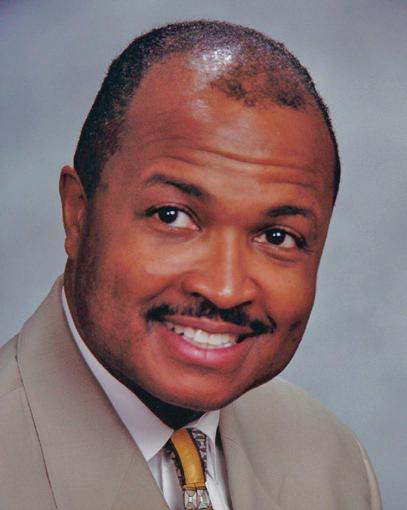
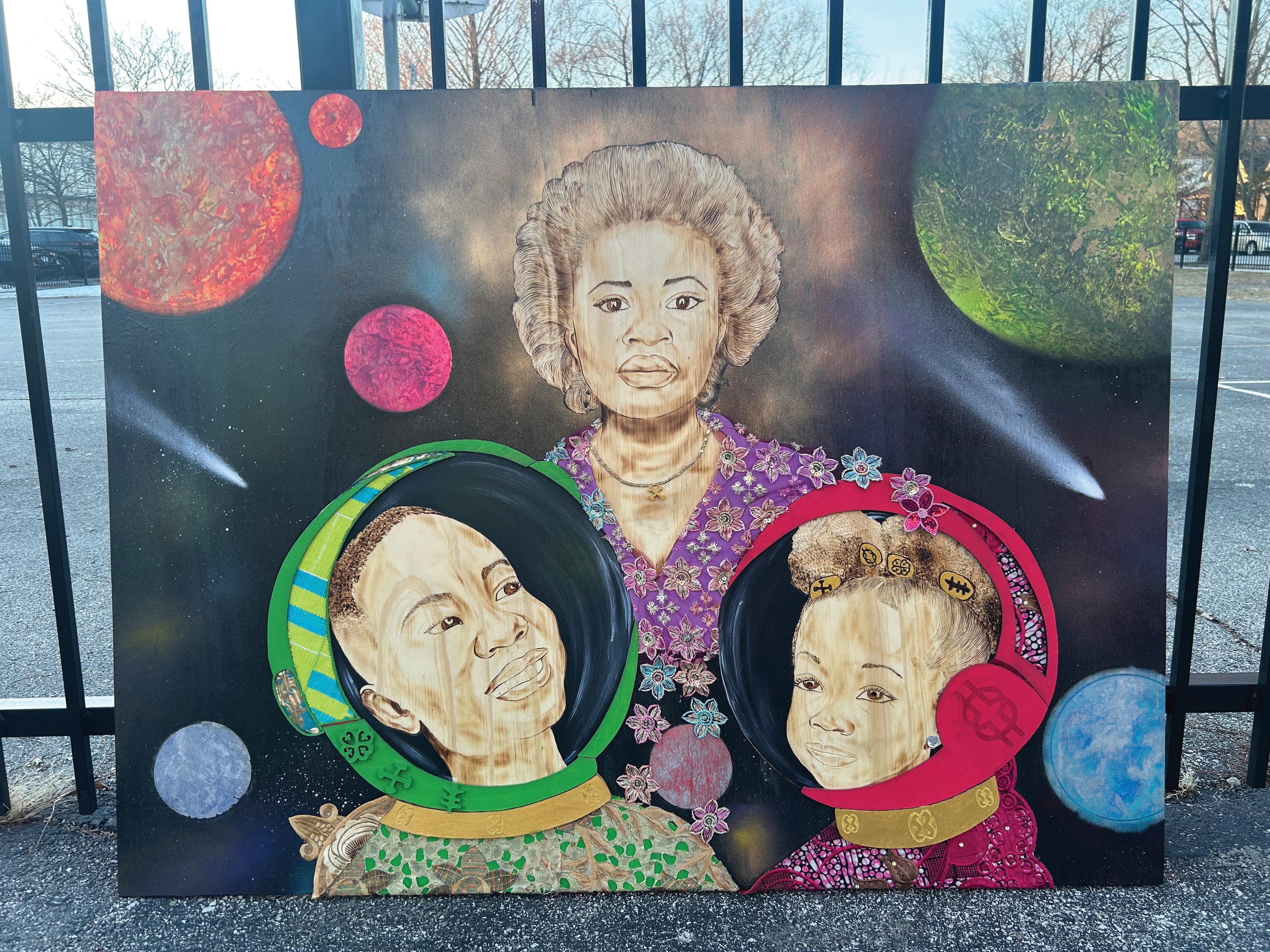
like Cuba to bring parts of the world for the West Side to experience. He’s drawn to “serious” artists who focus on their craft and find them close to home.
“I give them an opportunity to display their work and word spread within the network of artists,” Williams said. “I have artists coming to me all the time wanting to display their work.”
Osei Agyeman Badu is one of the artists currently exhibiting at 345.
“I met Mr. Williams about ten years ago,” Badu said. “I was exhibiting at the Merchandise Mart for the Harlem
Renaissance exhibit. I think it’s phenomenal that the gallery space is on the West Side. It’s a gem in a place where there’s nothing but eyesores around and seems like no one else cares.
Originally from Ghana, West Africa, Badu’s genre consists of Pyro graphy or woodburning.
Breathing life into portraits through the use of wood, fire, fabric, airbrush, paint and pencil drawings, Badu, merges his African and American upbringing to tell a new story to art aficionados.
A certified art instructor, Badu created
masterpieces for over 20 years specializing in portraits, and custom artwork.
“I use wood burning tools on wood, fabric and paint for most of my pieces,” he said. “I’ve been working with this art form for about 15 years.”
He’s also an educator who’s always coming up with new things for his students.
The gallery, he said, is a very important staple for the community in terms of providing exposure to different genres to youth who may not get to experience art in a re gular school setting.

We tell the stories that shape our community - our streets, our schools, our storefronts. Let’s keep it personal. Let’s make it thrive.




Need a Low Cost, No Frills Checking Account? Looking to Boost your Credit Score? FIRST EAGLE BANK CAN HELP!
� First Eagle’s Eagle Fresh Start Checking Certified BankOn account.
� Checkless Checking, No overdraft Fees.
� No minimum Requirement, Low Maintenance Fee.
� Easy Online & Mobile Banking AND free ATM Access.

� First Eagle’s Credit Builder Loan does not require a minimum credit score.
� Various loan amounts and terms available.
� Loan will be secured by a Savings Account funded from the proceeds of the loan.
Discover financial peace of mind and the benefit of accessible and reliable banking services. That is why First Eagle Bank is proud to offer these products designed to meet the diverse financial needs of our community. Want to know more? Call Faruk Daudbasic at 312�850�9232 or email fdaudbasic@febank.com • febank.com visit us at: 1201 W. Madison Street Chicago, IL 60607






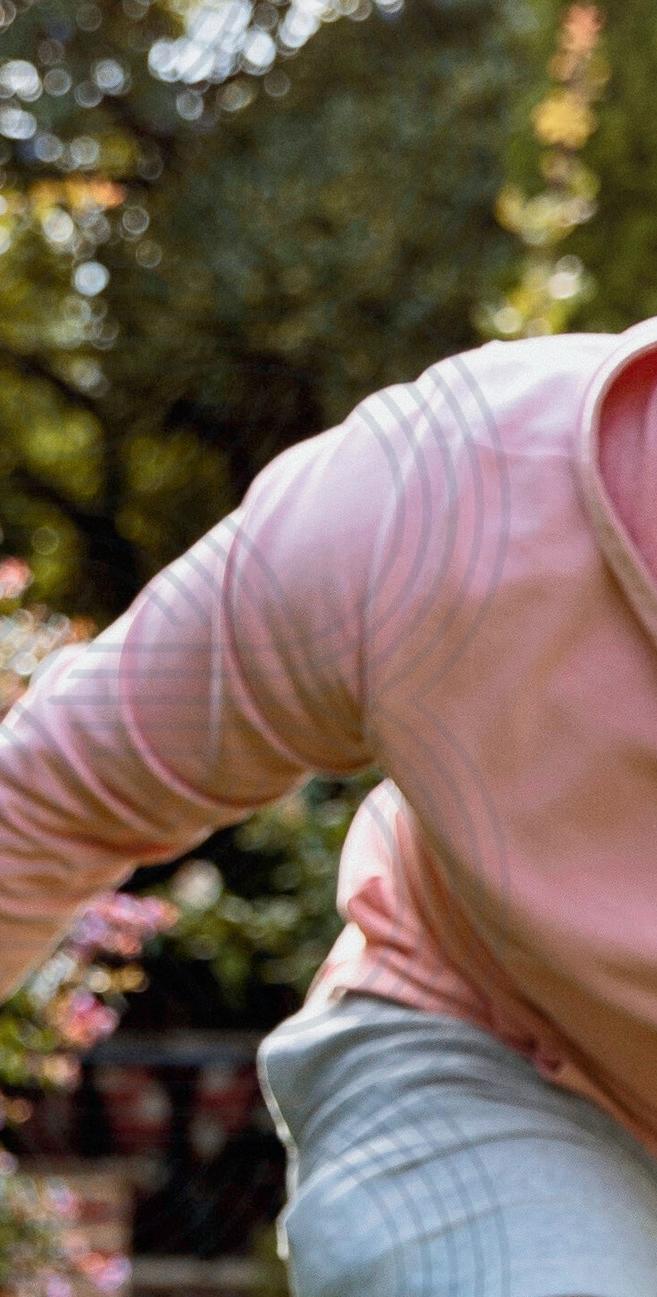









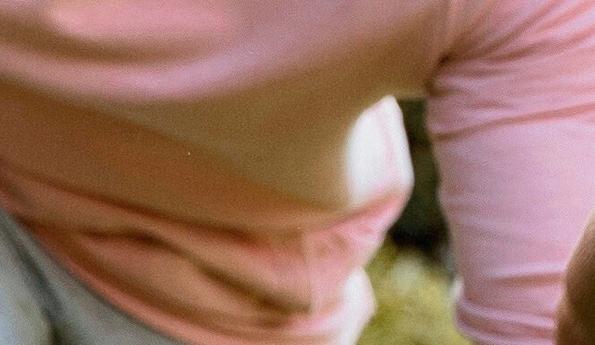
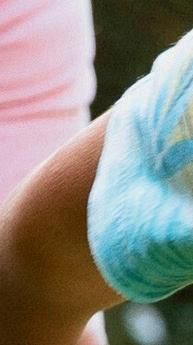












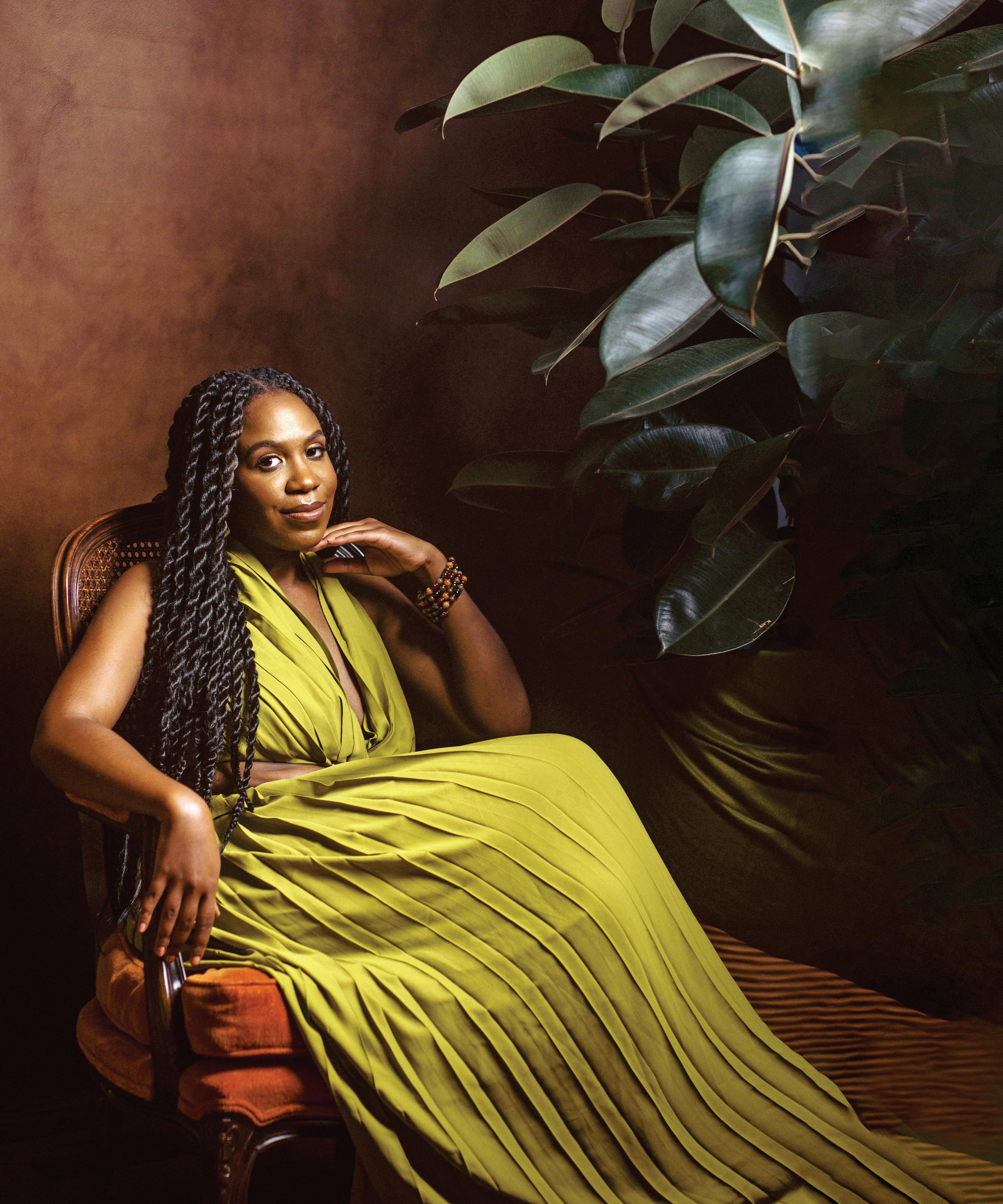


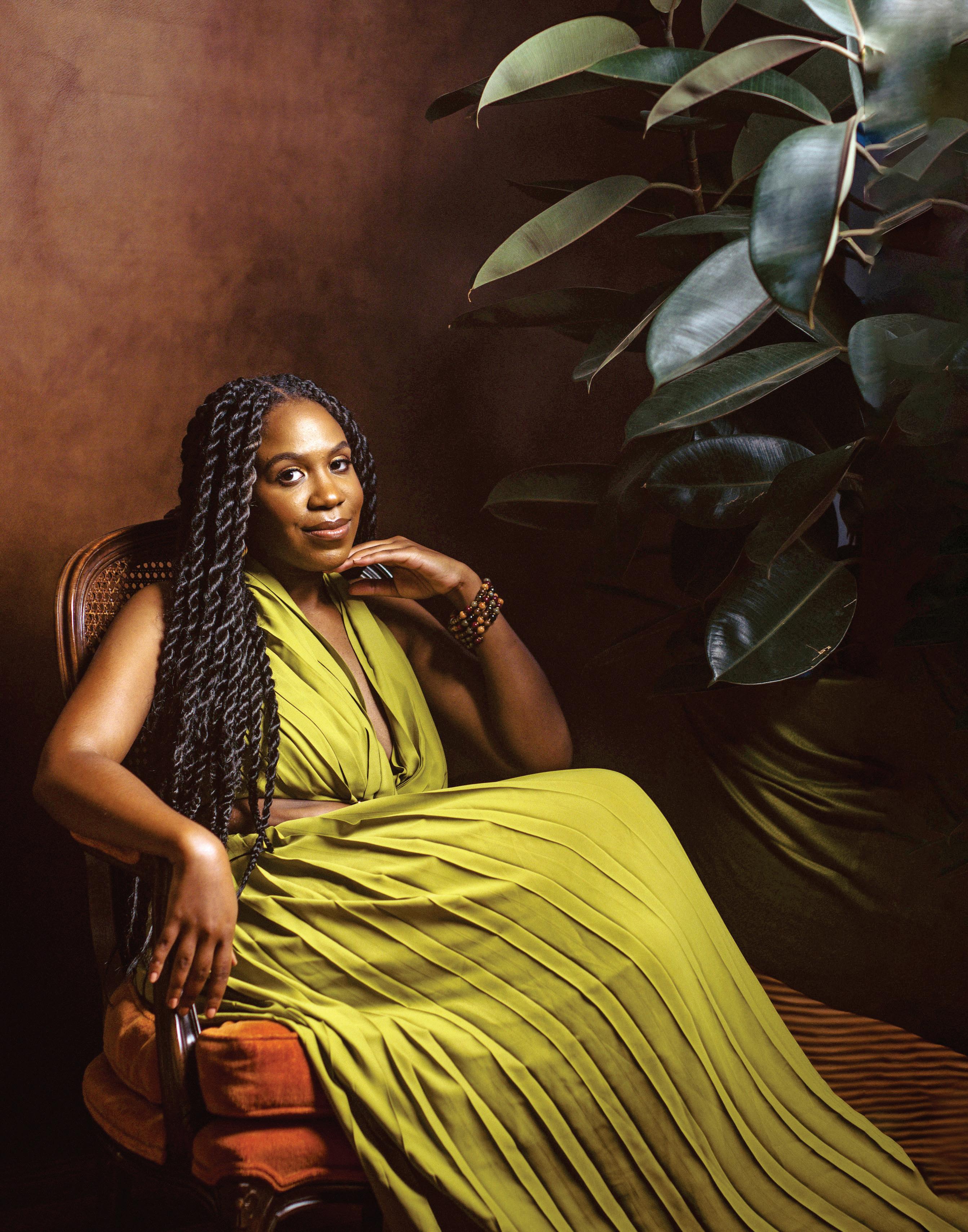
Group highlights the music of Black composers, inter nationally and locally

DEBORAH BAYLISS Contributing Repor ter
When you think of chamber music, an image of white musicians likely comes to mind.
So, it’s probably safe to say you may not be aware that the all-Black chamber music collective D-Composed exists in Chicago and is sharing its music on the West Side and South Side as well as on national and international stages.
The group’s founding executive and artistic director, Kori Coleman, created the ensemble to highlight Black musicians playing the music of Black composers, something she wished she’d seen during her early exposure to classical music as a violinist and oboist.
Her musical background, she said, did not include an introduction to the music of Black composers in the context that
reco gnized Black artists as composers. Their contributions are often overlooked or underrepresented in mainstream narratives.
“I was aware of Quincy Jones and Sam Kirk, but they weren’t taught to me as composers,” Coleman said. “I thought to myself that I know I’m not the only one who feels this way and doesn’t know about these untold histories and stories.”
By the time she reached high school, Coleman’s disenchantment with classical music and the pressure to pursue a “traditional” classical music career prompted her to walk away from music to pursue a philosophy degree at Spelman College in Atlanta.
After leaving music behind, Coleman was left with no music community connections in Chicago.
MEMBERS OF D-COMPOSED. FRONT ROW FROM LEFT: KHELSEY ZARRAGA, VIOLINIST; CAITLIN EDWARDS, VIOLINIST AND COMPOSER; AND LINDSEY SHARPE, CELLIST. BACK ROW FROM LEFT: TAHIRAH WHITTINGTON, CELLIST AND COMPOSER; SETH PAE, VIOLIST; WILFRED FARQUHARSON, VIOLIST. ENSEMBLE MEMBERS ANYA BRUMFIELD, VIOLINIST AND MALIK JOHNSON, CELLIST, NOT PICTURED. PHOTO CREDIT: SEED LYNN
Her “lightbulb” moment to create her own music community by way of D-Composed, happened in 2017 after attending a concert featuring the works of African American composers William Grant Still and Shelley Washington. The inspiration from the concert led to the creation of D-Composed.
Coleman’s research into Black musicians of Chicago found Yelley Taylor, D-Composed founding artistic director, violist and arranger.
“Yelley and I did not know each other,” Coleman said. “I reached out to him and shared my idea to start a series highlighting Black musicians and Black composers.”
D-Composed started as a quartet composed of Taylor, Tahirah Whittington, Kyle Dickson and Caitlin Edwards to help fulfill the need for Black representation in the community. Whittington and Edwards are still part of today’s ensemble
This Chicago-based creative incubator acts as a bridge between the past, present and future of representation, musiccentered experiences and the commu-

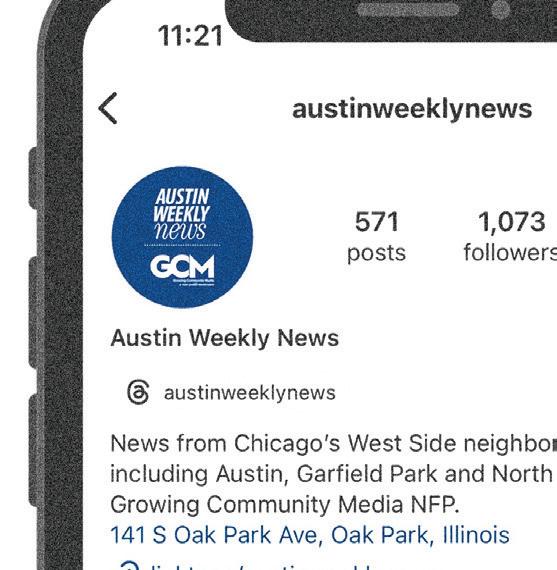

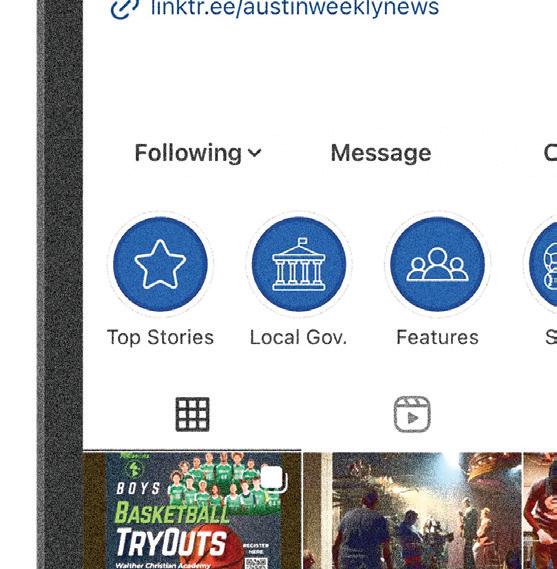

nal power of Black composers and their impact, Coleman said.
Themed “Americana in Black” and featuring the music of Black composers such as Tomeka Reid, Jessie Montgomery, Florence Price and William Grant Still, the group’s first performance took place at The Currency Exchange Cafe on Chicago’s South Side in partnership with ReBuild Foundation/founder and owner, Theaster Gates on Sept. 28, 2017.
Today, the ensemble has expanded beyond four members, to eight.

D-Composed existed when I was

younger, I feel like I would still be playing today.” It’s really about creating what I wish I would’ve seen,” Coleman said.
D-Composed has expanded beyond its Chicago boundaries with a New York City debut last year and an international debut in Sao Paulo, Brazil.
“We have audiences from all over the world engaging with our content, our work and our mission,” Coleman said with unmistakable pride.
Outside of D-Composed, the musicians also are traveling as freelancers throughout the world.
So, what’s the reaction to an all-Black chamber music collective?
People are surprised and awe struck by the image that’s so different from what’s usually seen and represented in the chamber music genre. Instead of white musicians playing and taking their bows, an all-Black group is captivating audiences.
“So many of our audiences have not seen an all-Black ensemble,” Coleman said. “Along with the awe, there’s also that curiosity that ‘I didn’t know about Black

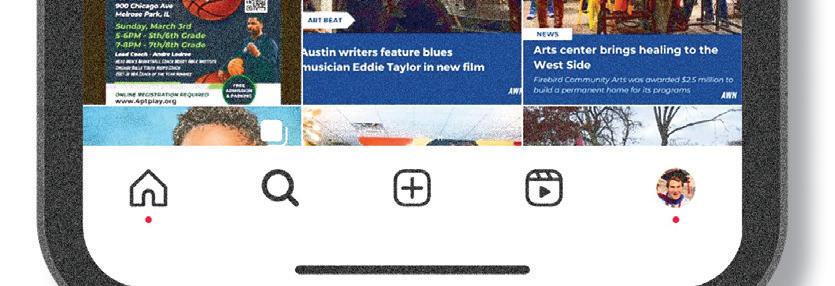







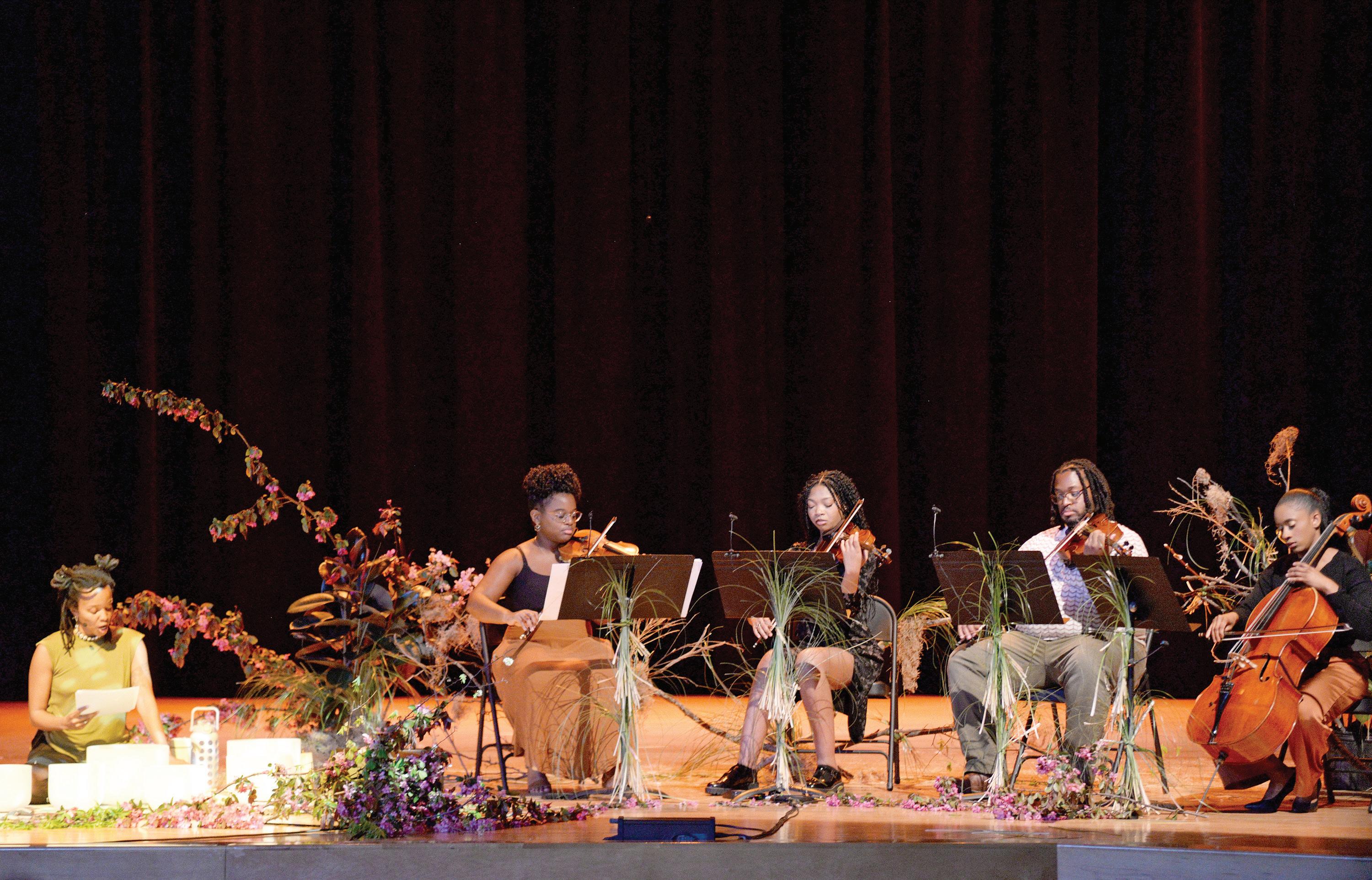
composers.’ We’re opening up a whole new world of possibilities just from being at a D-Composed performance.”
A sense of pride is another experience when Decomposed performs for Black audiences. Parents will bring their children up after a performance to speak with the musicians, Coleman added.
Many of the musicians are also teachers who work in music education.
Composed of eight musicians who play violin, viola and cello, D-Composed is primarily a string ensemble Wilfred Farquharson, 26, plays viola in the ensemble. He was also awestruck when he first heard about D-Composed
“Most people just never imagined seeing an all-Black ensemble of string players,” he said. “Usually, people are just super excited.”
He said that while some reactions are shock and excitement others come with racist overtones, with some people expressing shock about D-Composed’s high level performance.
“So many of our audiences have not seen an allBlack ensemble,” Coleman said. “Along with the awe, there’s also that curiosity that ‘I didn’t know about Black composers.’
We’re opening up a whole new world of possibilities just from being at a D-Composed performance.”
– Kori Coleman
“I’m like well, what did you expect?” We all went to the best schools in the world,” he said.
D-Composed violinist Khelsey Zarraga described growing up in a household where music was always present, saying: “My mom is a Black woman so there was always Black music in our house and my dad is Venezuelan, so I also grew up
listening to a lot of Venezuelan music.”
A D-Composed member for about three years, she had known about the group for a few years before joining it.
“I thought D-Composed was the best thing ever,” Zarraga said. “I hadn’t known about any kind of group like that at the time. Yes, we play classical instruments, but we play all kinds of music by Black composers so that could be people from the 17th century all the way up to Beyonce. Beyonce is also a composer. We play a lot of different styles of music.”
Cellist Lindsey Sharpe and violist Seth Pae are also D-Composed members.
D-Composed has a long-standing relationship with award-winning poet, songwriter, and performing artist Jamila Woods from Chicago’s South Side.
Woods and D-Composed collaborated for a West Side healing experience April 27 at The Kehrein Center for the Arts
Reesheda Graham Washington, founding executive director of the Kehrein Center for the Arts, said it was an easy ask in terms of the kind or programming that D-Composed stands up and prioritizes at the intersection of Black liberation and classical music.






























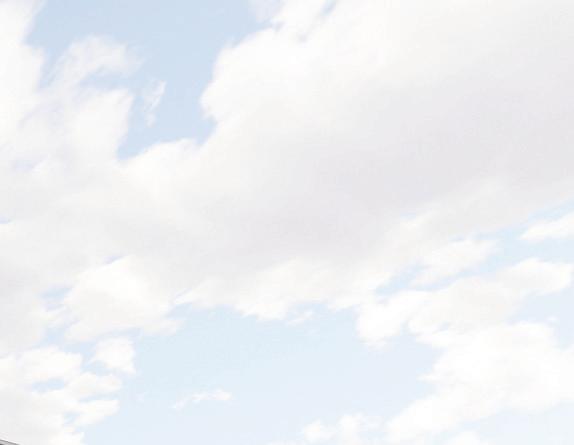
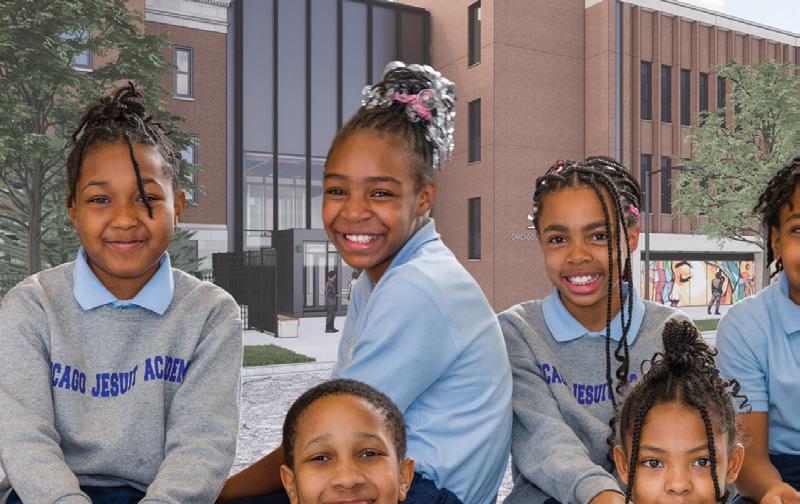
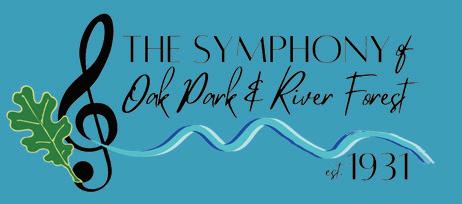

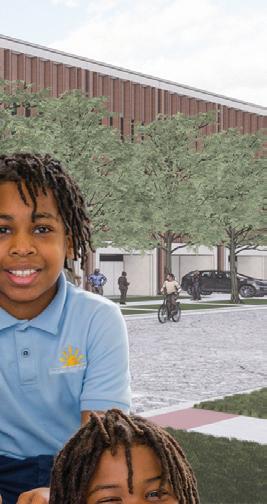


















































HECTOR CERVANTES Contributing Reporter
very Saturday morning at the Gold Dome in Garfield Park, runners and walkers lace up their shoes, gather in a circle to stretch, laugh, play rock-paper-scissors and break the ice with new faces as energy and chatter fill the air for a 1 mile walk or 2 mile fun run hosted by Peace Runners 773.















Peace Runners 773 is a grassroots wellness collective creating space for community-led healing through movement. Rooted in Garfield Park, the group offers free runs and workouts for all fitness levels, addressing pressing local health disparities like obesity, mental health and lowered life expectancy.
Nicole Midderhof f heads community engagement for Peace Runners 773. She describes the environ-
































































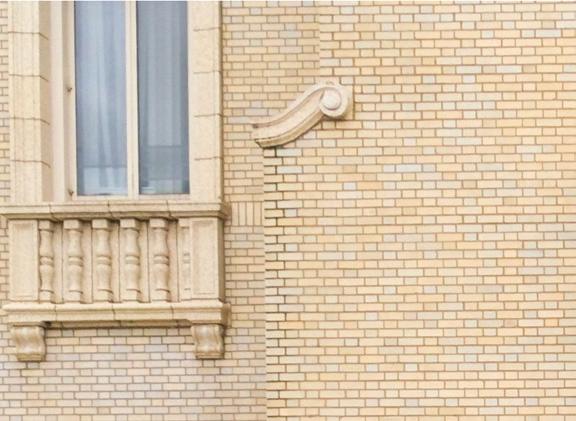
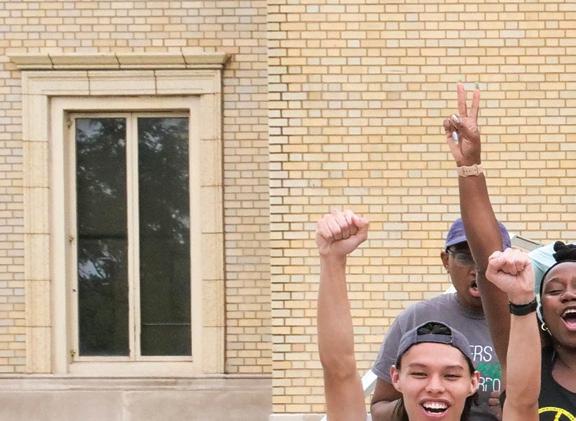

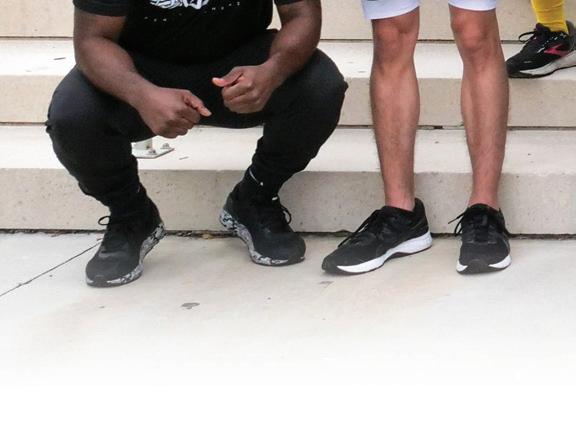





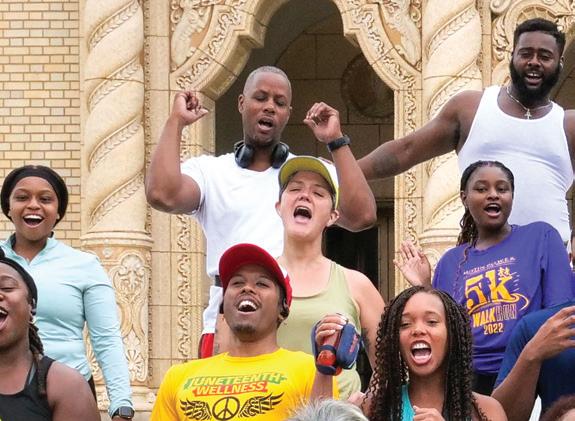
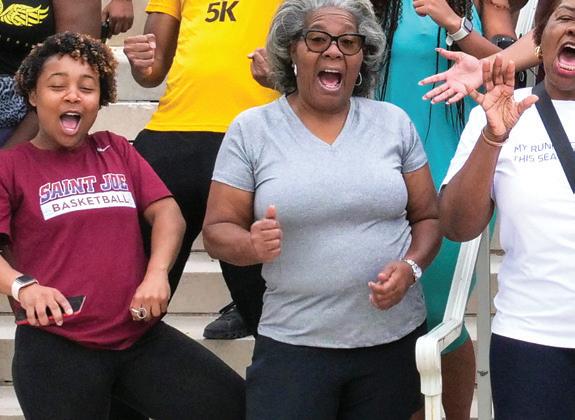
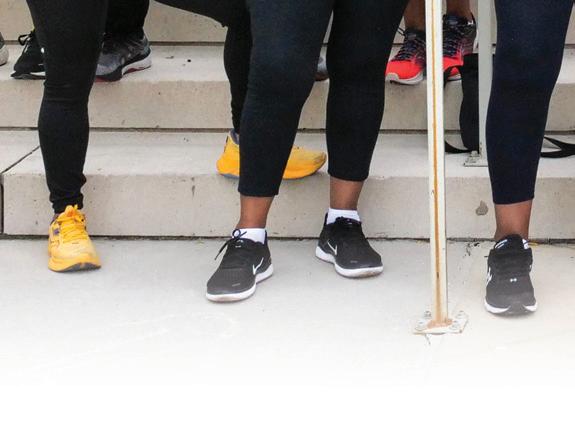







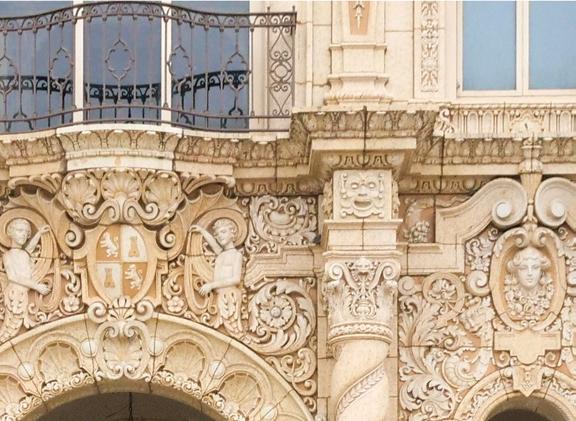

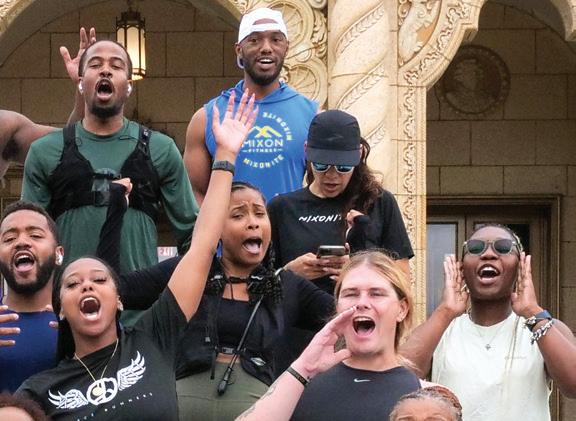

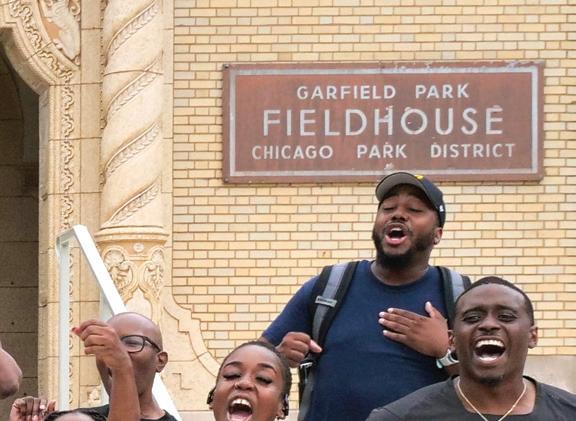
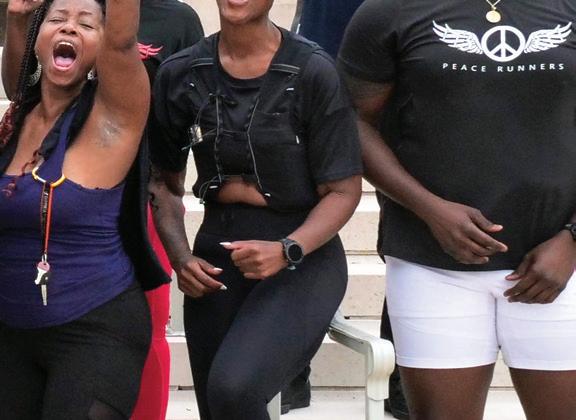



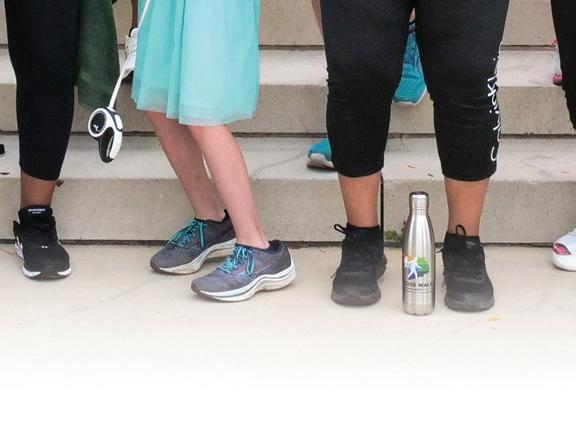











ment as a welcoming, family-style atmosphere where people are met exactly where they are.
“It doesn’t matter your size, height, or body type. It doesn’t matter if you’ve never run before or if you’re a pro — we’re all working together and supporting each other. I think that’s what makes our personalities and the love we share so special. It creates a stronger family bond Everything we do is family-oriented,” Midderhoff said.
Austin neighborhood resident Rosie Pearson joined Peace Runners 773 to support her nephew and grow closer to him. Pearson is a member of Young at Heart, a
branch of Peace Runners 773 for runners aged 55 and older. She has seen how the organization is full of positive energy
“Everybody supports you — working with them makes you feel comfortable and allows you to do what you need to do at your own pace,” Pearson said.
On April 12, Peace Runners 773 teamed up with ANTA, a major running organization from China, after they reached out upon seeing the community work the organization has been doing in Chicago. The collaboration included a community workout where ANTA gave the crew an exclusive first look at their unreleased running shoe.
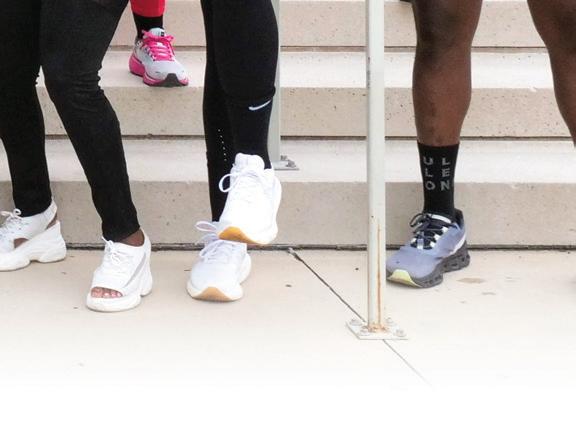

















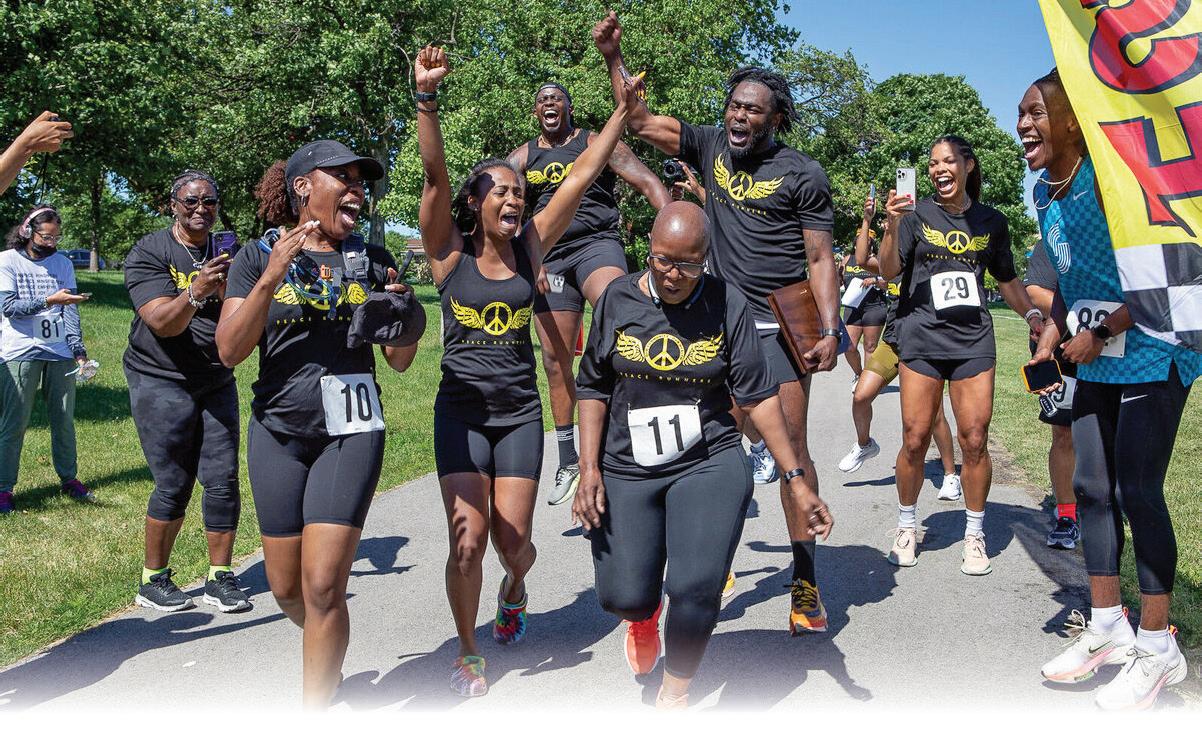







Jackie Hoffman, CEO and founder of Peace Runners 773, reflected on how Peace Runners was founded on Juneteenth in 2020. It was inspired by his mother and the troubling life expectancy gap in their community.
Hoffman urged attendees at the ANTA event to prioritize their health by getting regular checkups and monitoring key health indicators. Highlighting his mother’s health transformation — losing over 60 pounds and reducing her medications from 13 to none — Hoffman stressed the importance of striving for a better quality of life.
The name Peace Runners 773 represents
“Everybody supports you — working with them makes you feel comfortable and allows you to do what you need to do at your own pace” – Rosie Pearson







































a mission to bring peace and a positive impact to Chicago’s West Side. It originated from a desire to support community wellness, inspired in part by Hof fman’s experiences caring for his mother’s health.
The group defines holistic health and wellness as a focus on nurturing the mind, body and soul. Their program emphasizes inner well-being, which then reflects in one’s external health and feelings.
“By hosting a lot of events where people can see the positive impact on the West Side, it brings more people out. Most people have the stigma that the West Side is dangerous, or that it’s a place you






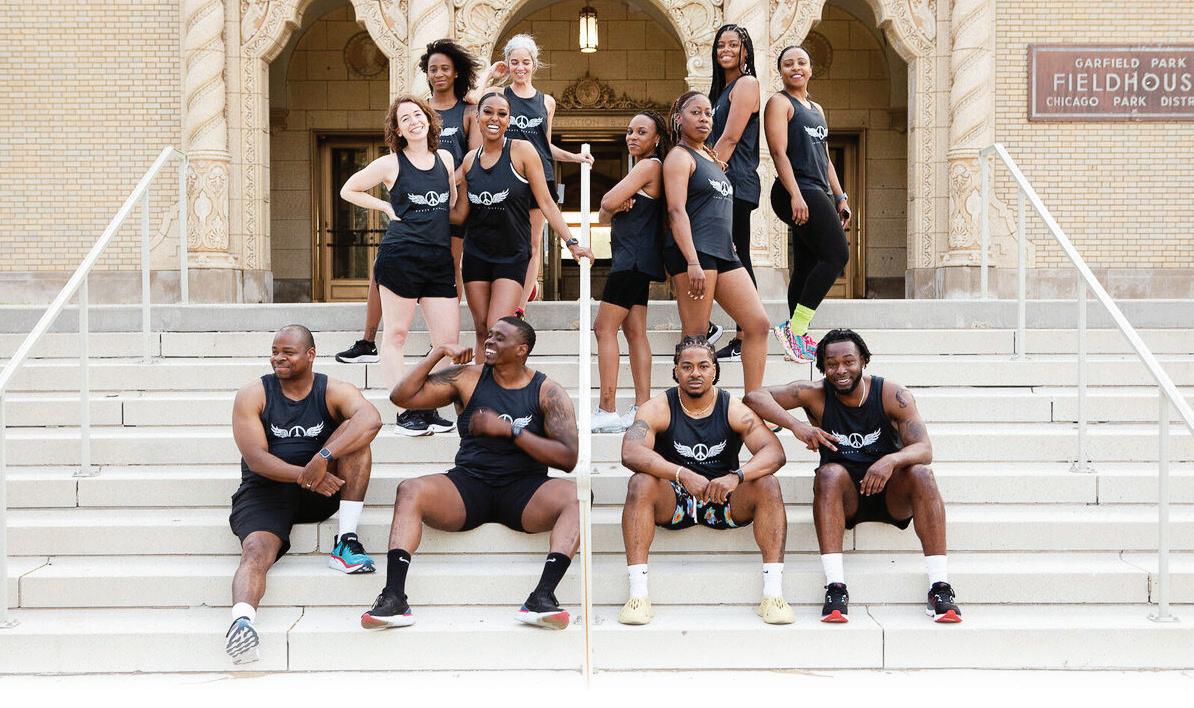






shouldn’t go. But by being like mobile flowers of the West Side — that’s what I call ourselves, mobile flowers — together we do hard things. No one is left behind, and no one is left astray. We are committed to uplifting each other,” Midderhoff said.
As a top board member, Midderhoff shared that Peace Runners has grown significantly, expanding from 12 members to over 300. In the past two years, the organization has increased participation in events like the Shamrock Half Marathon, with over 100 members now taking part
“Our programming includes OWR (Out West Run), which offers a 14-week extensive plan to help participants become


healthy and active for the 13.1-mile race on the West Side. We also provide nutrition classes, mental health awareness sessions, and physical running, training, mobility, and strength exercises,” Midderhoff said.
For Midderhoff, being able to provide resources to the community is huge and essential as the goal is to tap into food, nutrition, and more to offer a well-rounded understanding of what health really means.
“Together we do hard things. We do hard things together. We are global now. We have a lot of members that’s doing the London Marathon and the Sydney Marathon,” Midderhoff said.
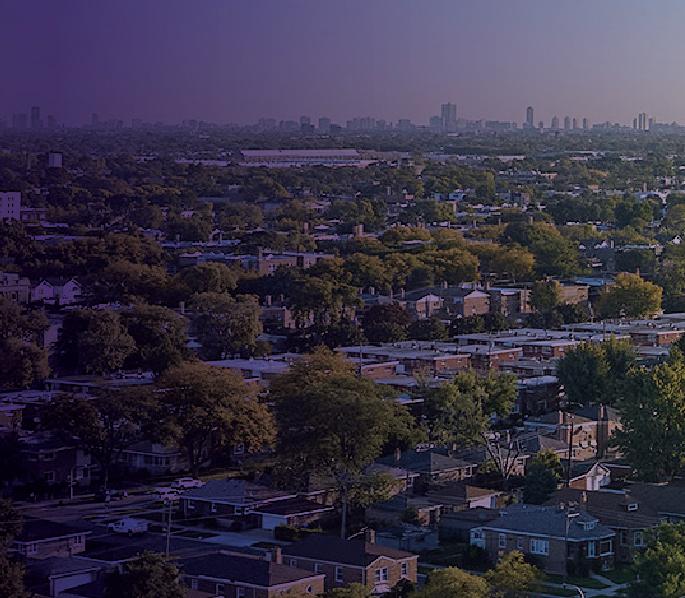

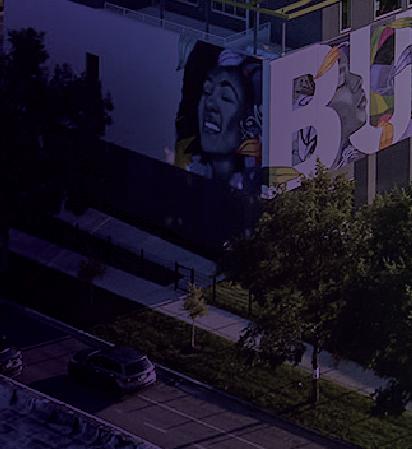



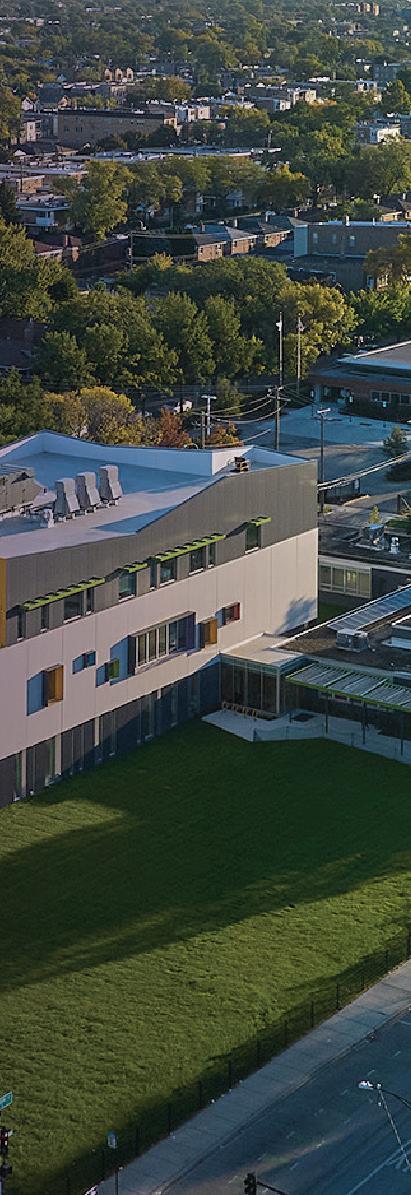
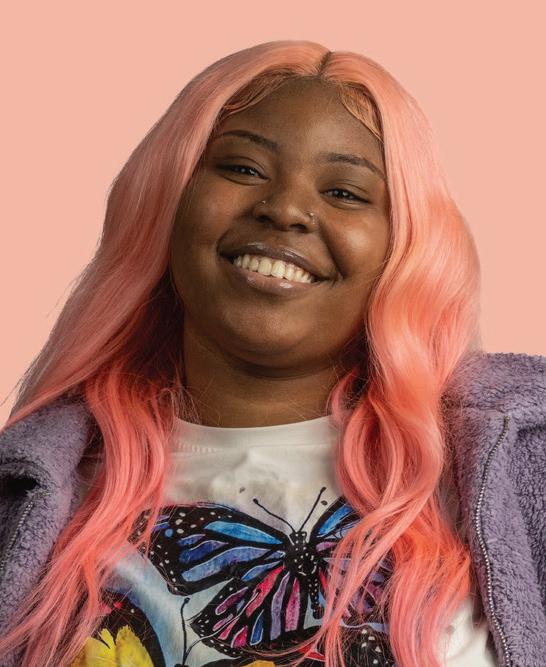





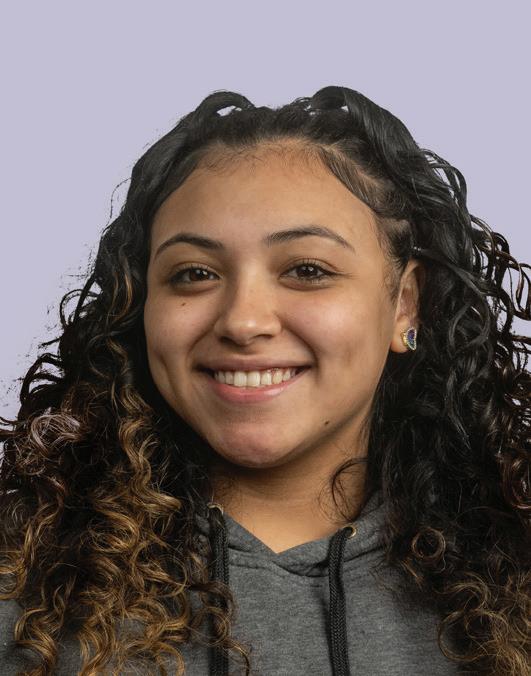








AN
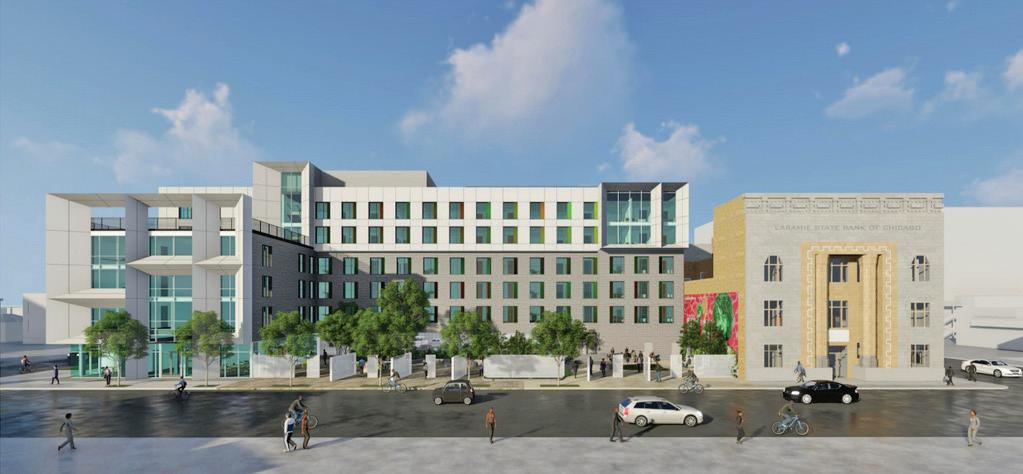

Athena Williams, Executive Director Oak Park Regional Housing Center
LARAMIE STATE BANK REDEVELOPMENT PROJECT:

5200 -5226 W. Chicago Avenue
78 New Construction rental units
Fitness room
On-site laundry facilities
Community meeting room
Resident event room
Rooftop with city view
Restoration of a Historic Landmark
OTHER SERVICES:
Rental Counseling
Apartment Referrals
Housing Provider support
Homebuyer and Homeowner support
Housing policy presentations
Industry Partner Referral Program
Land acquisition and development
ADMINISTRATIVE OFFICE
1041 SOUTH BOULEVARD, OAK PARK, 60302
708-848-7150
INFO@OPRHC.ORG
PROGRAM OFFICE
WEST COOK HOMEOWNERSHIP PROGRAM
5934 W. LAKE ST., CHICAGO, 60644
773-887-5187
INFO@WESTCOOKHOMEOWNERSHIP.ORG




